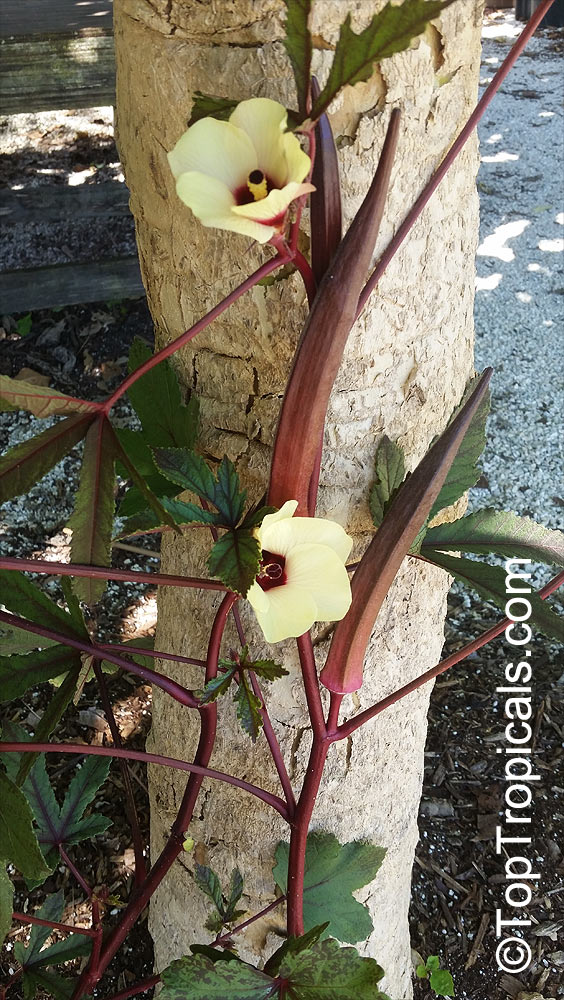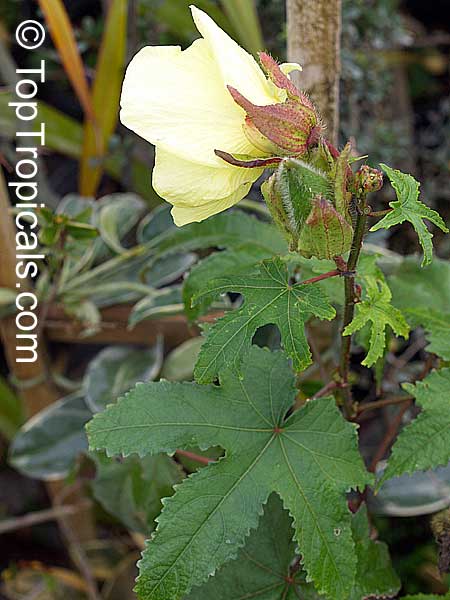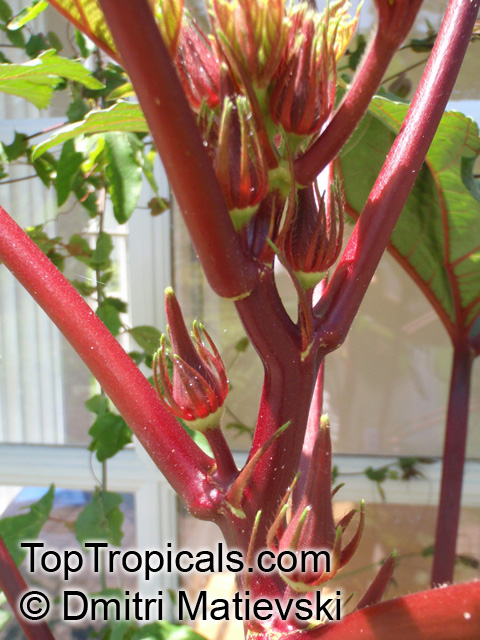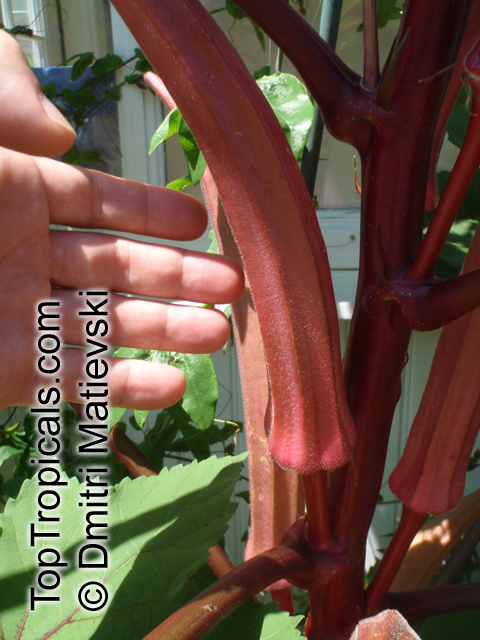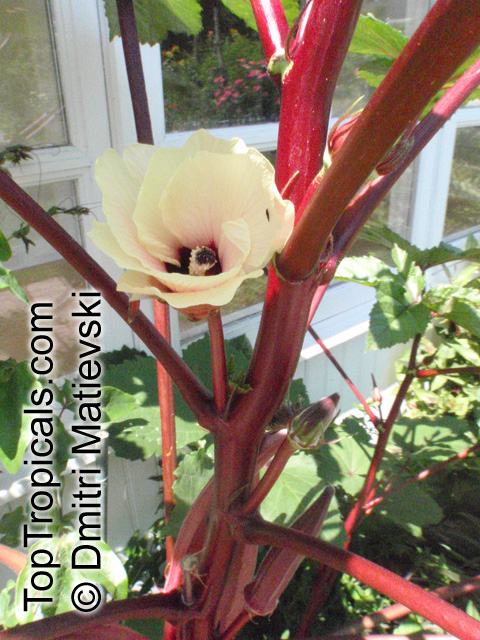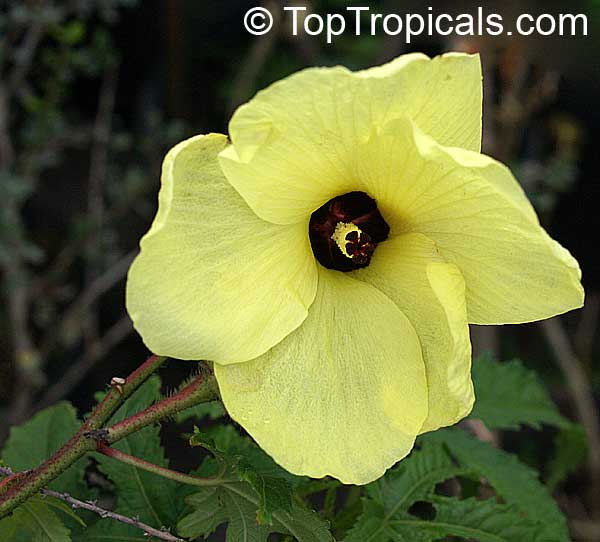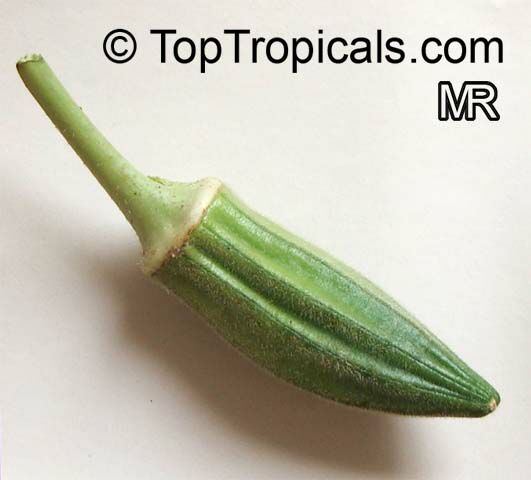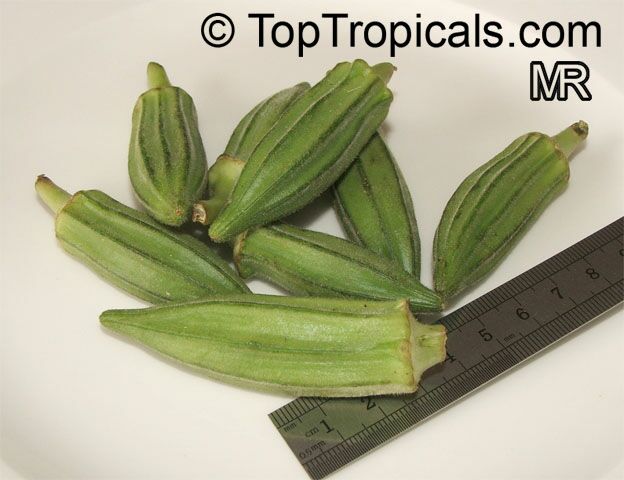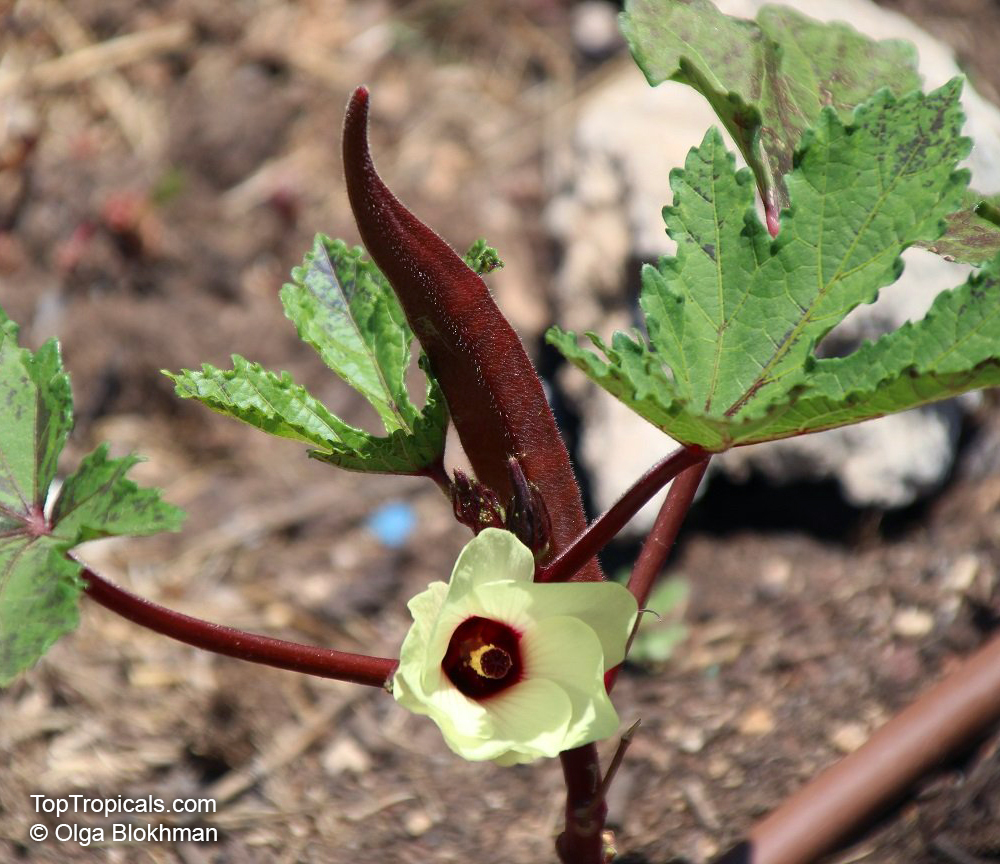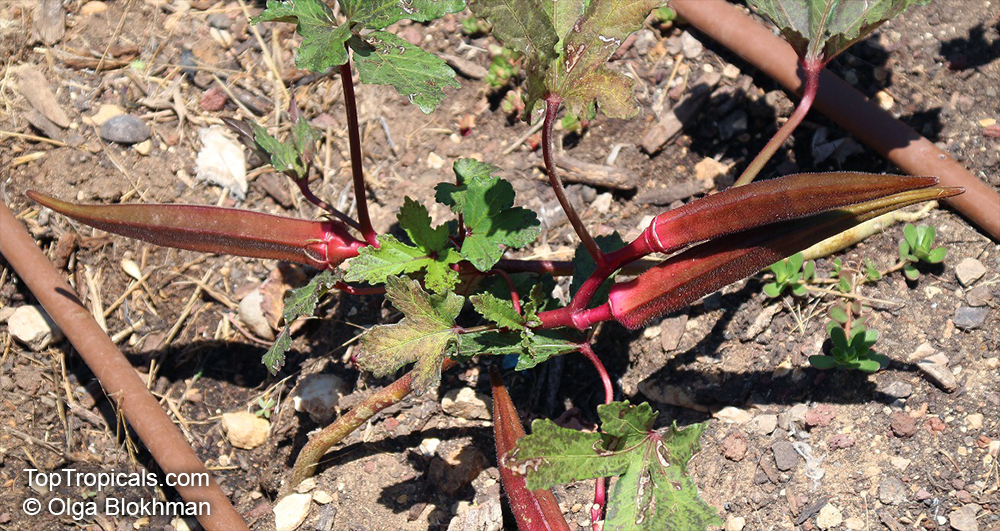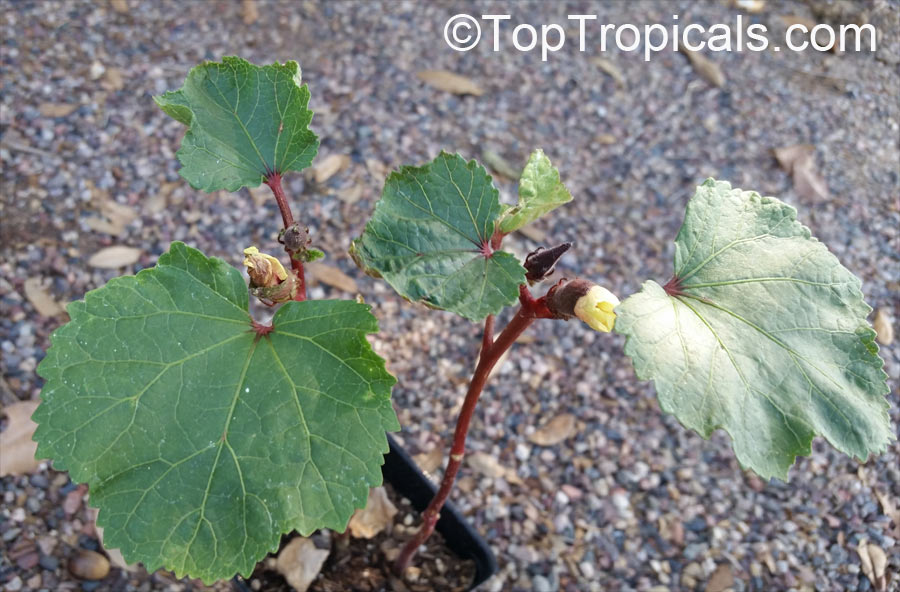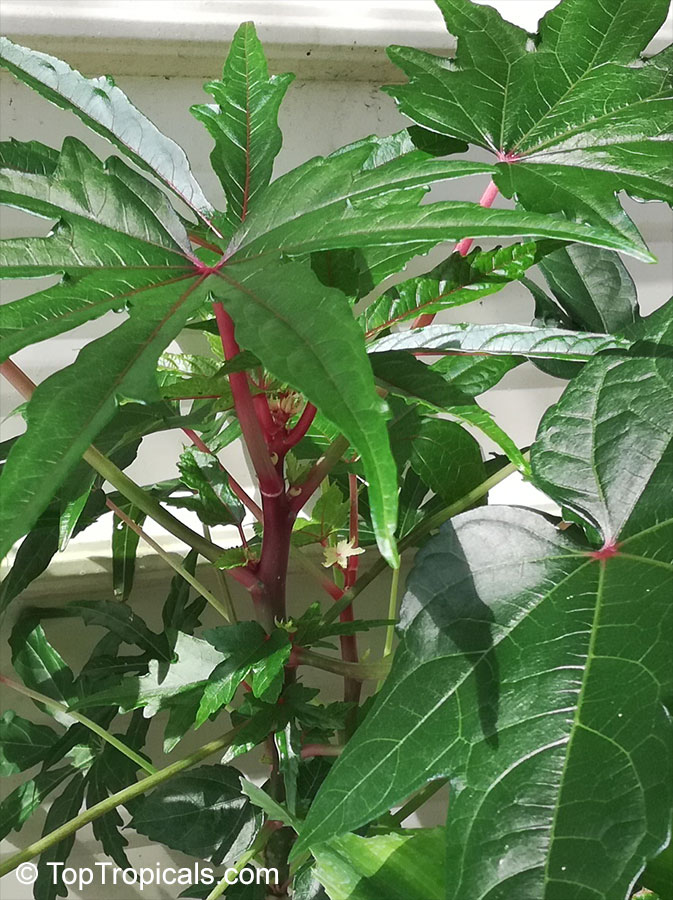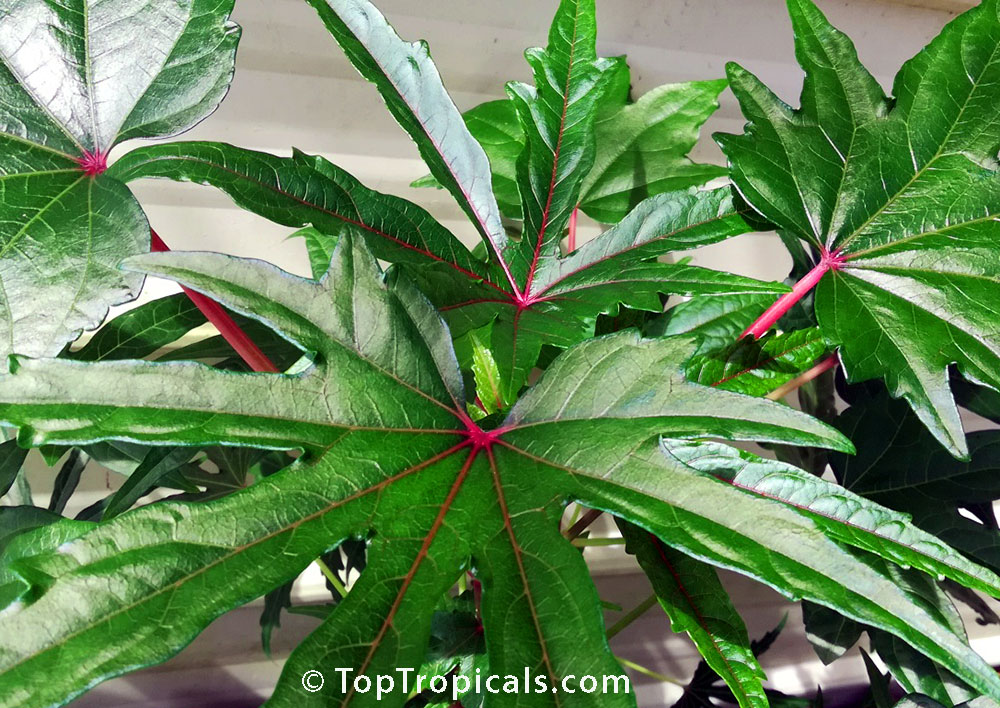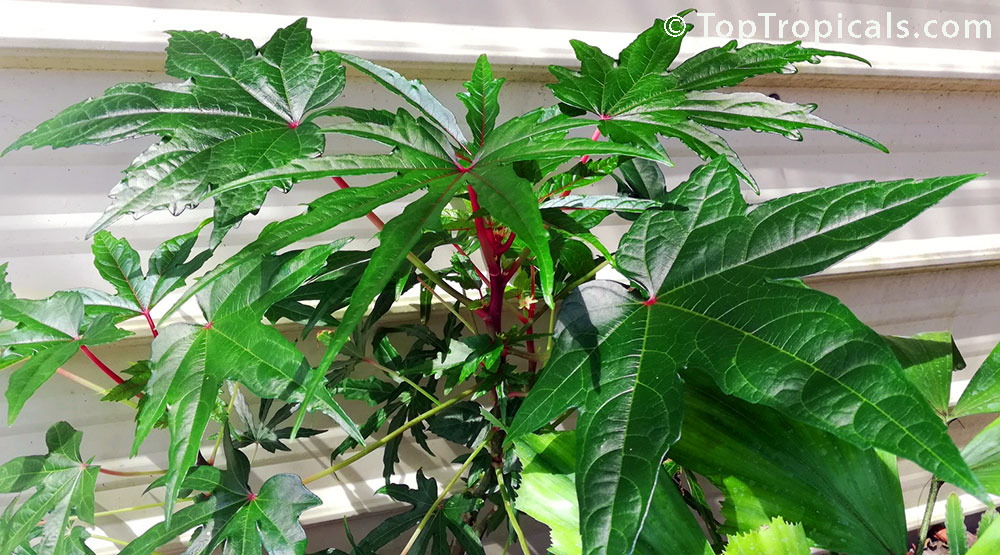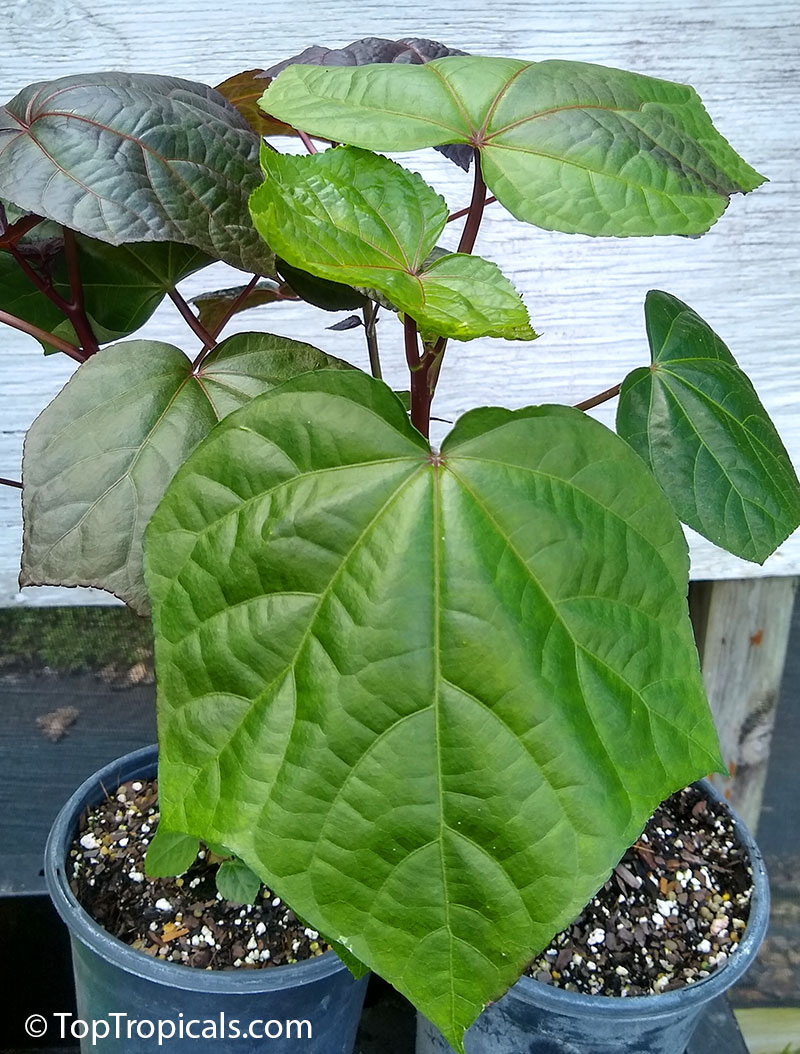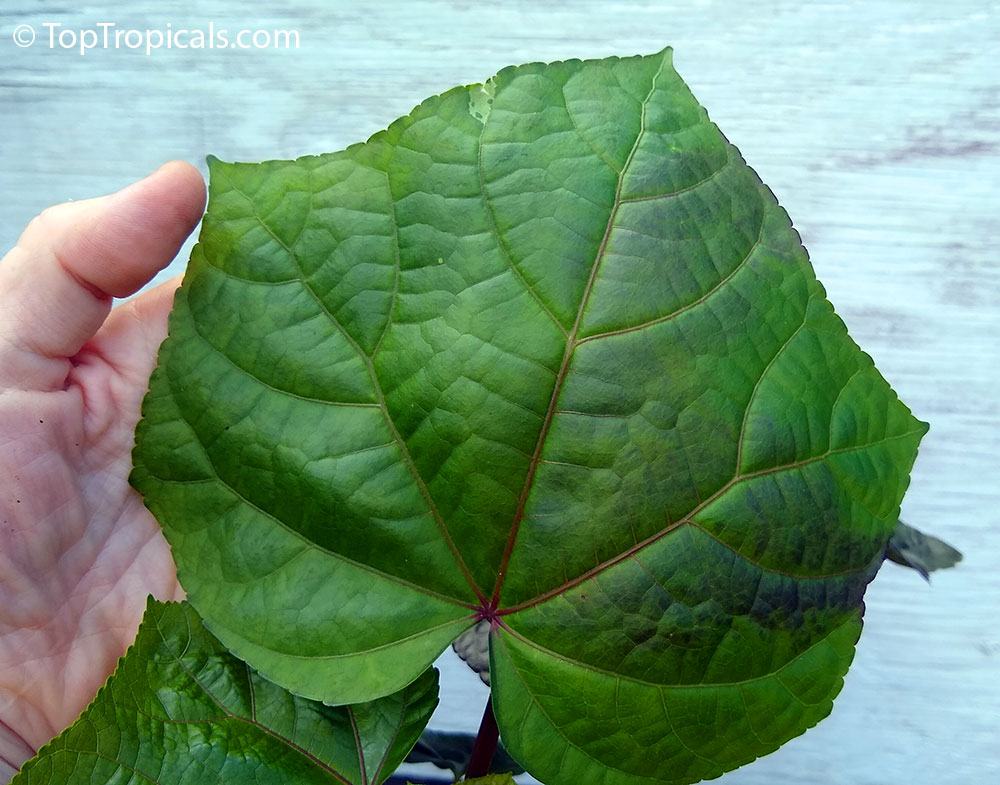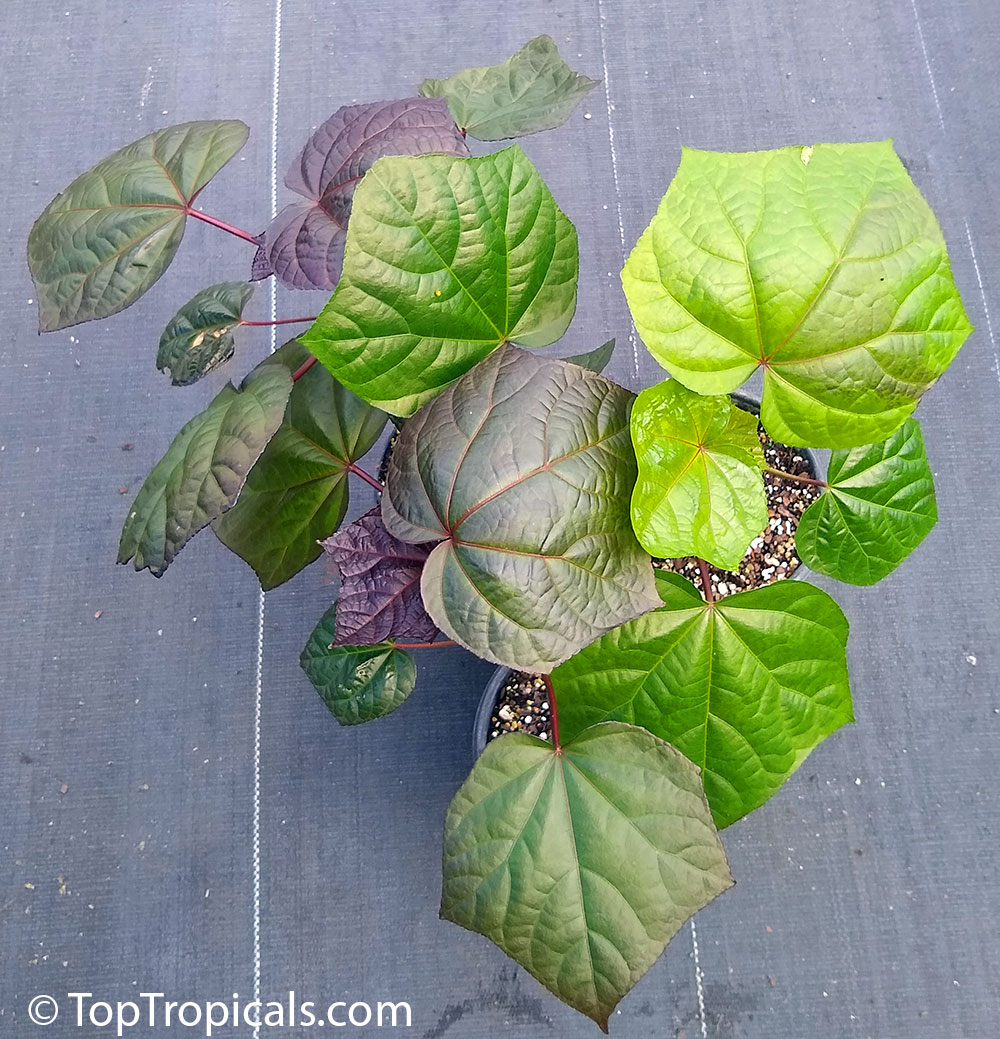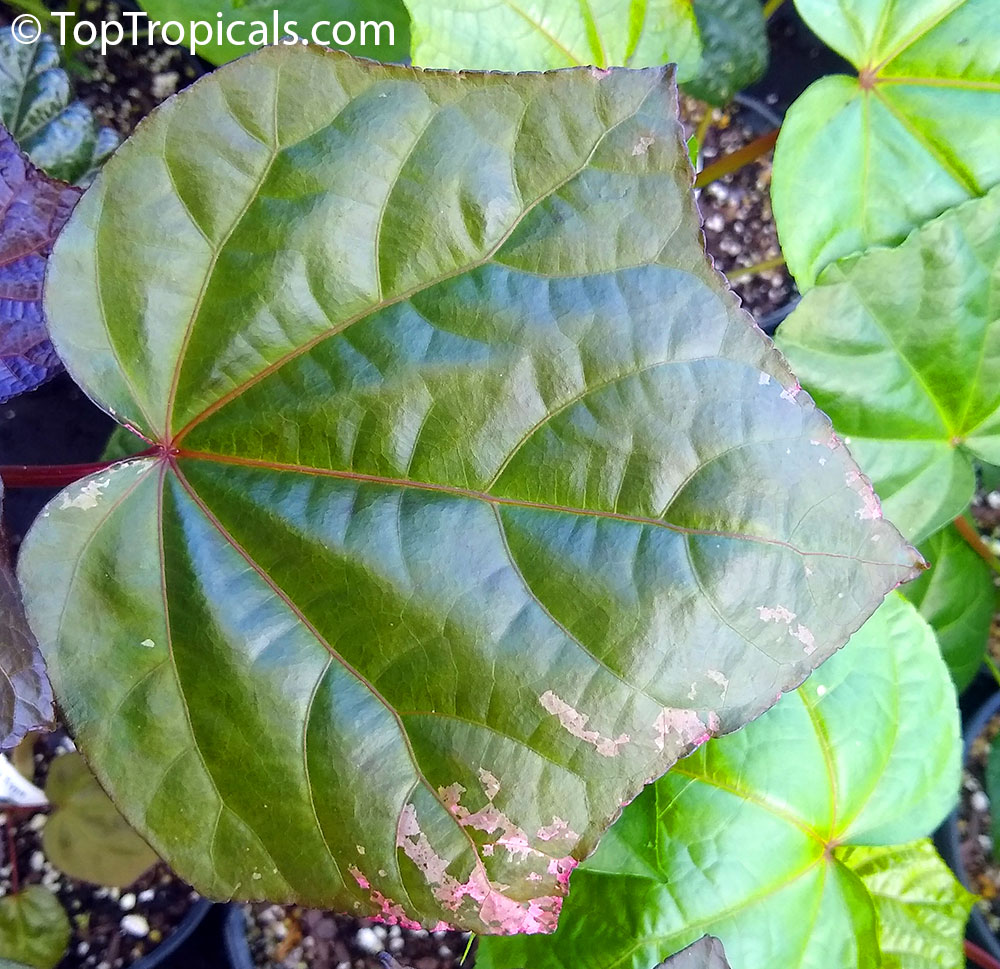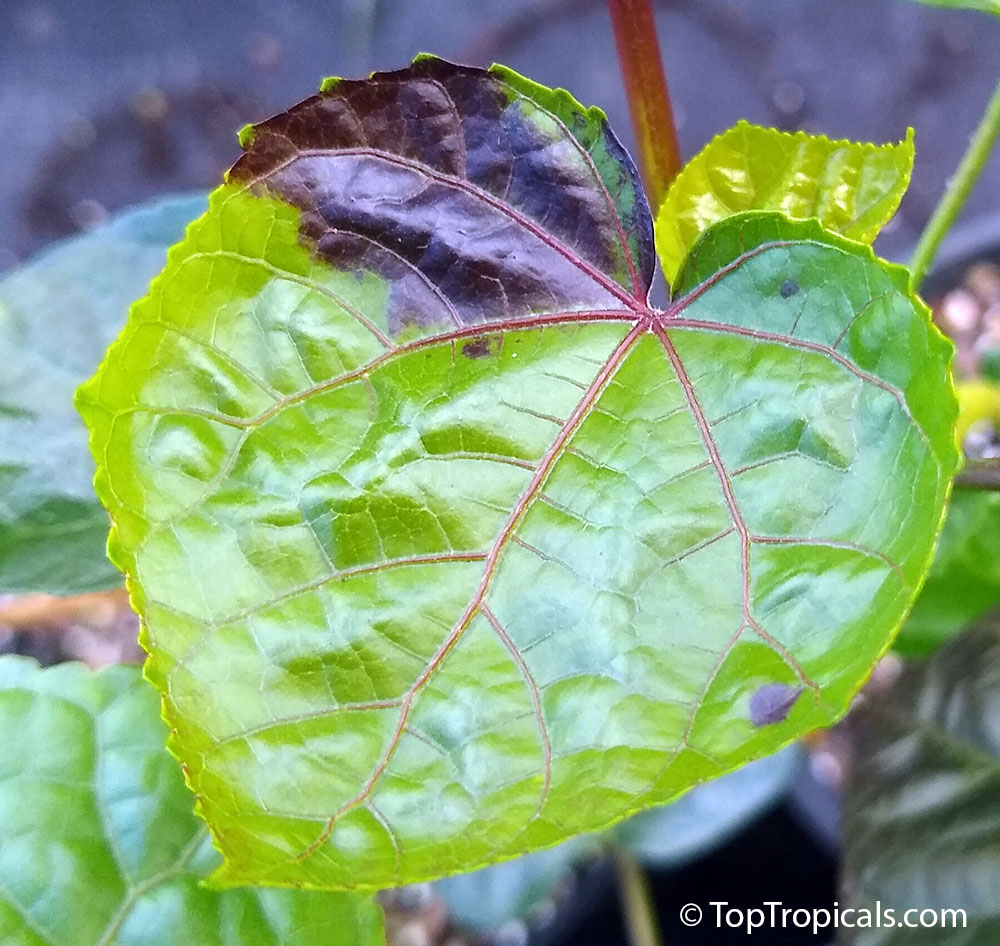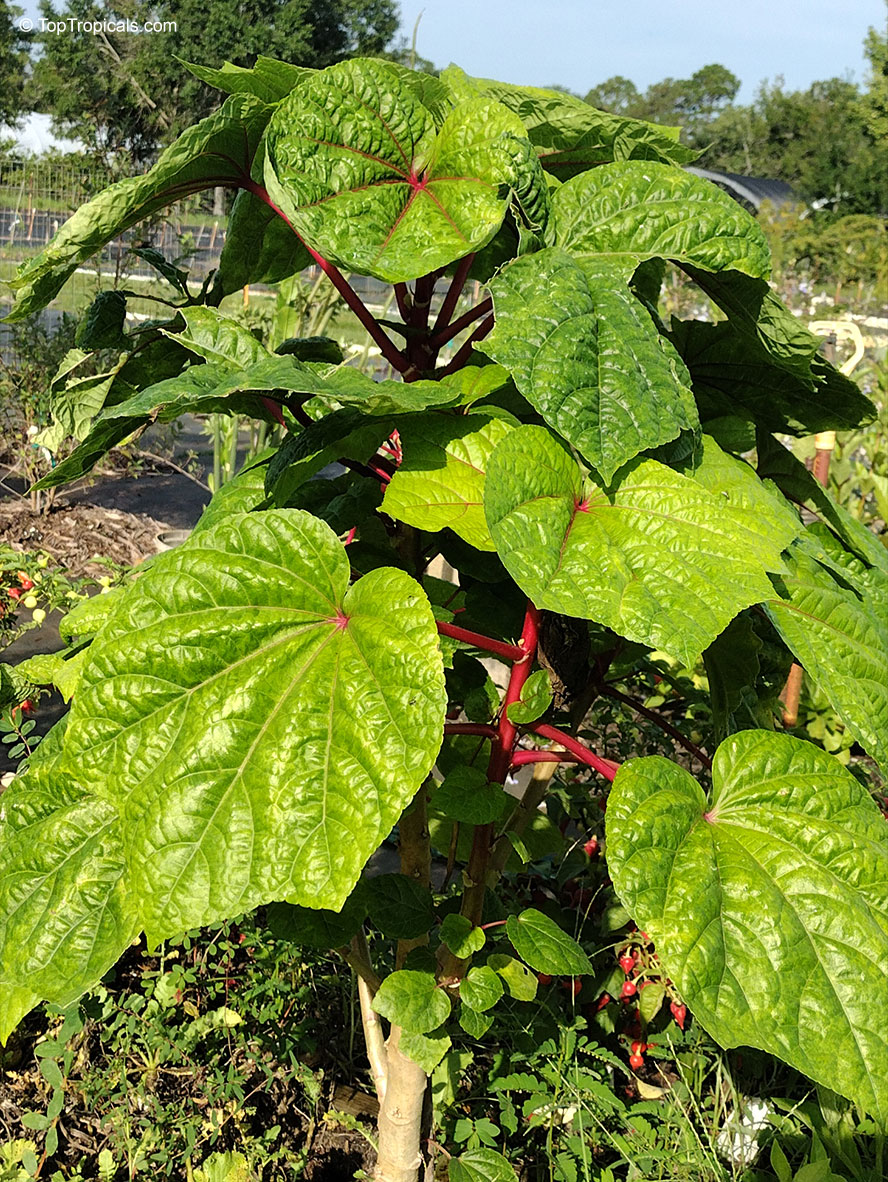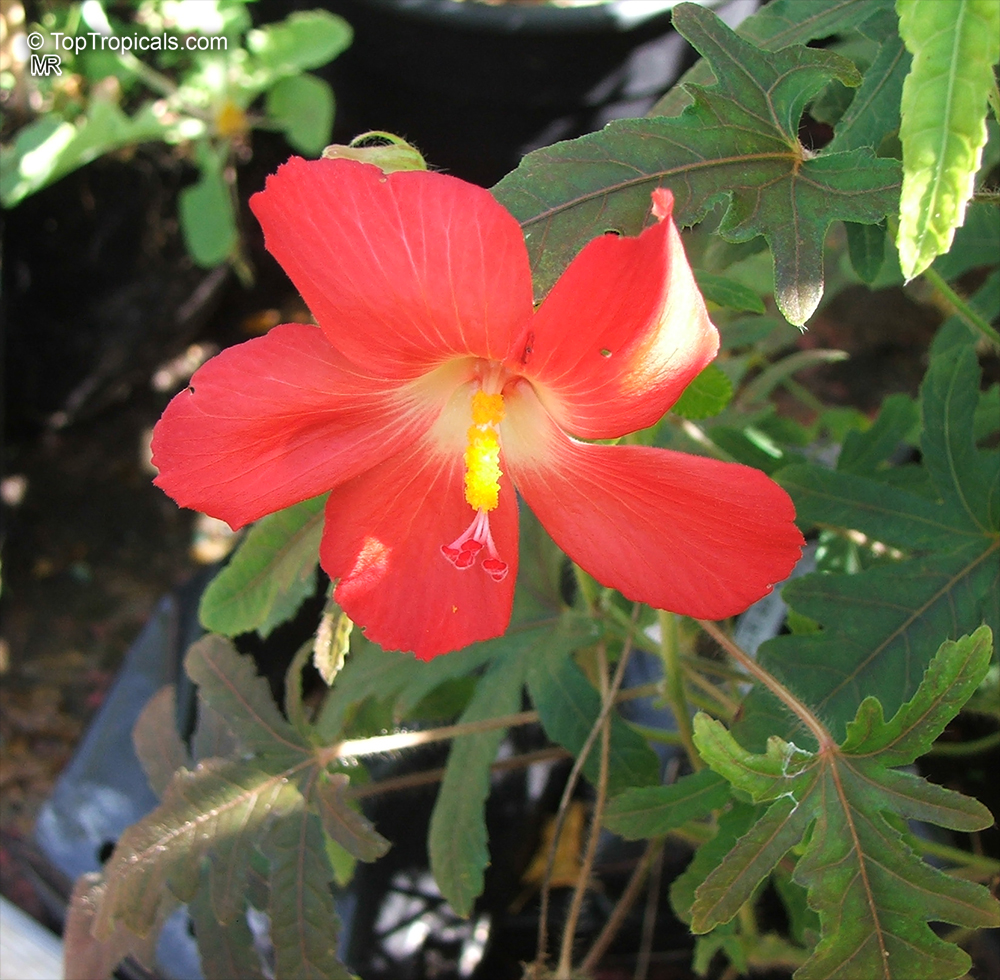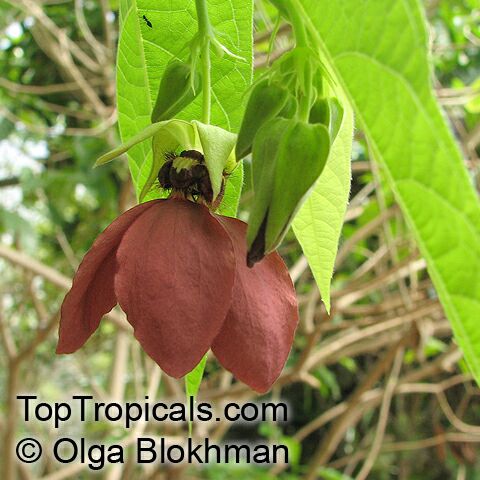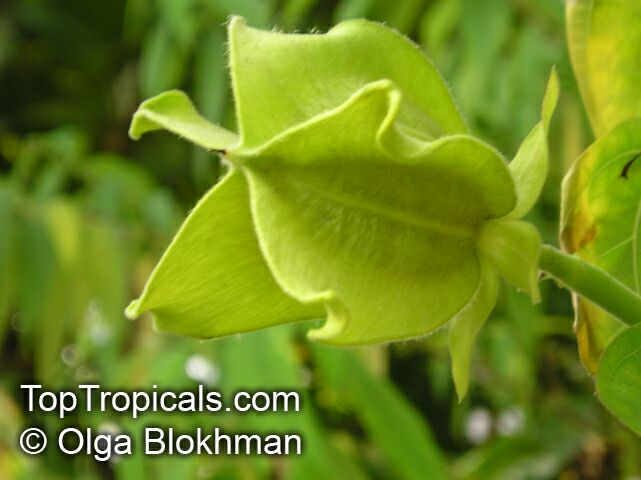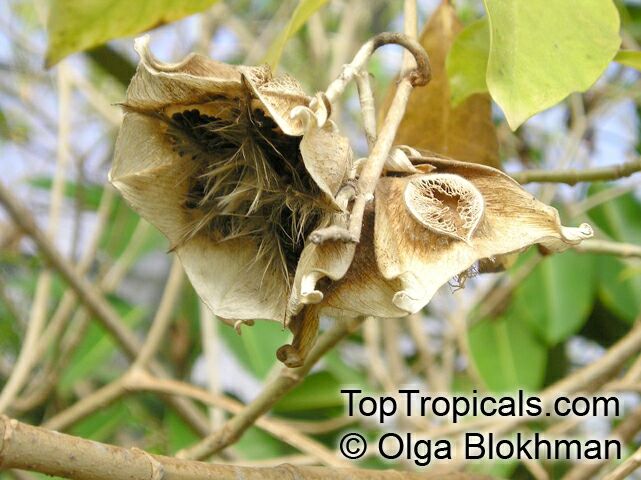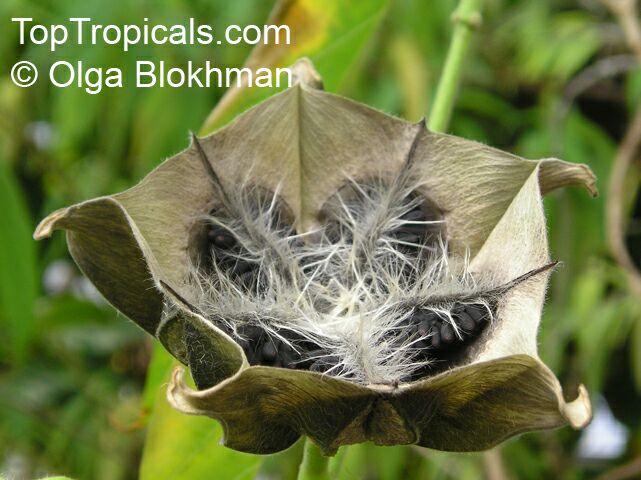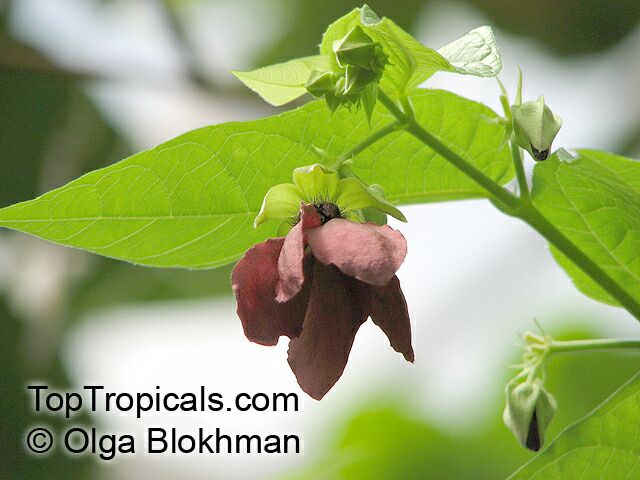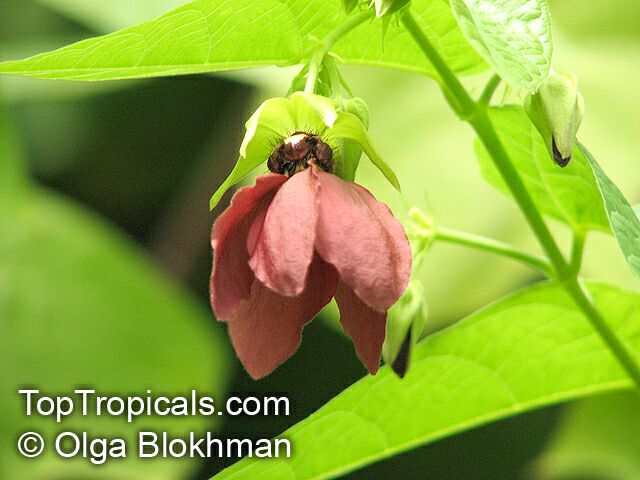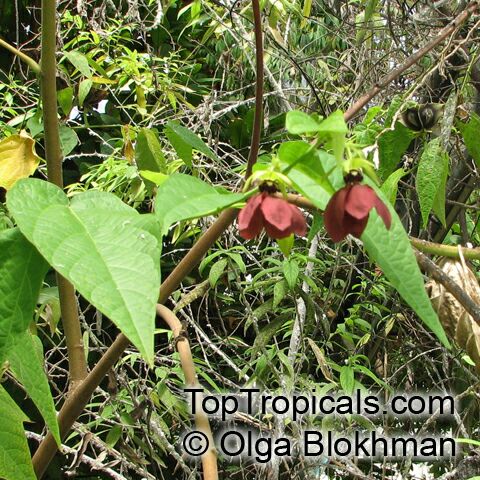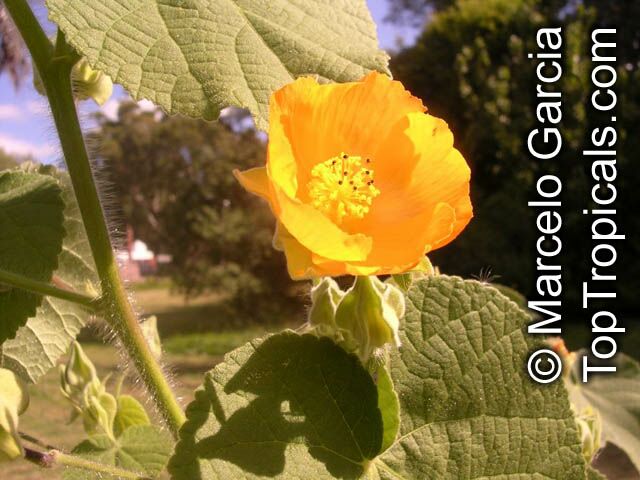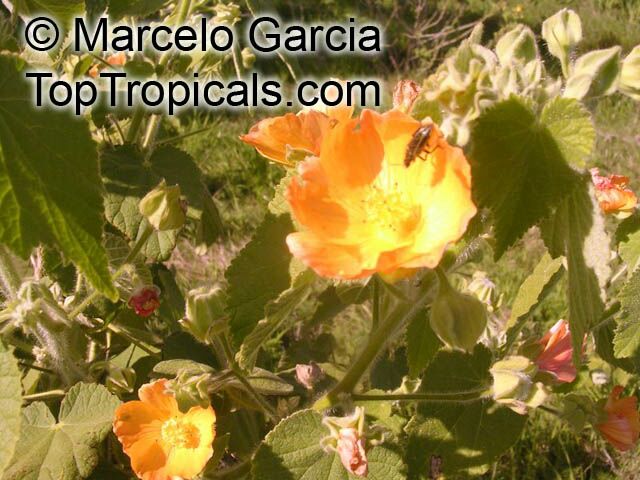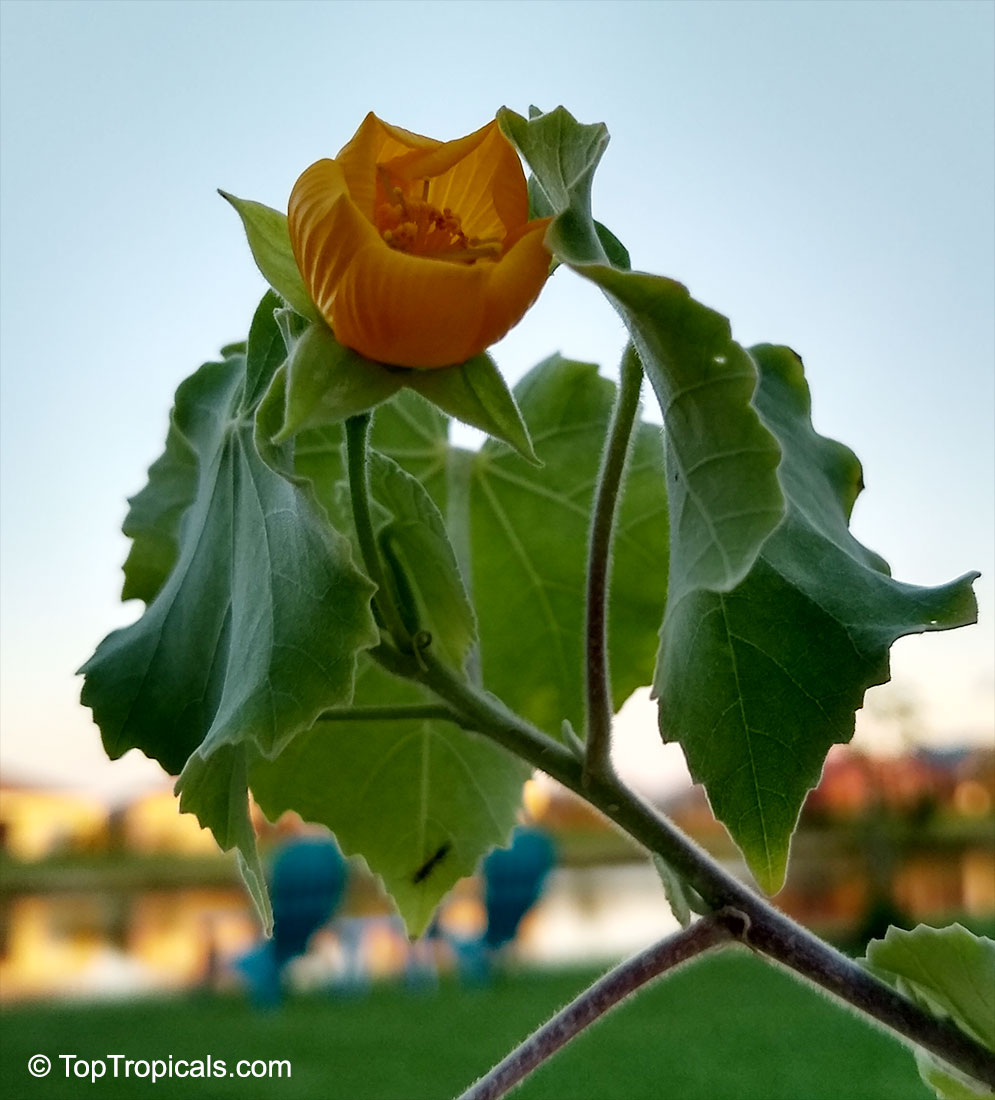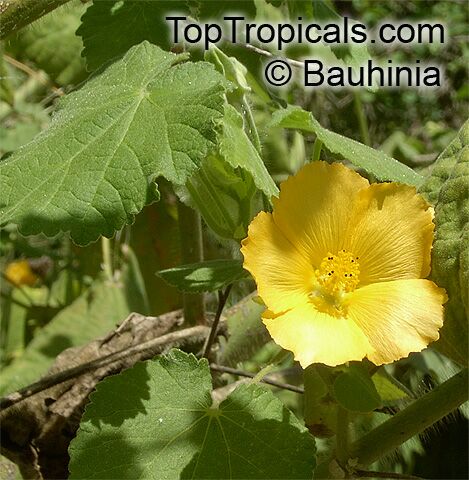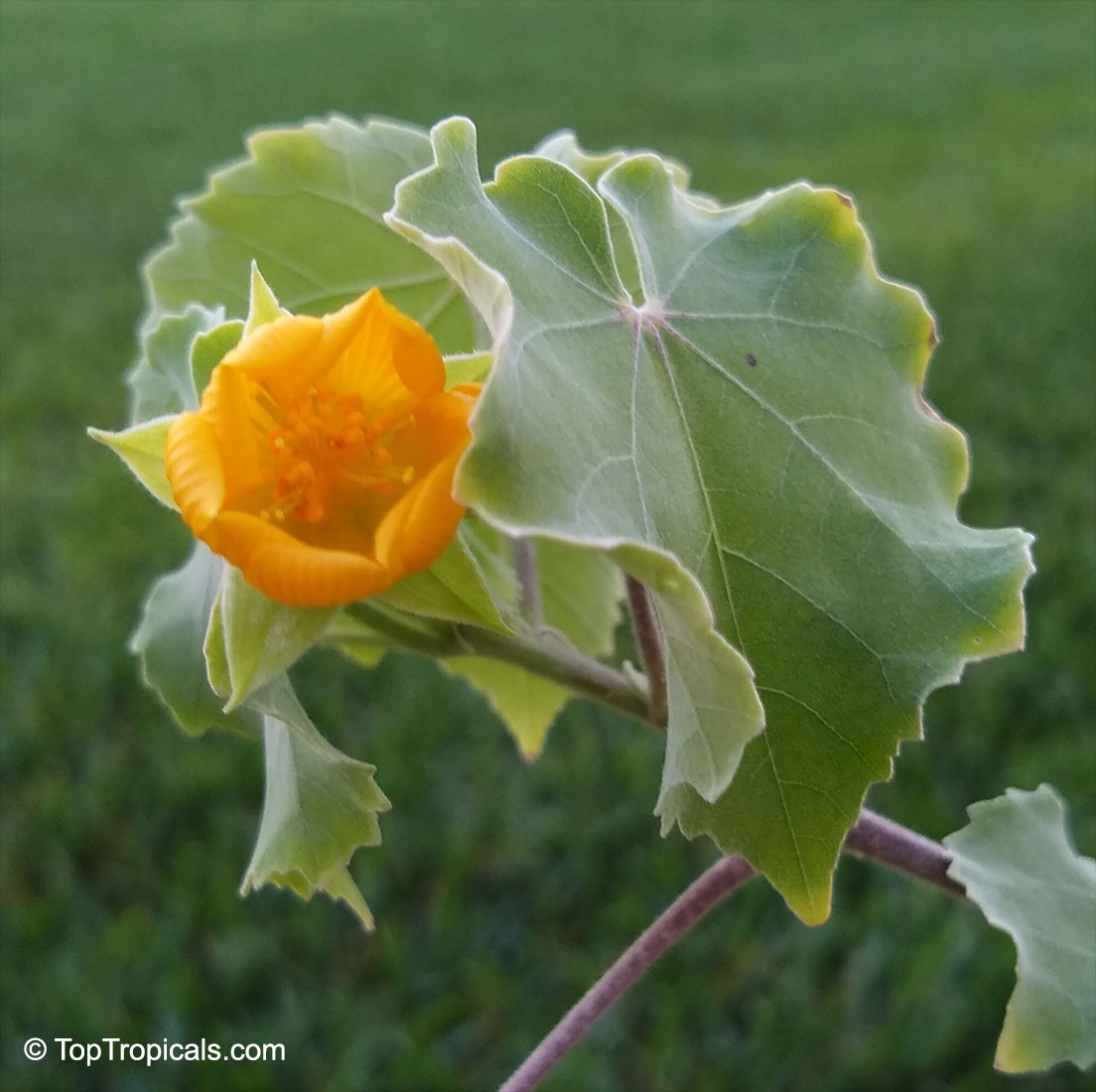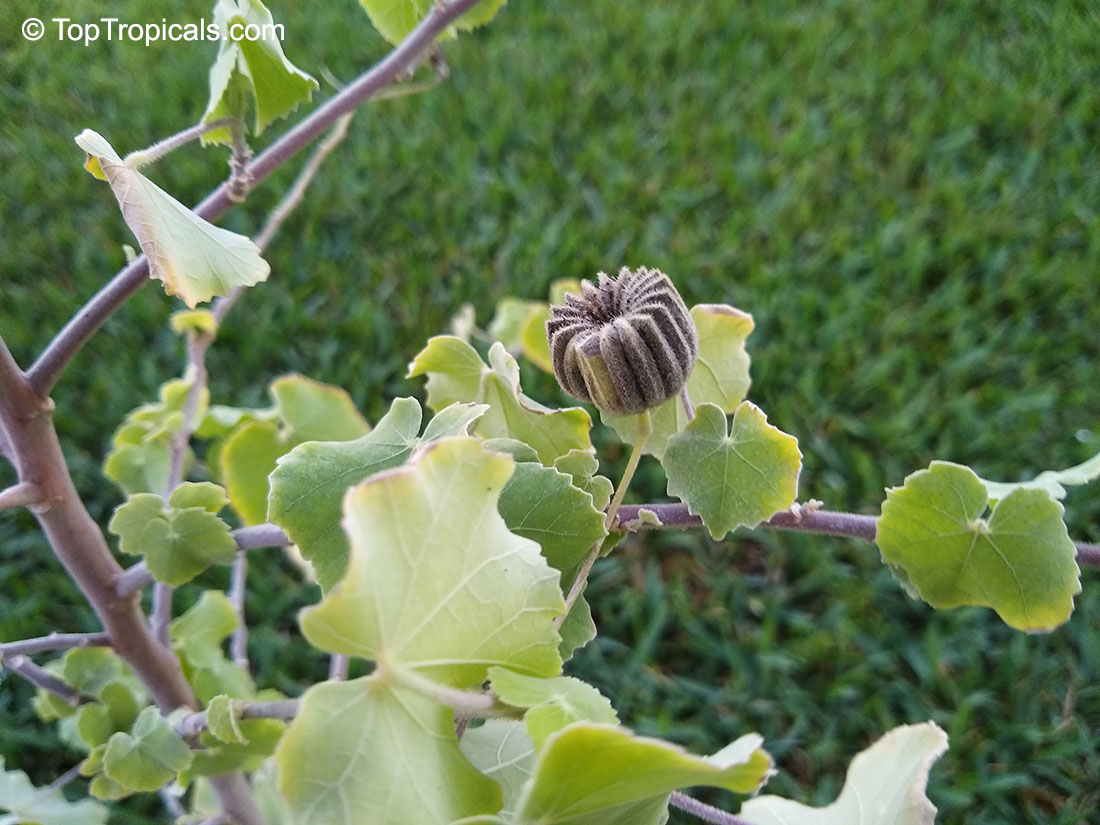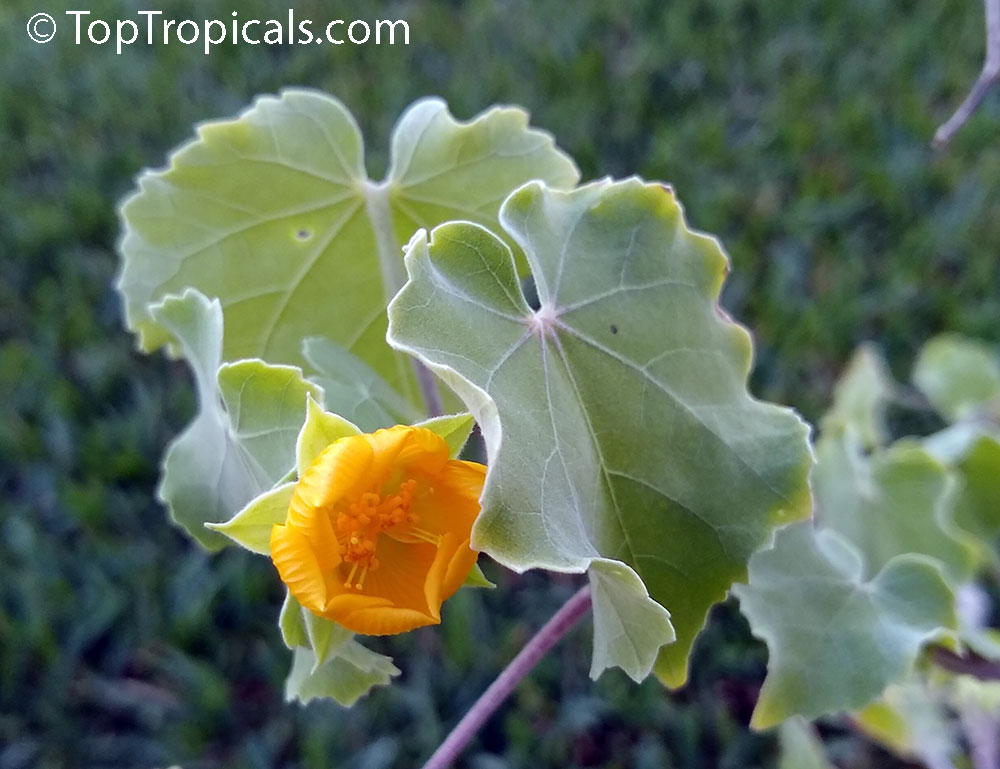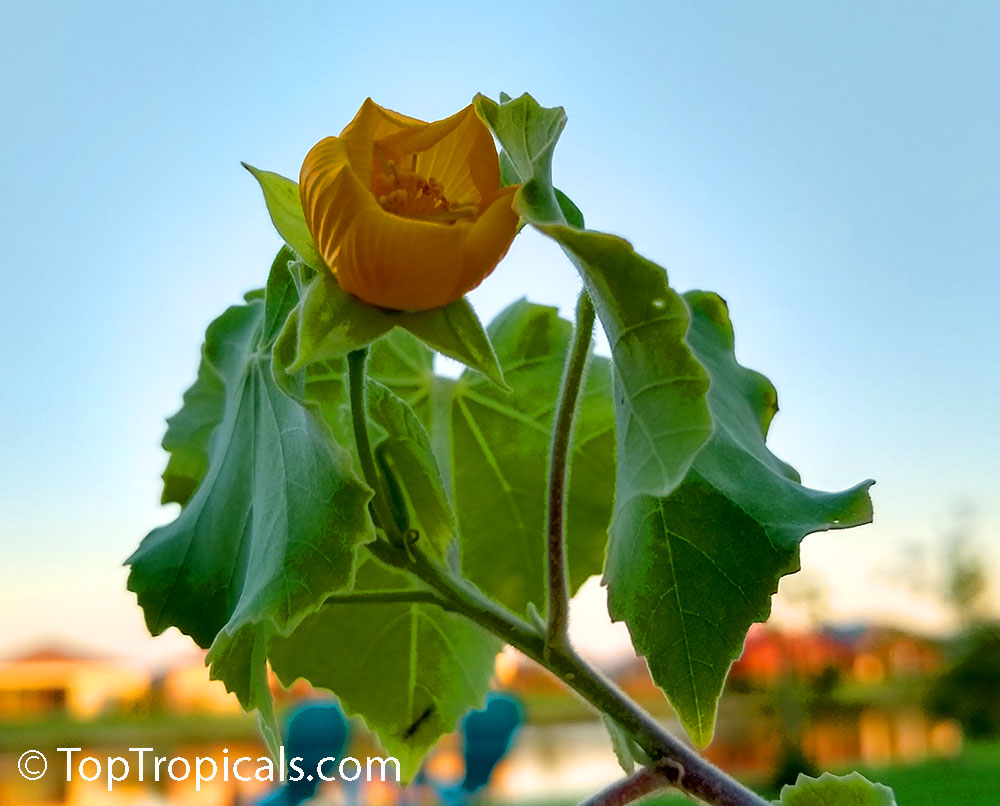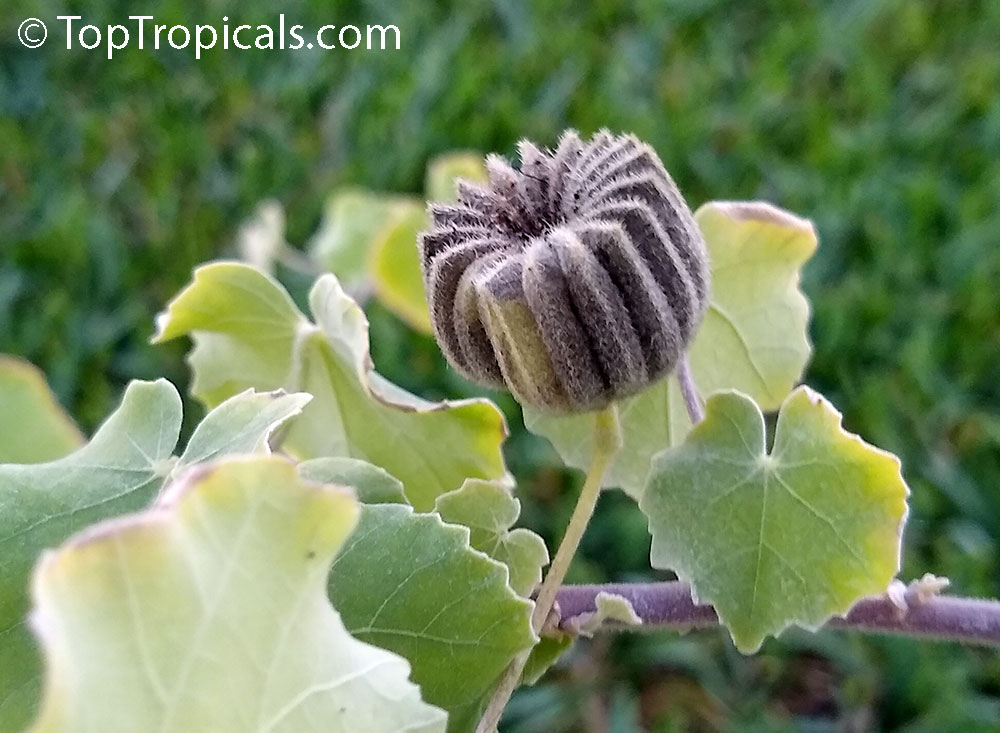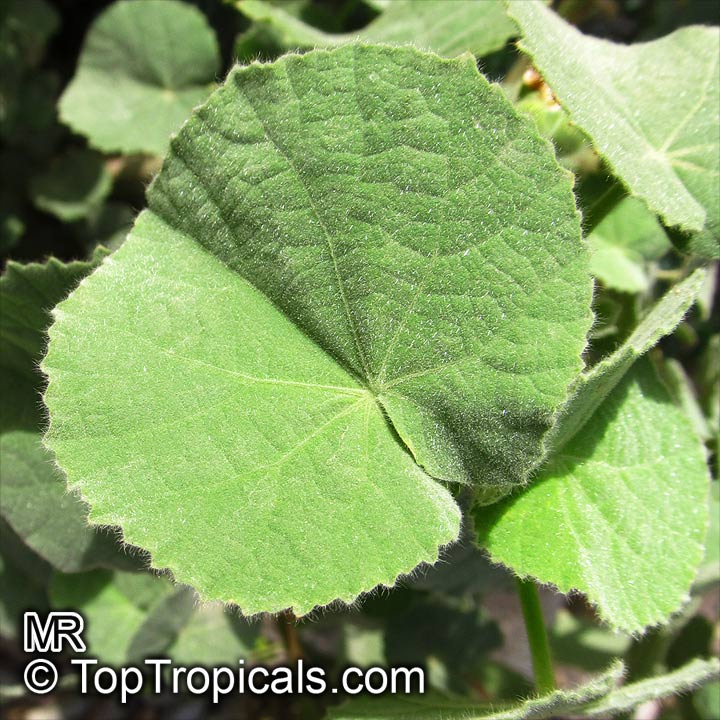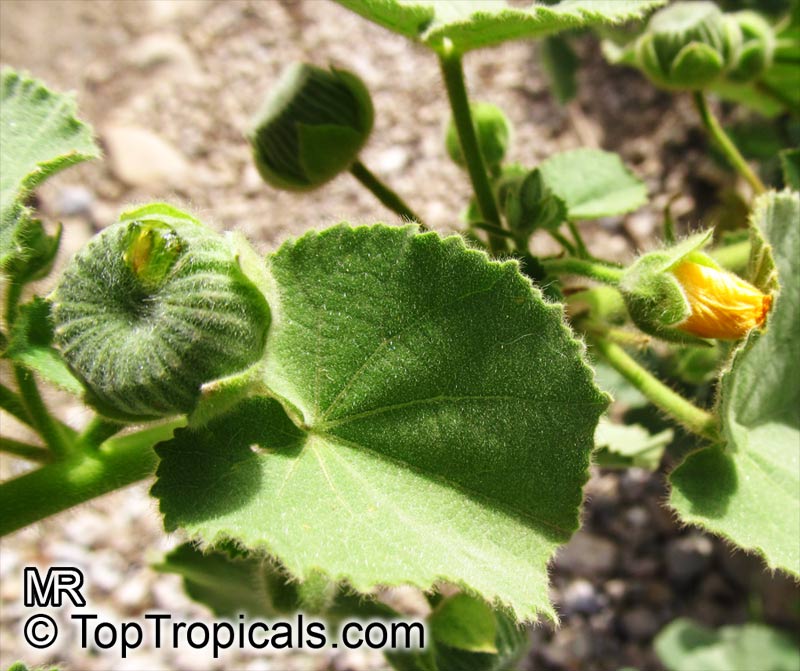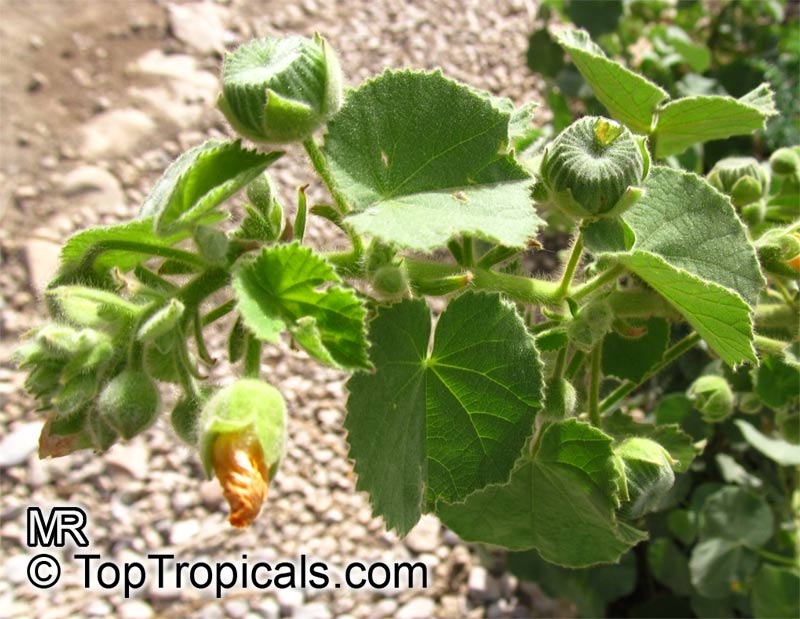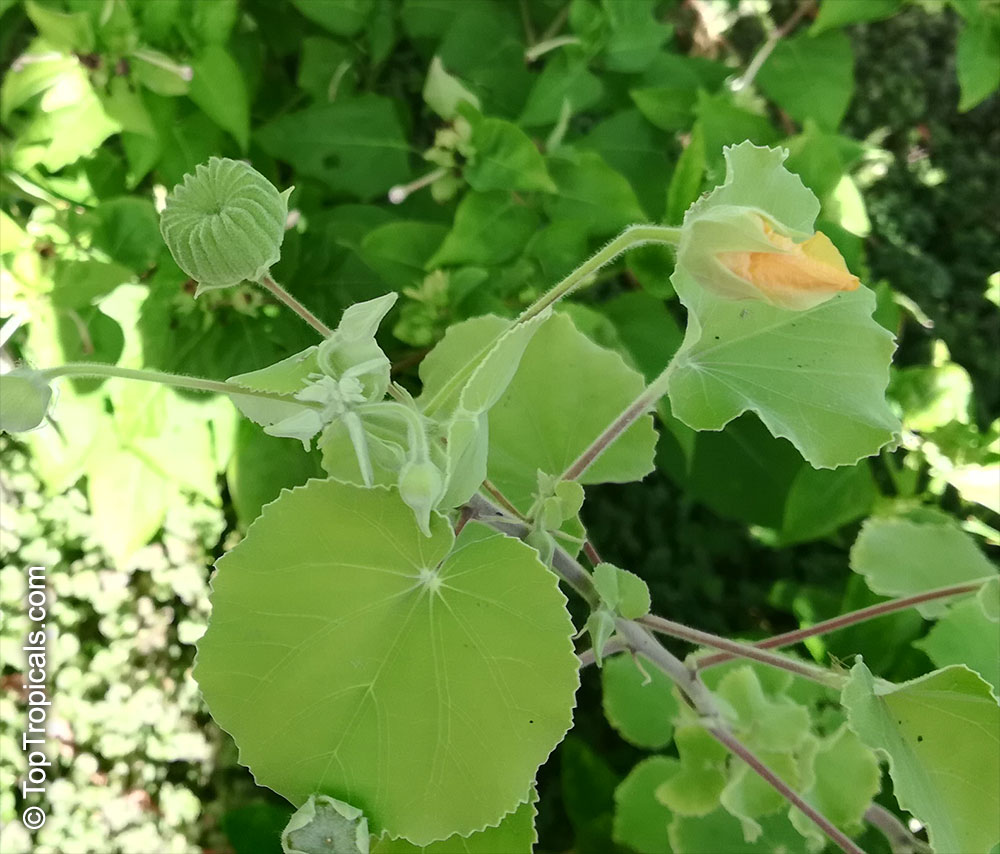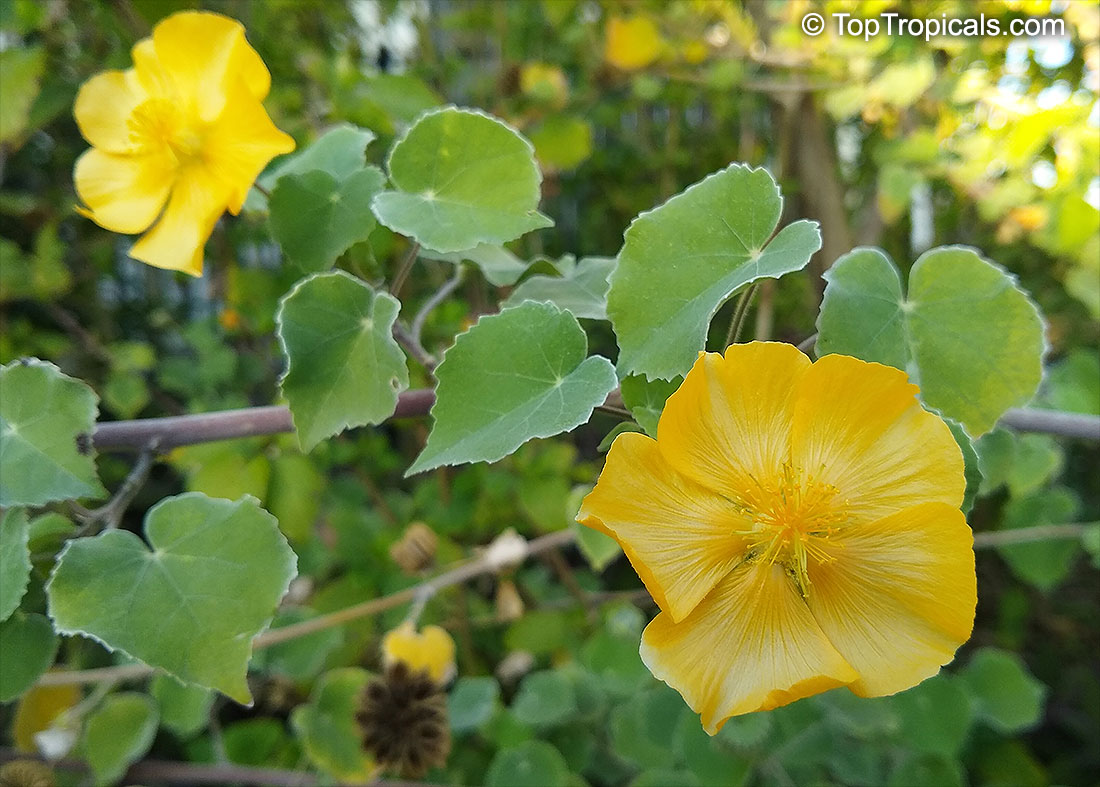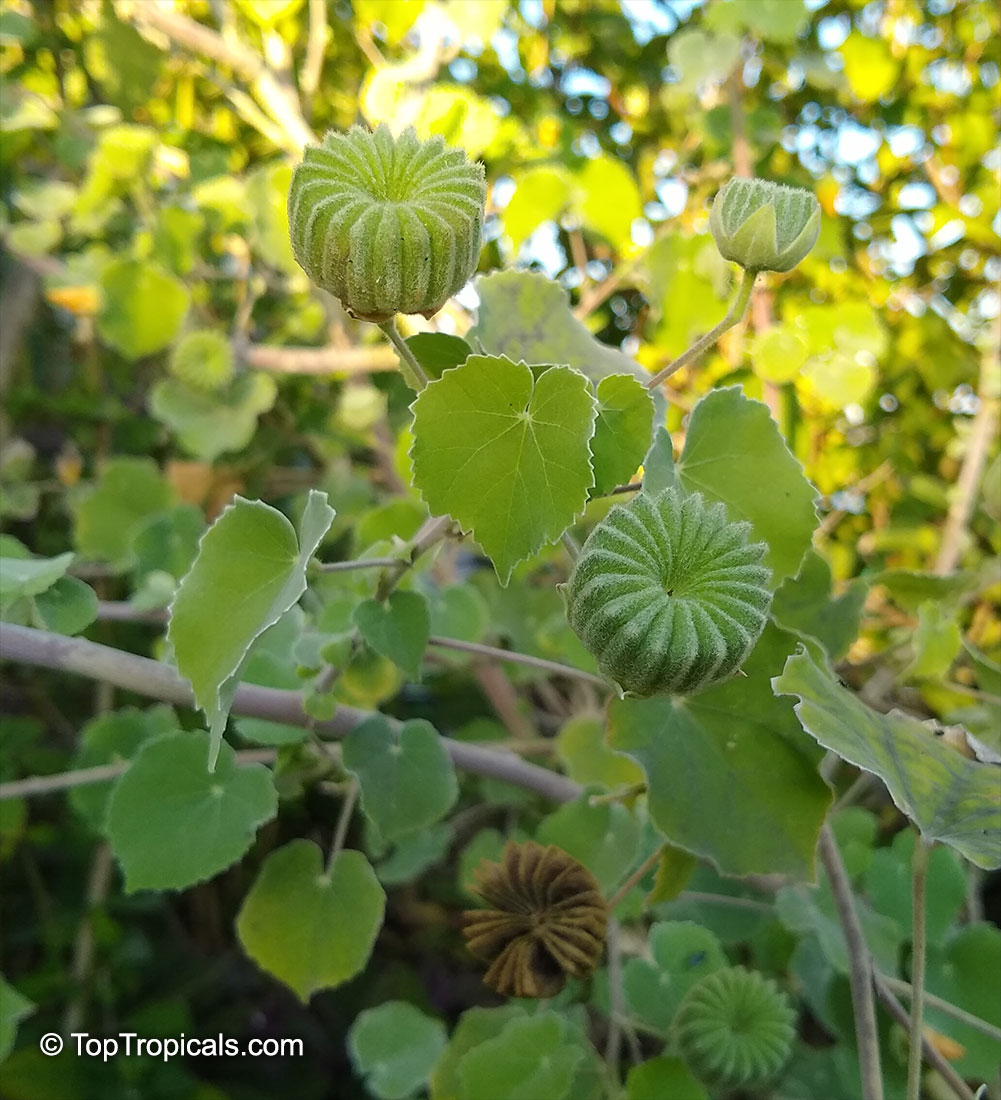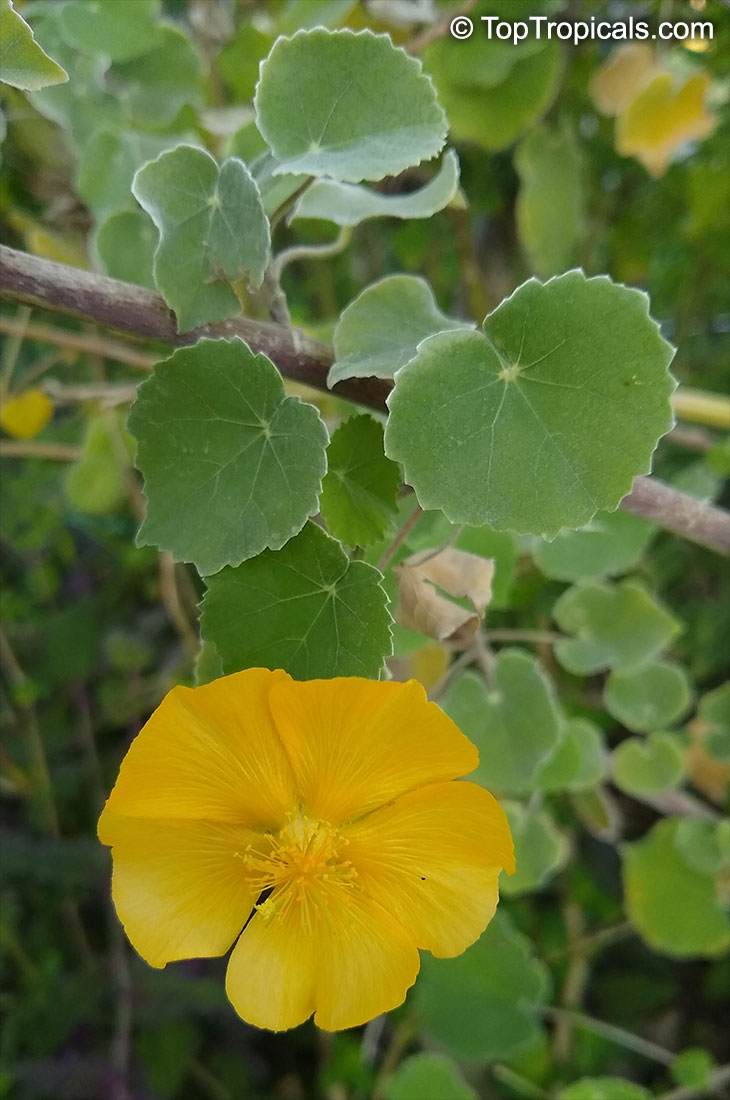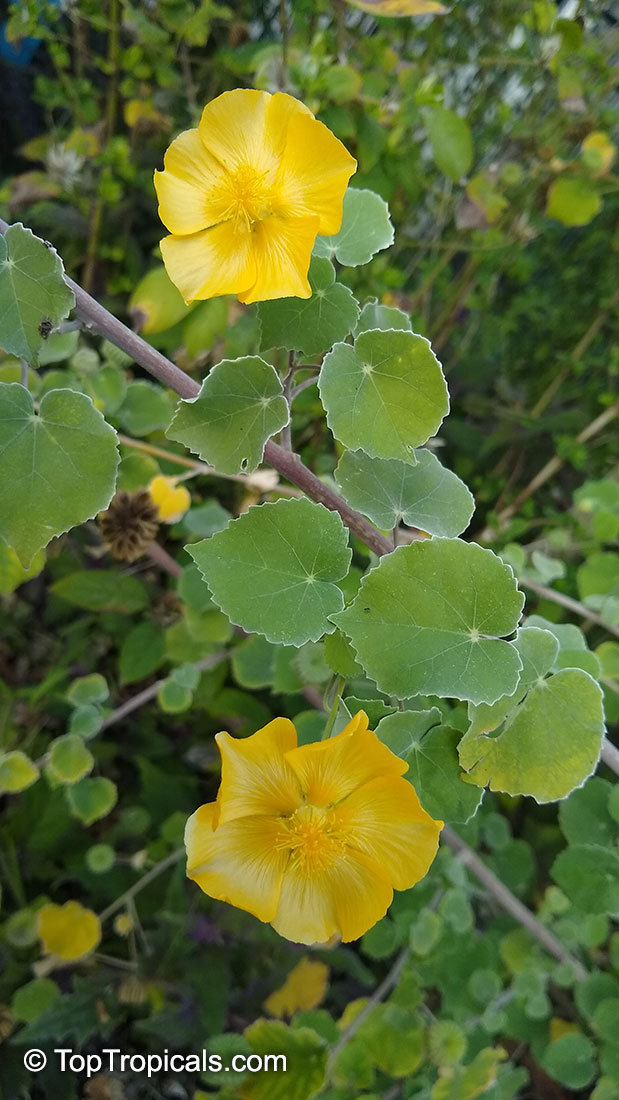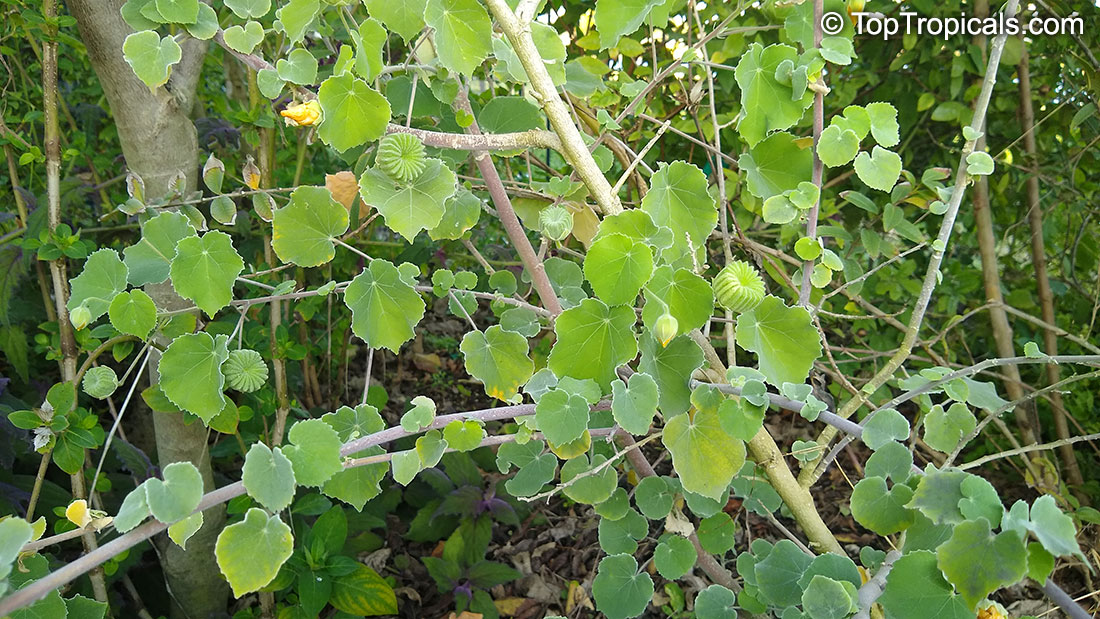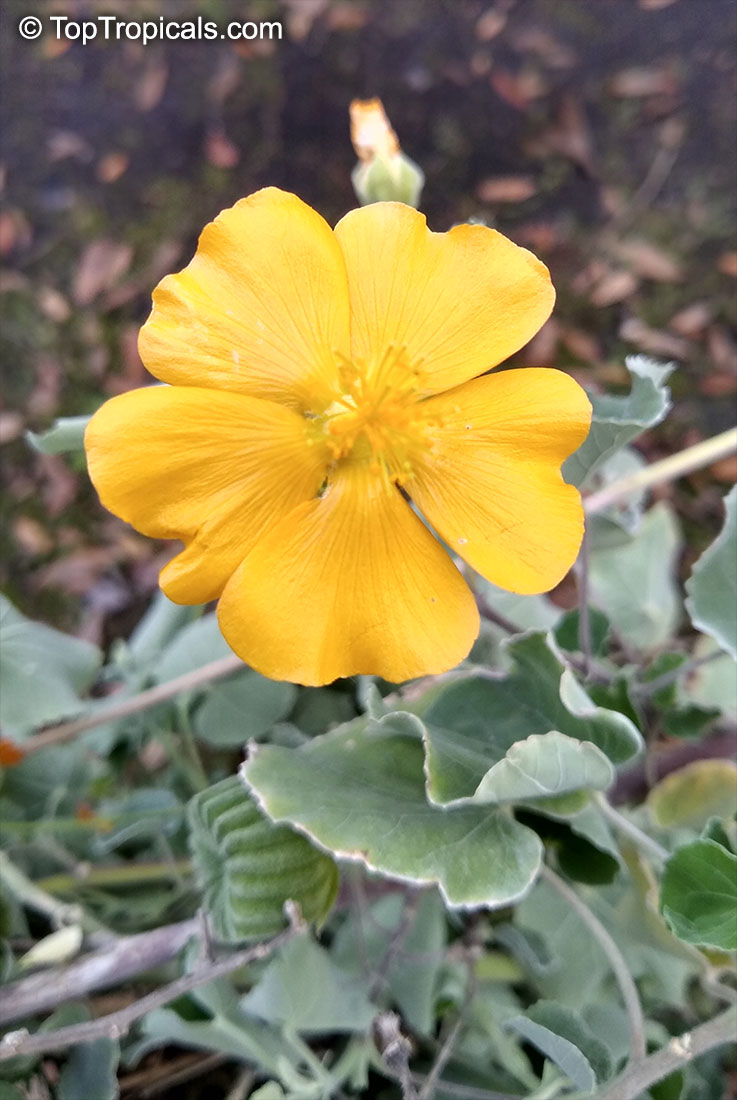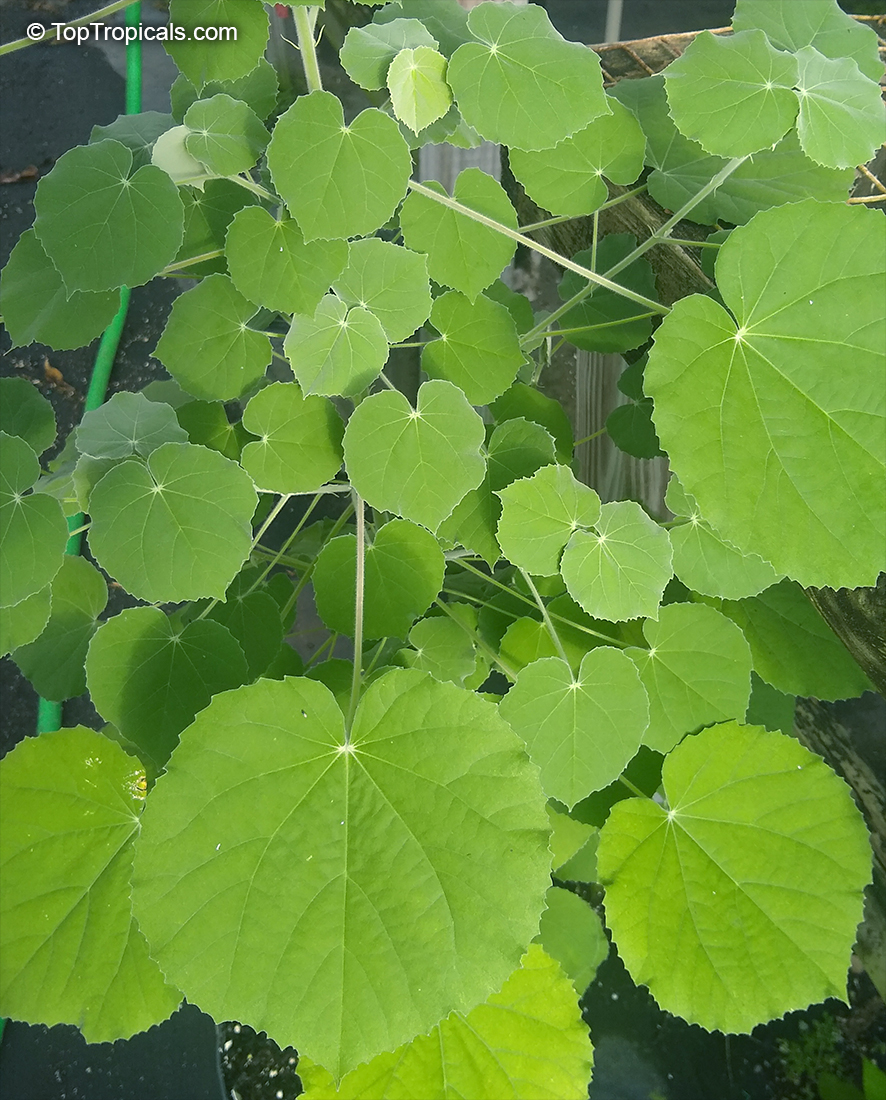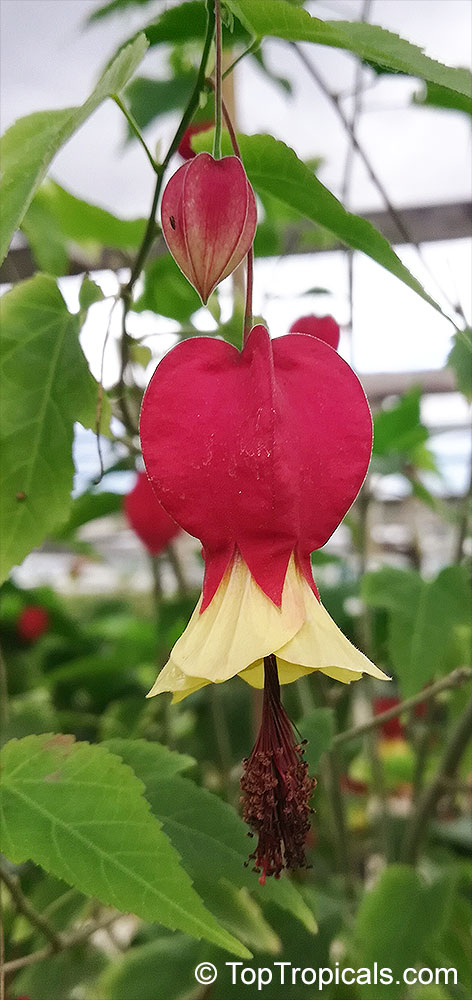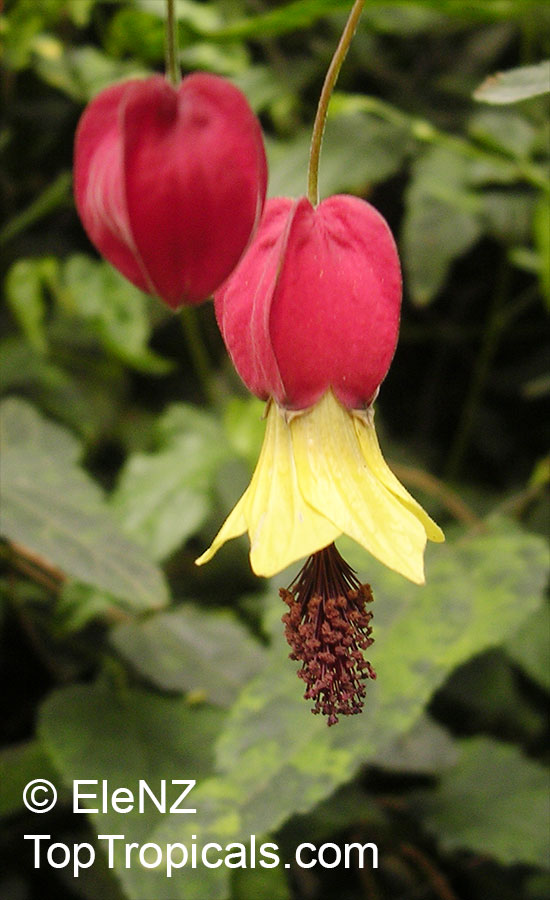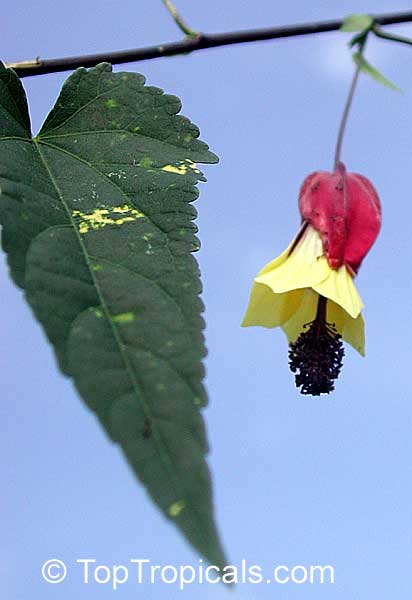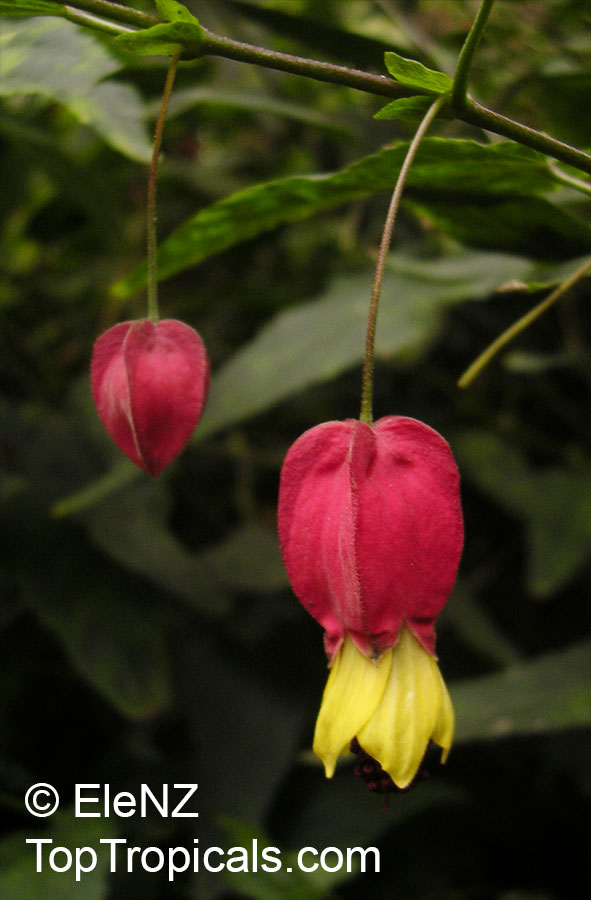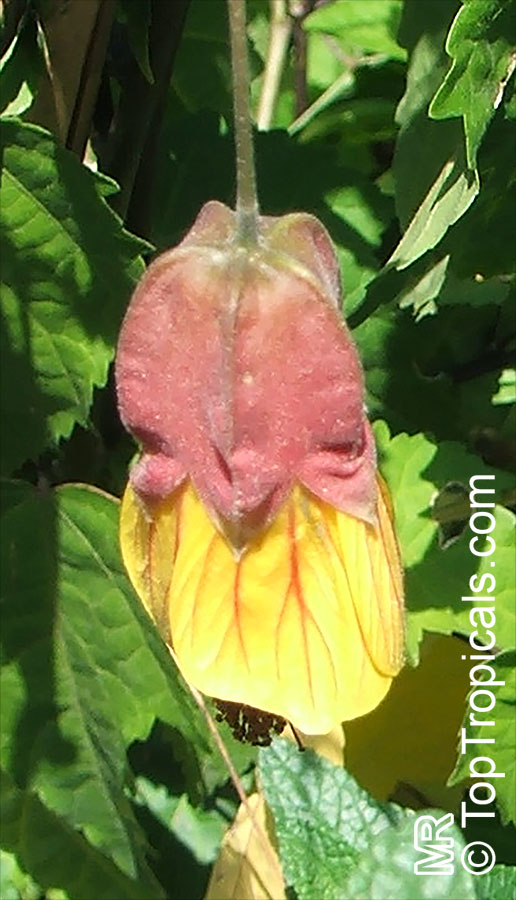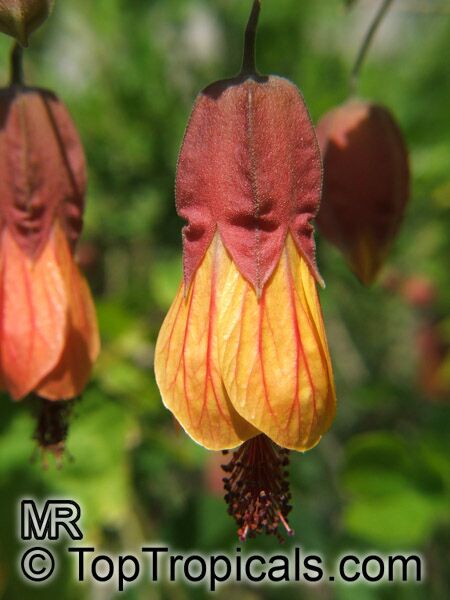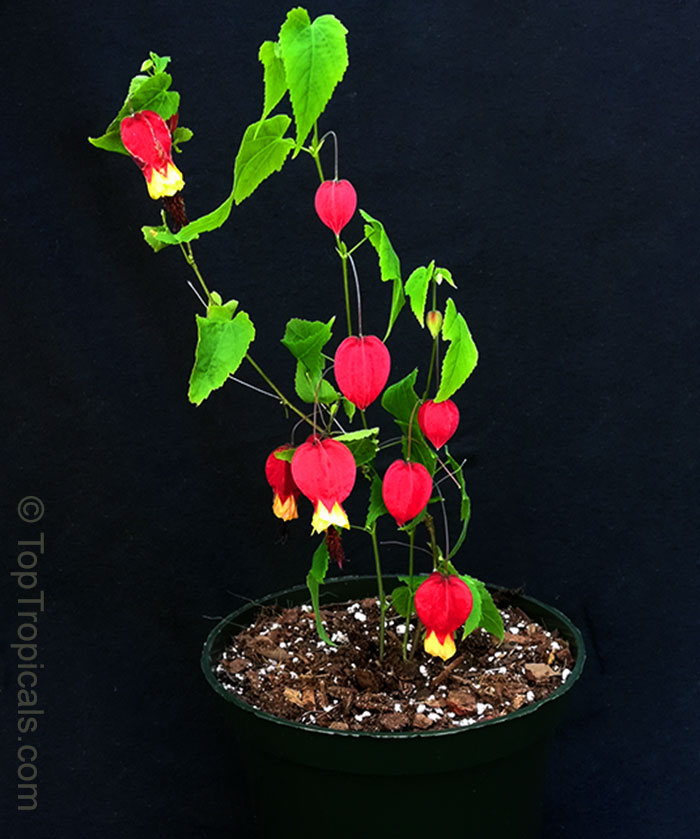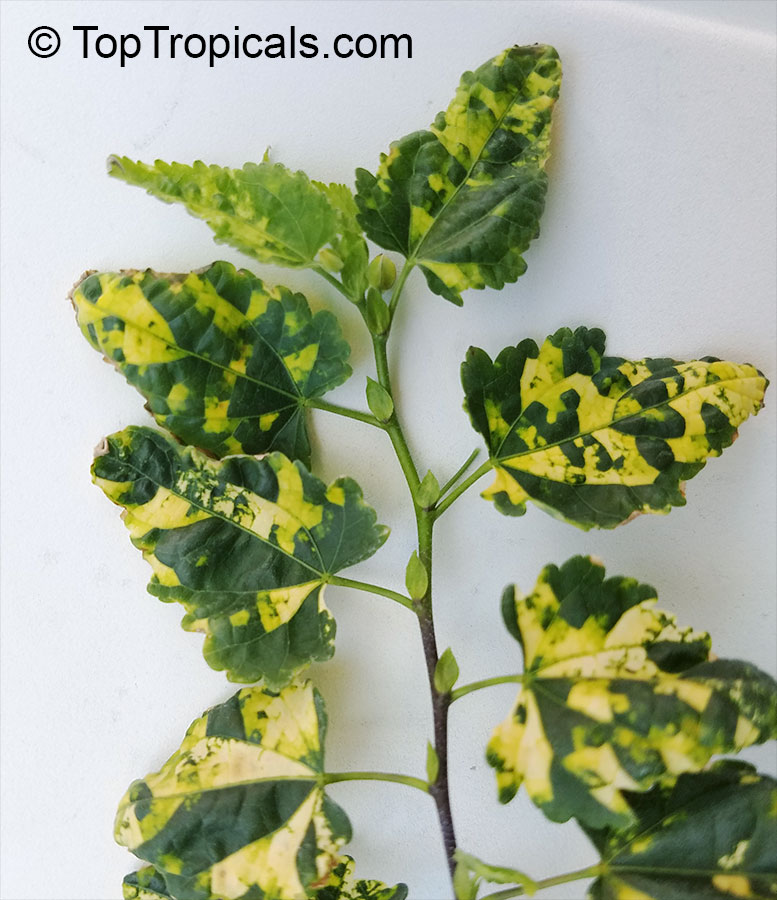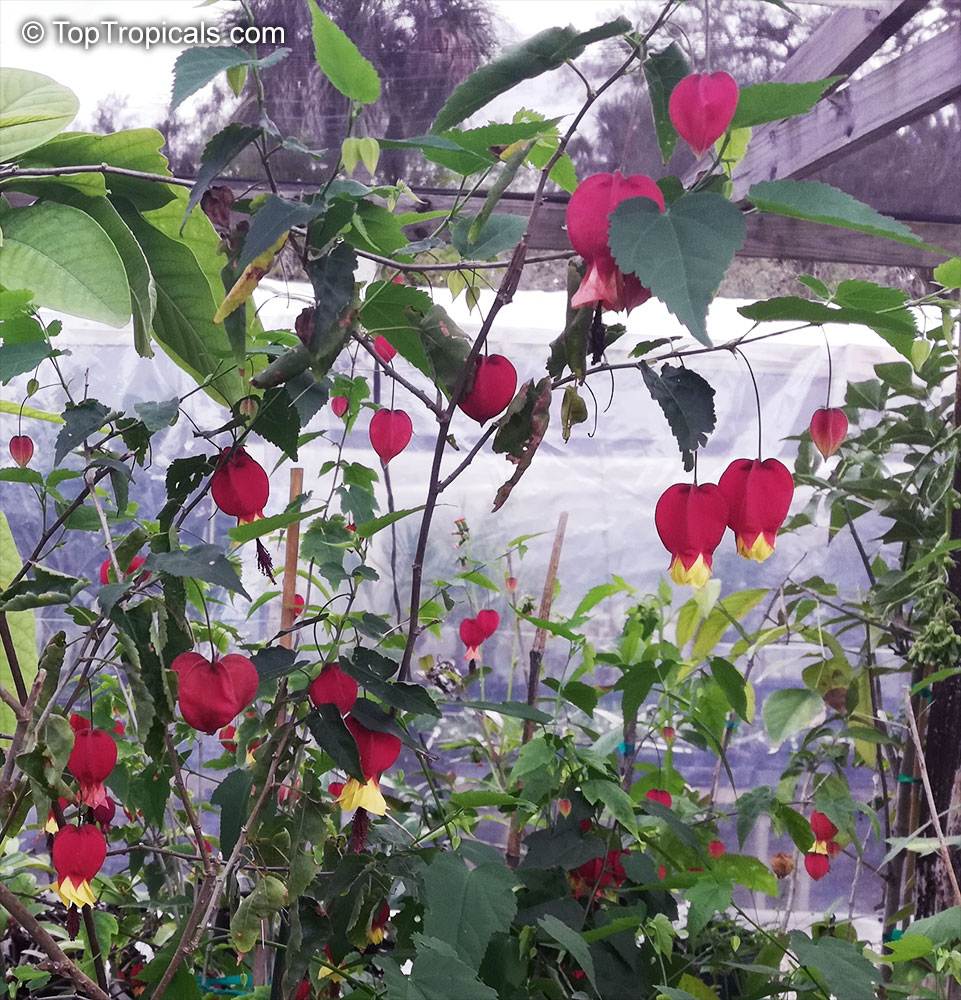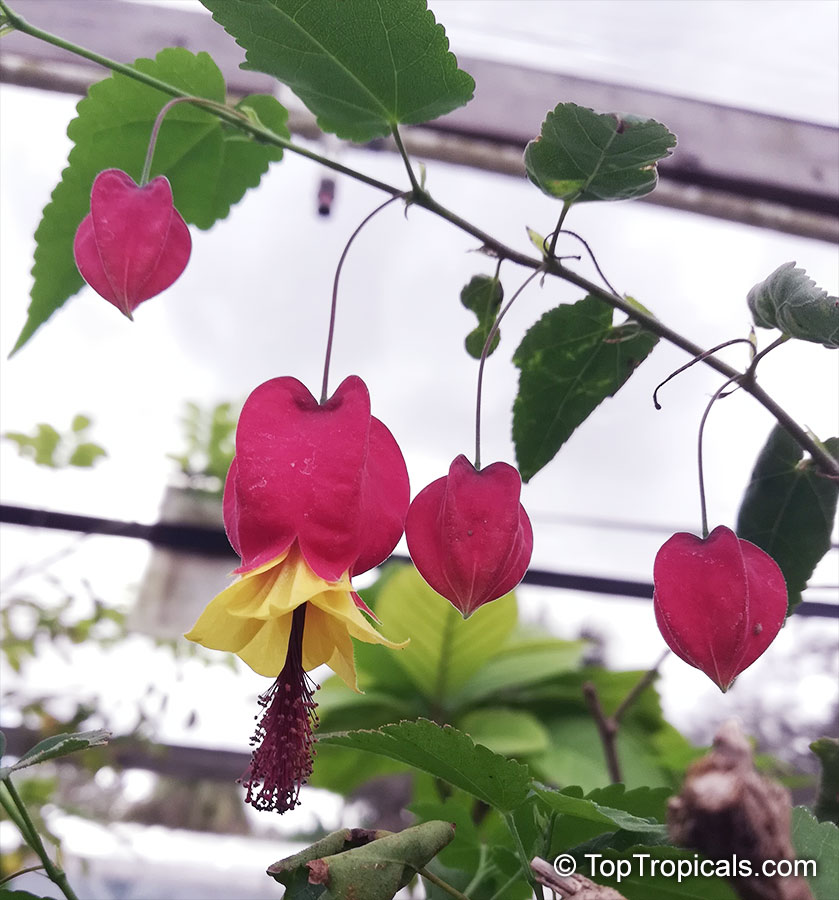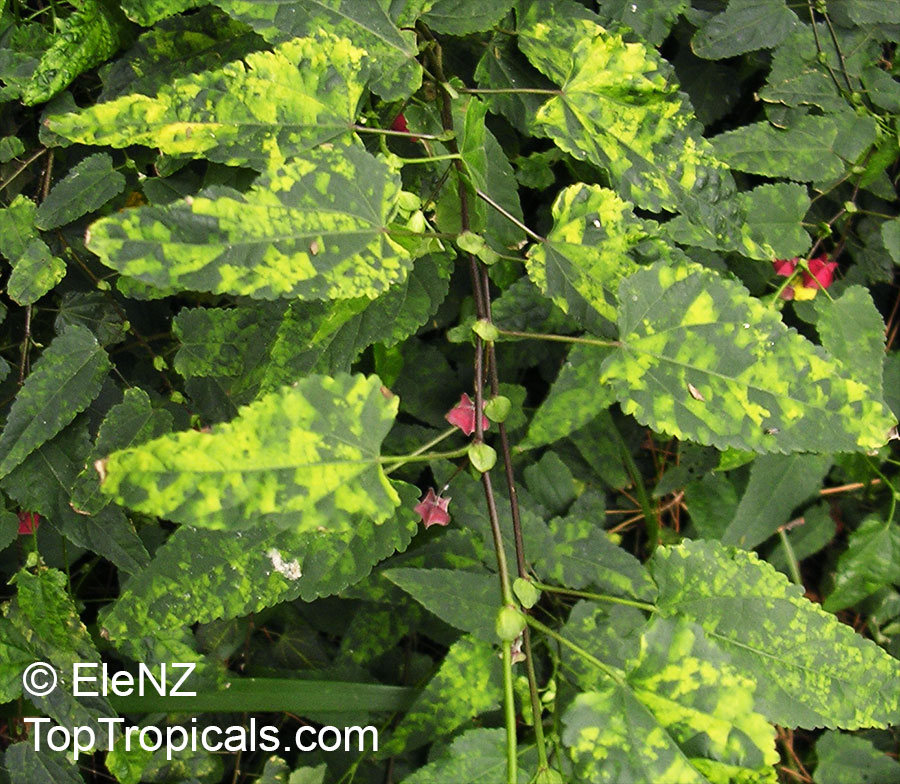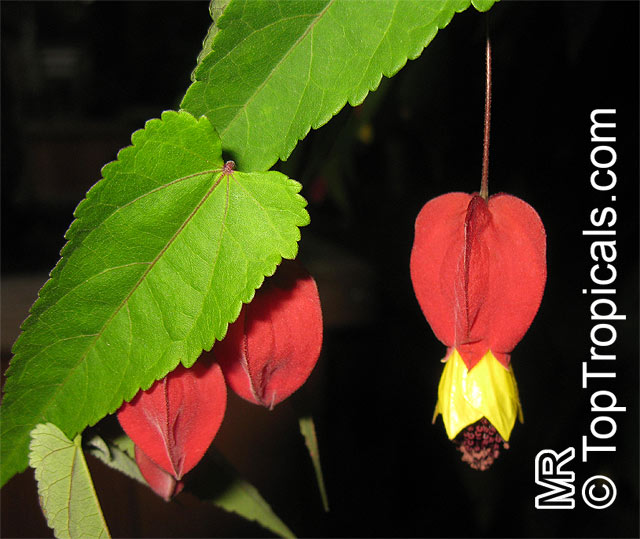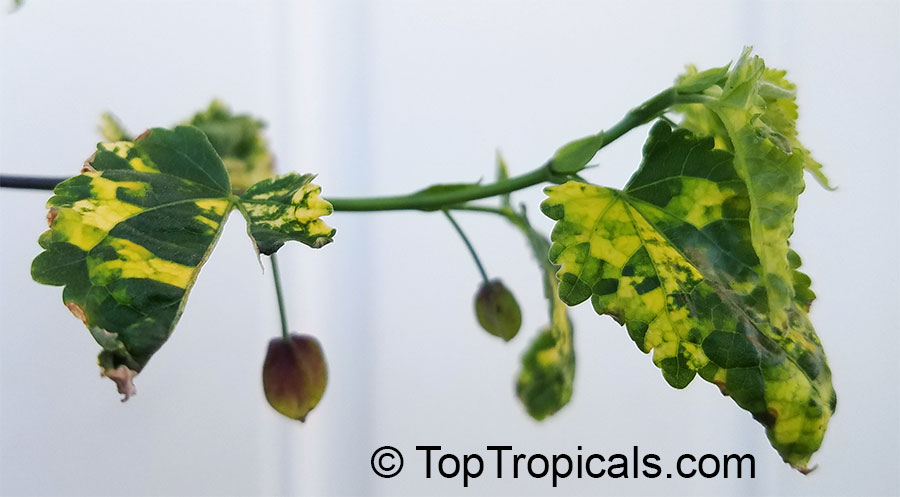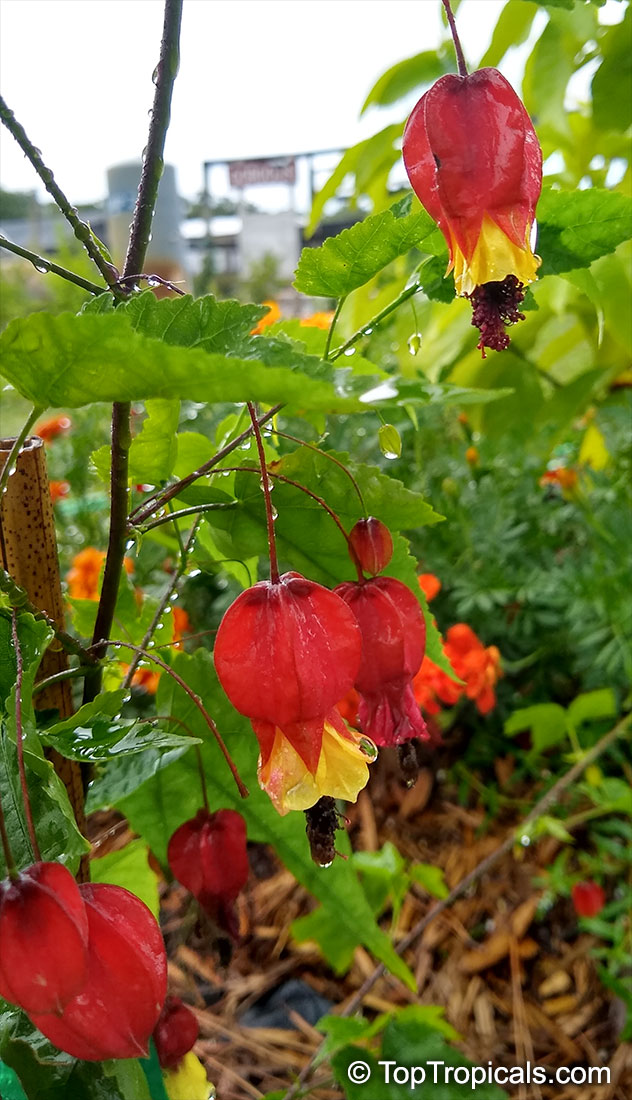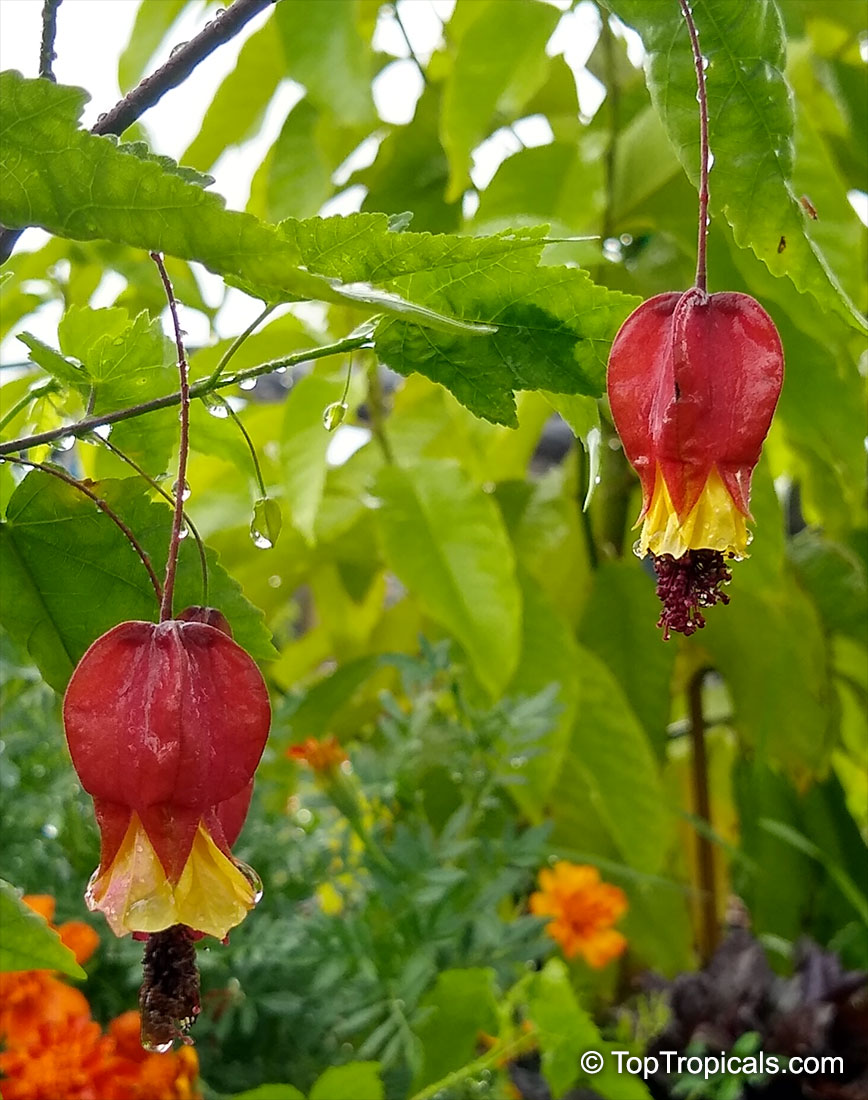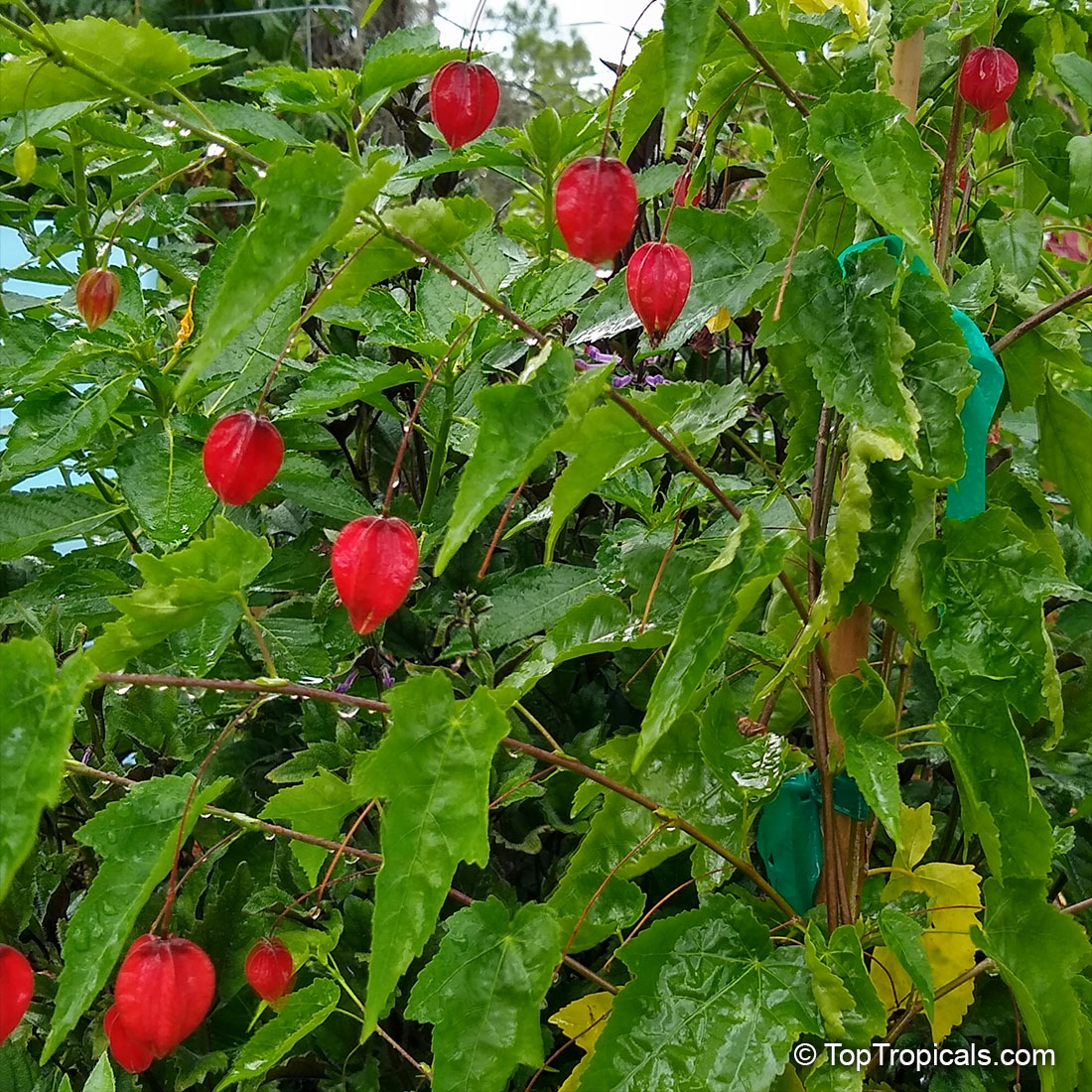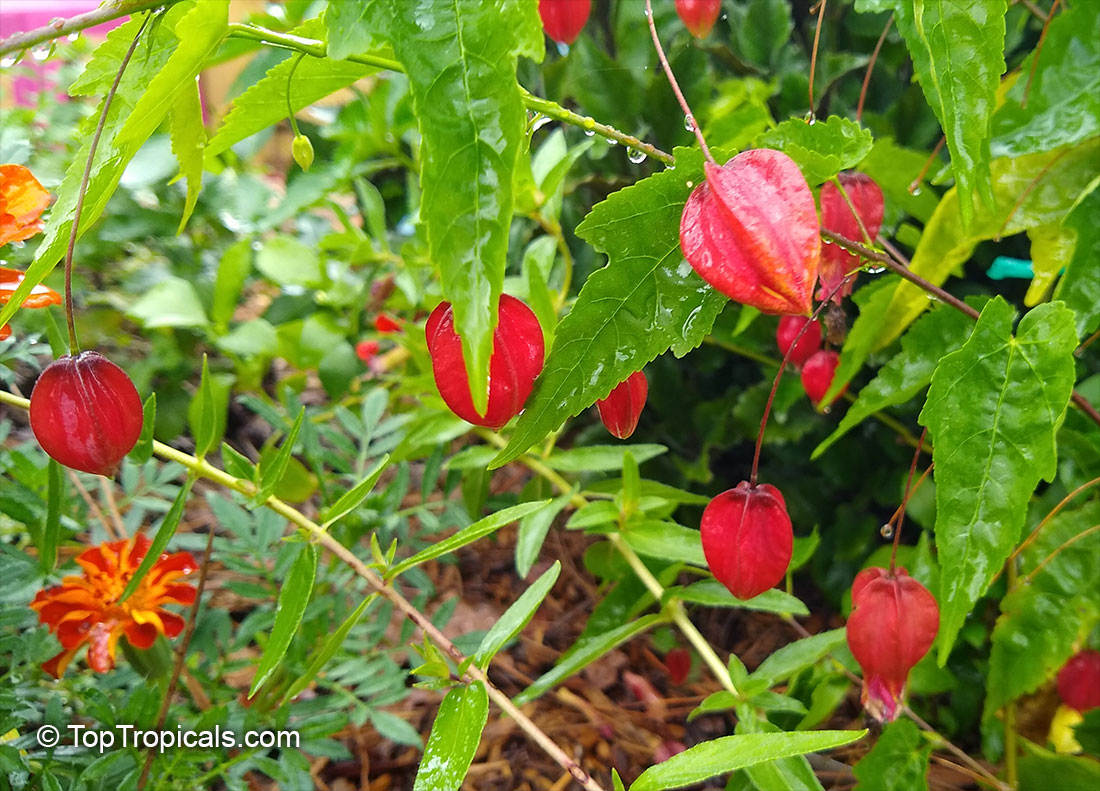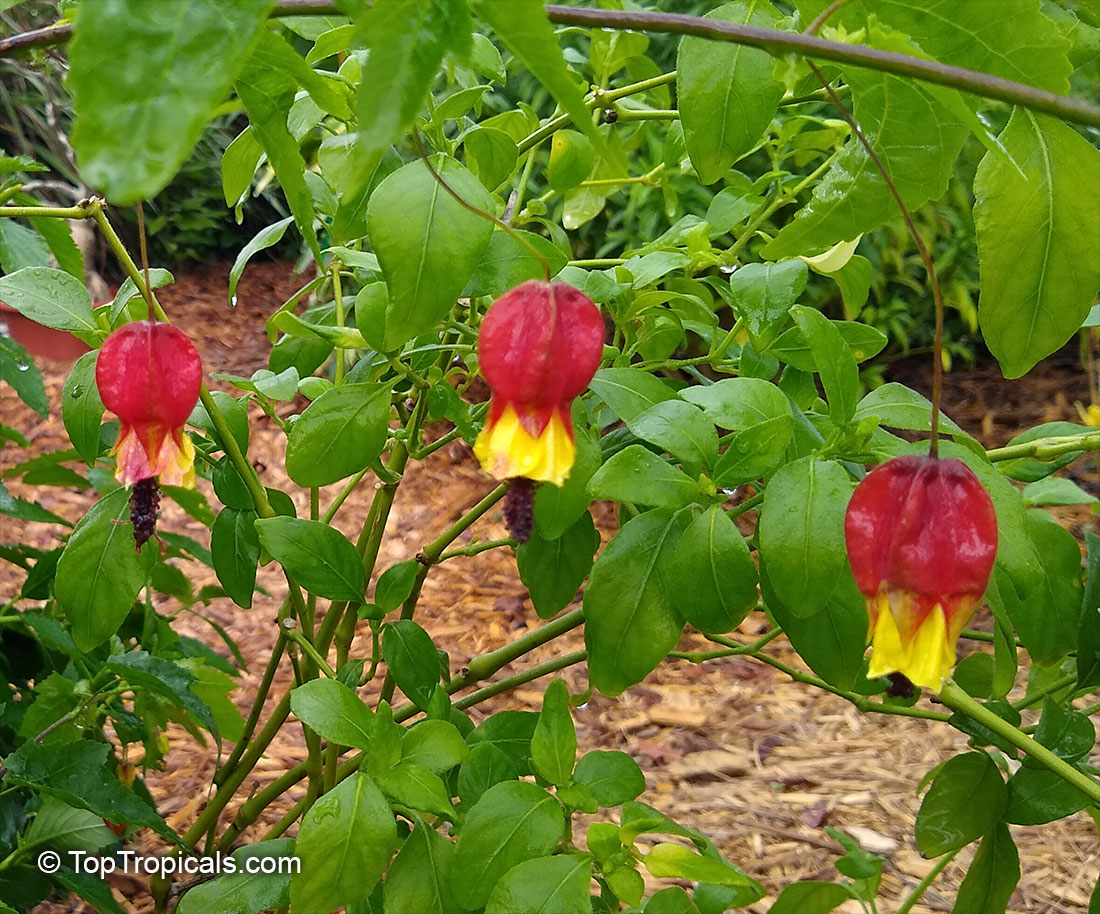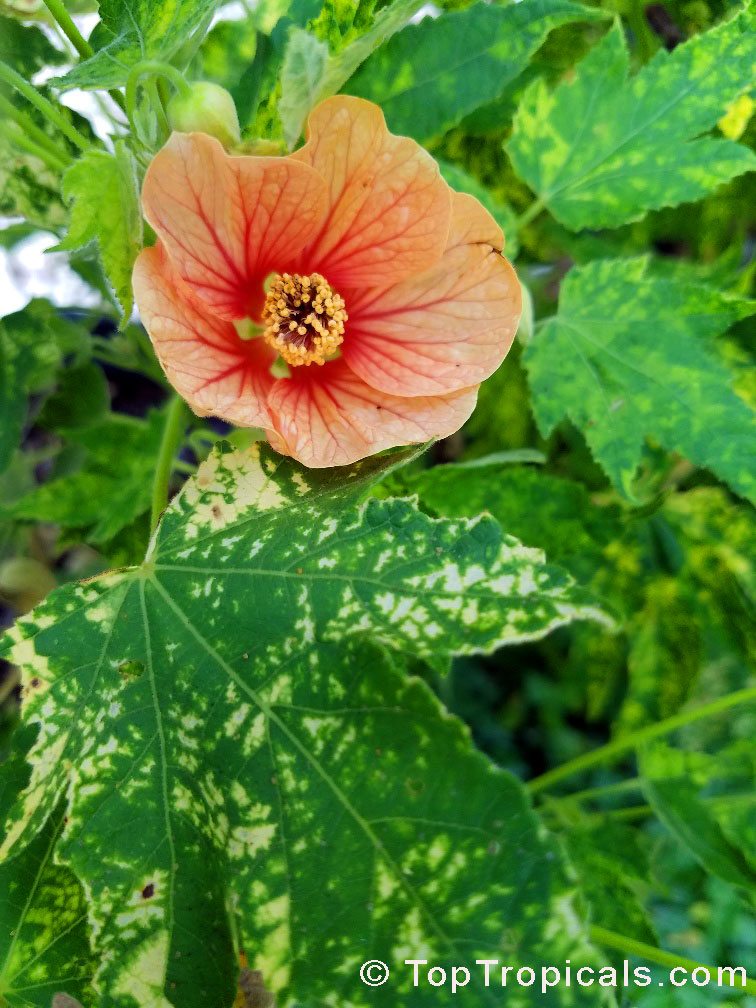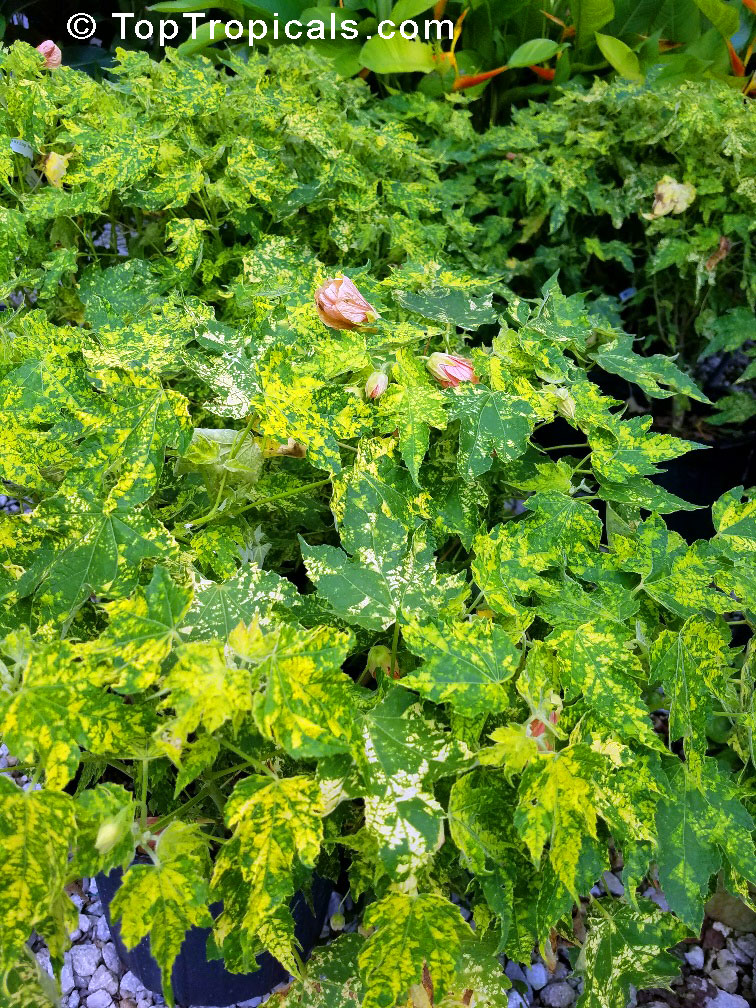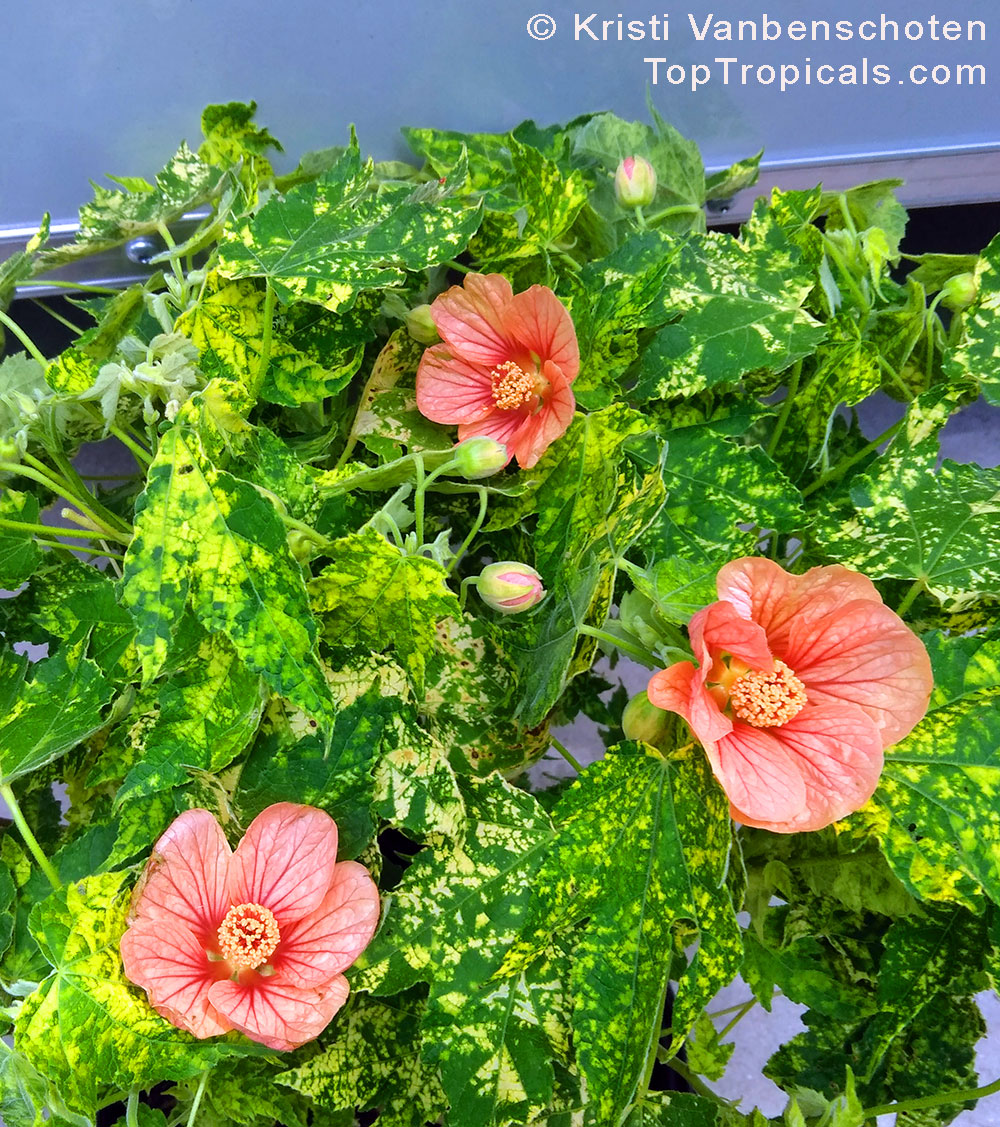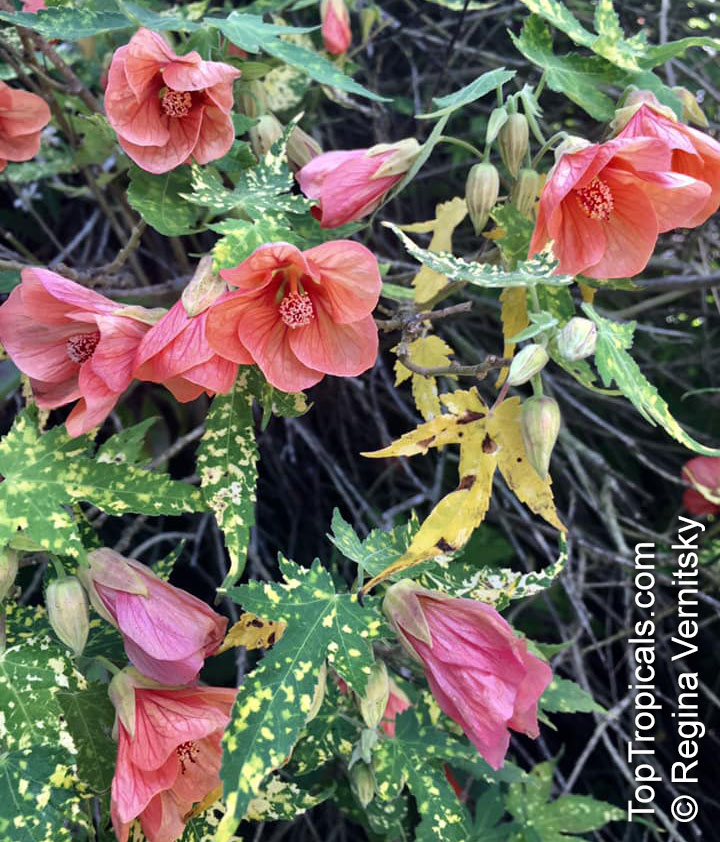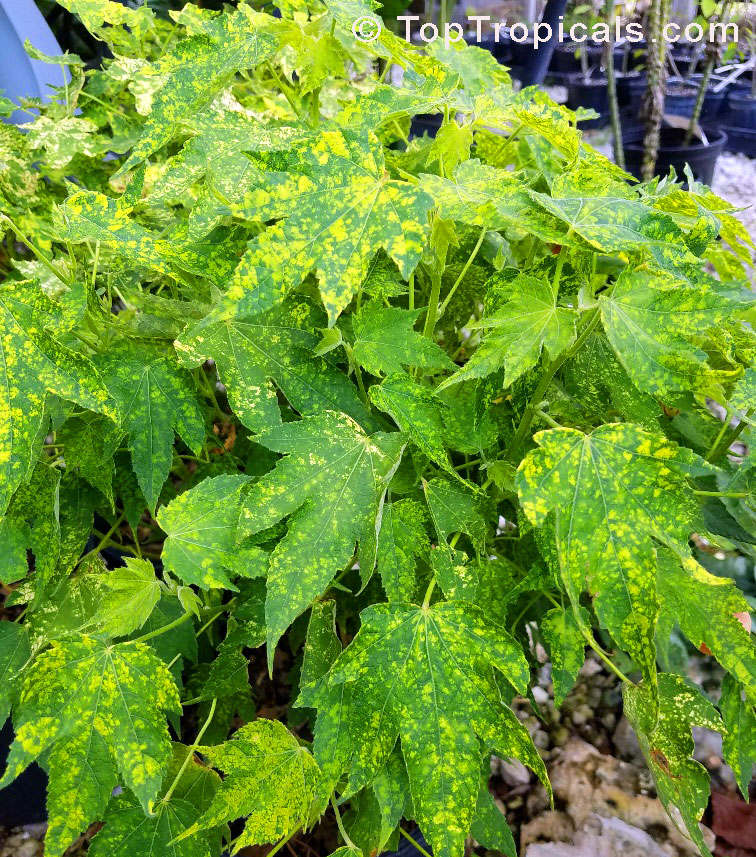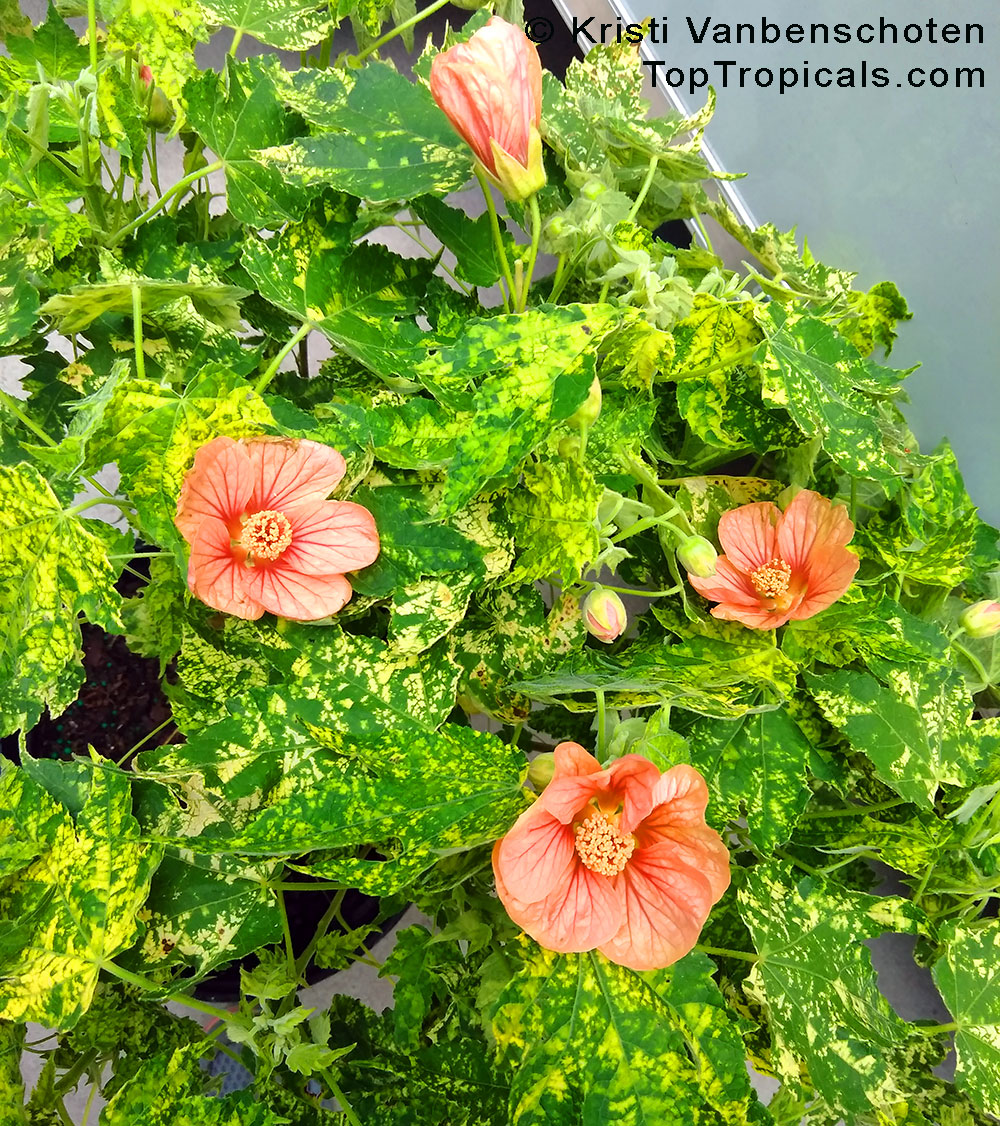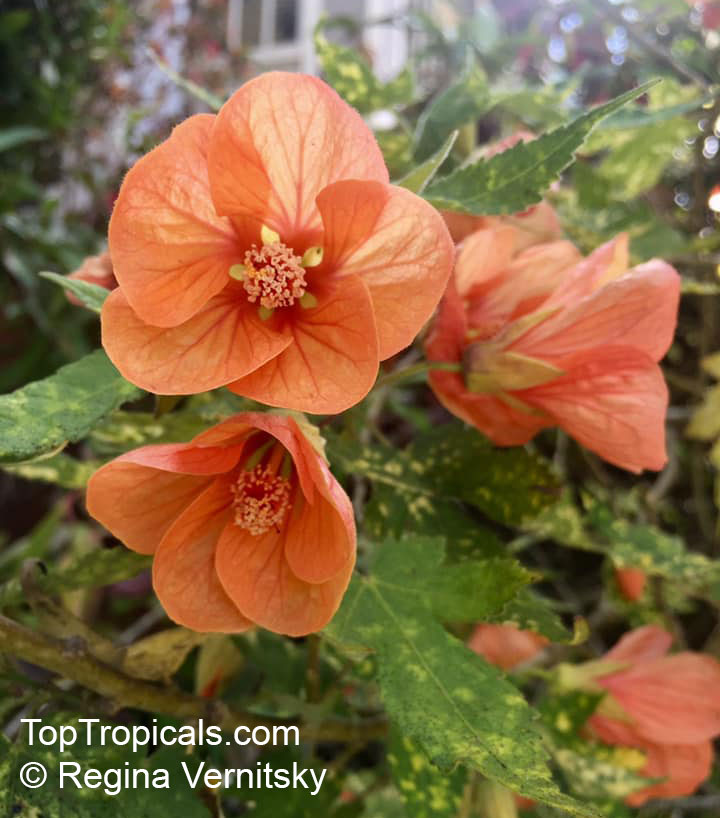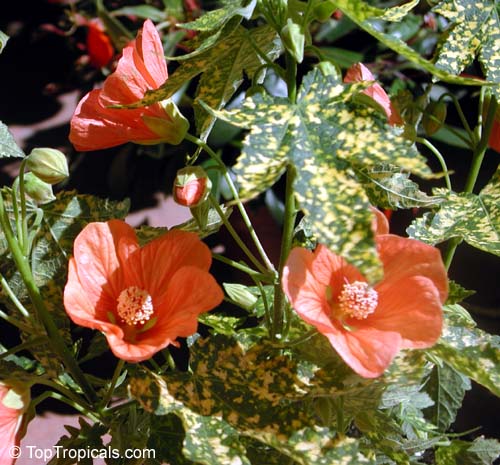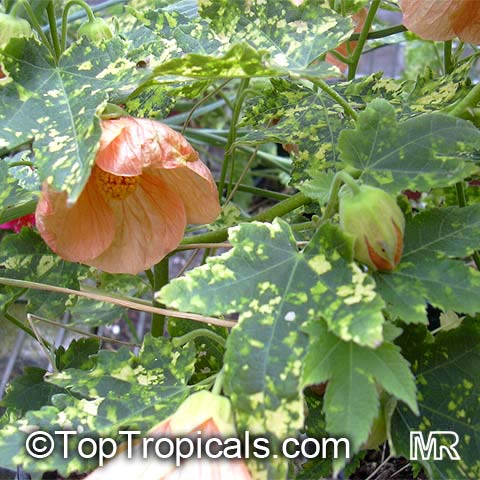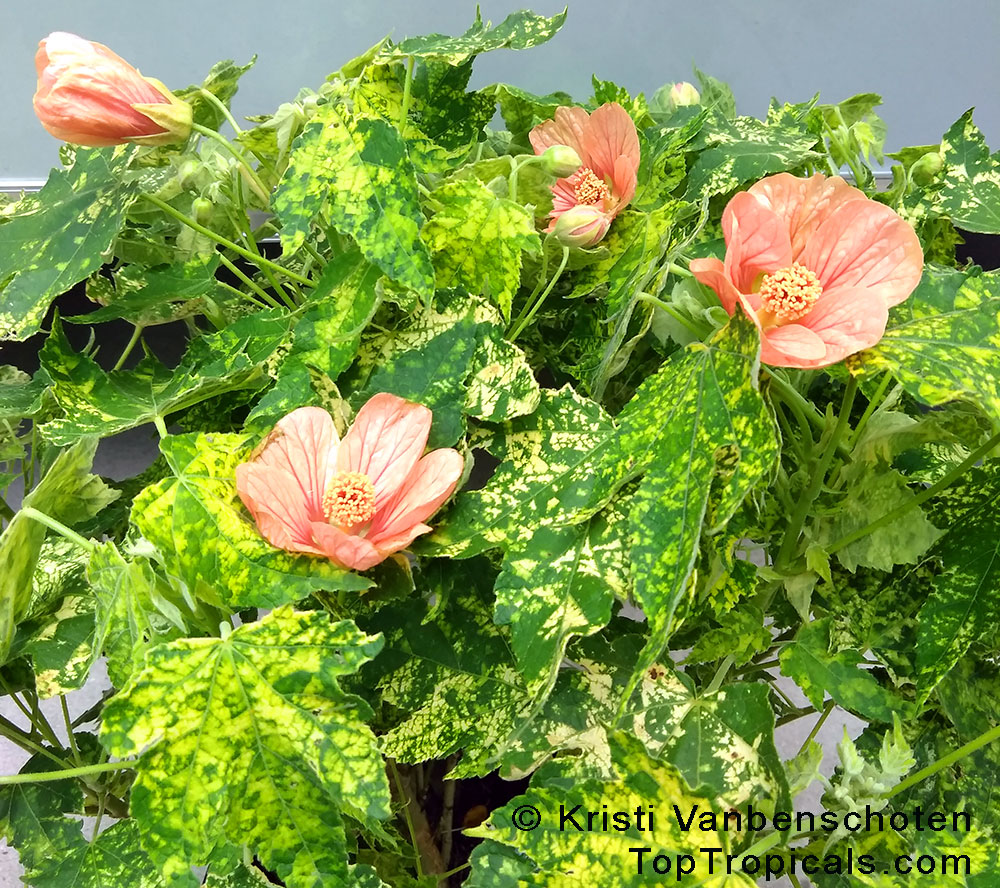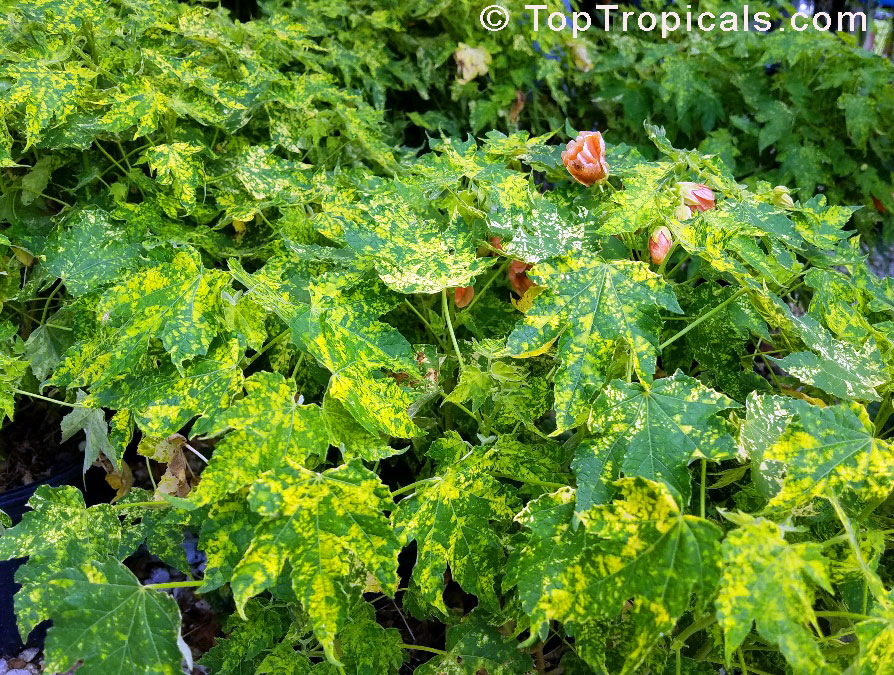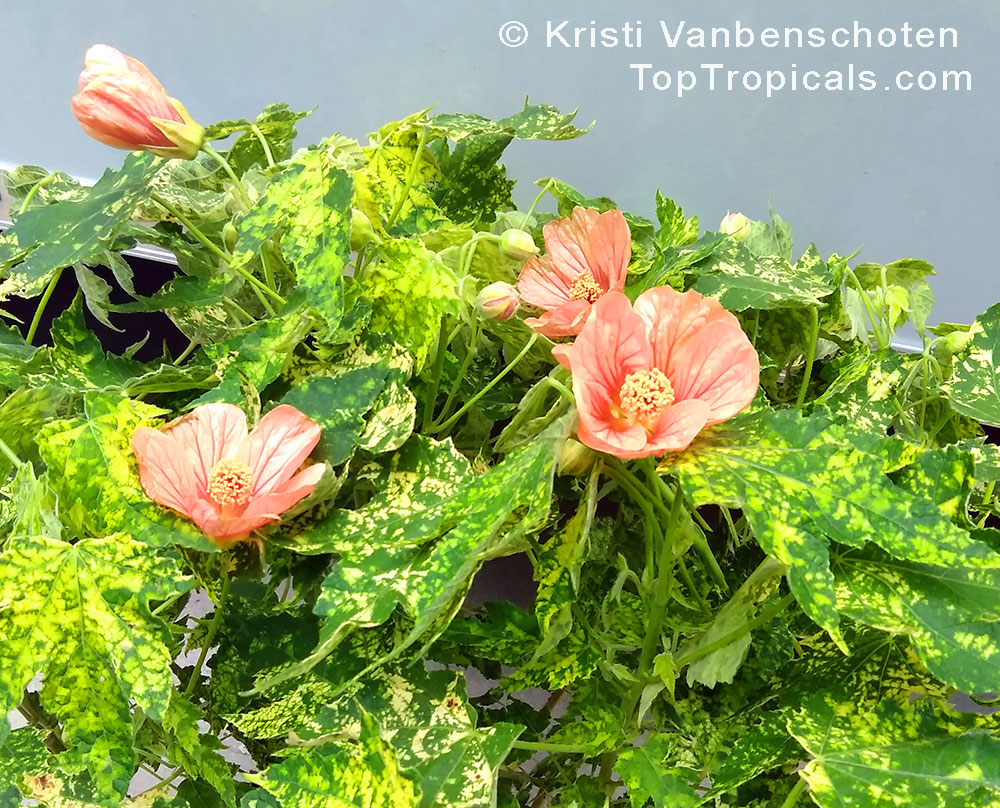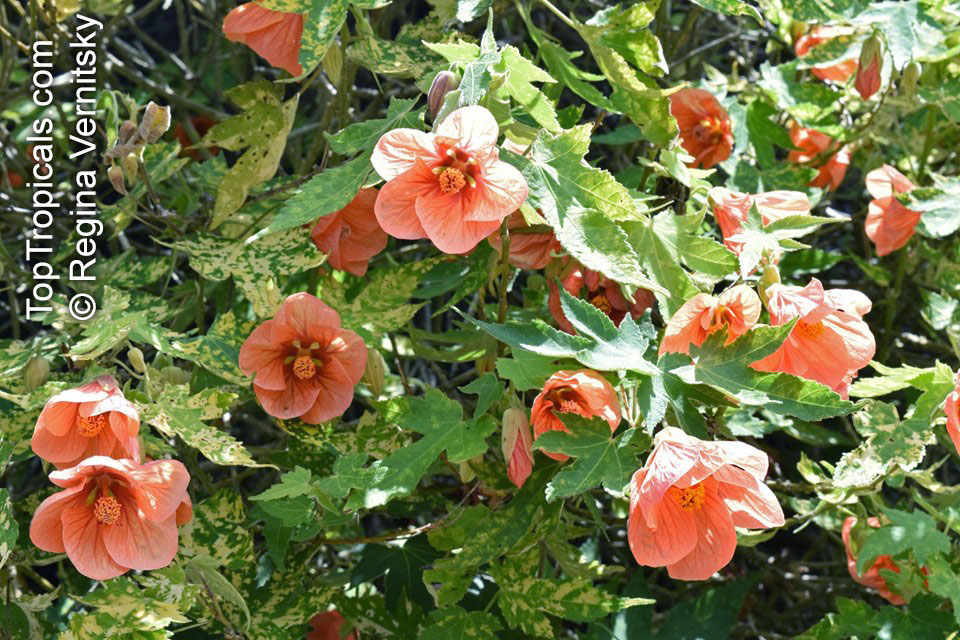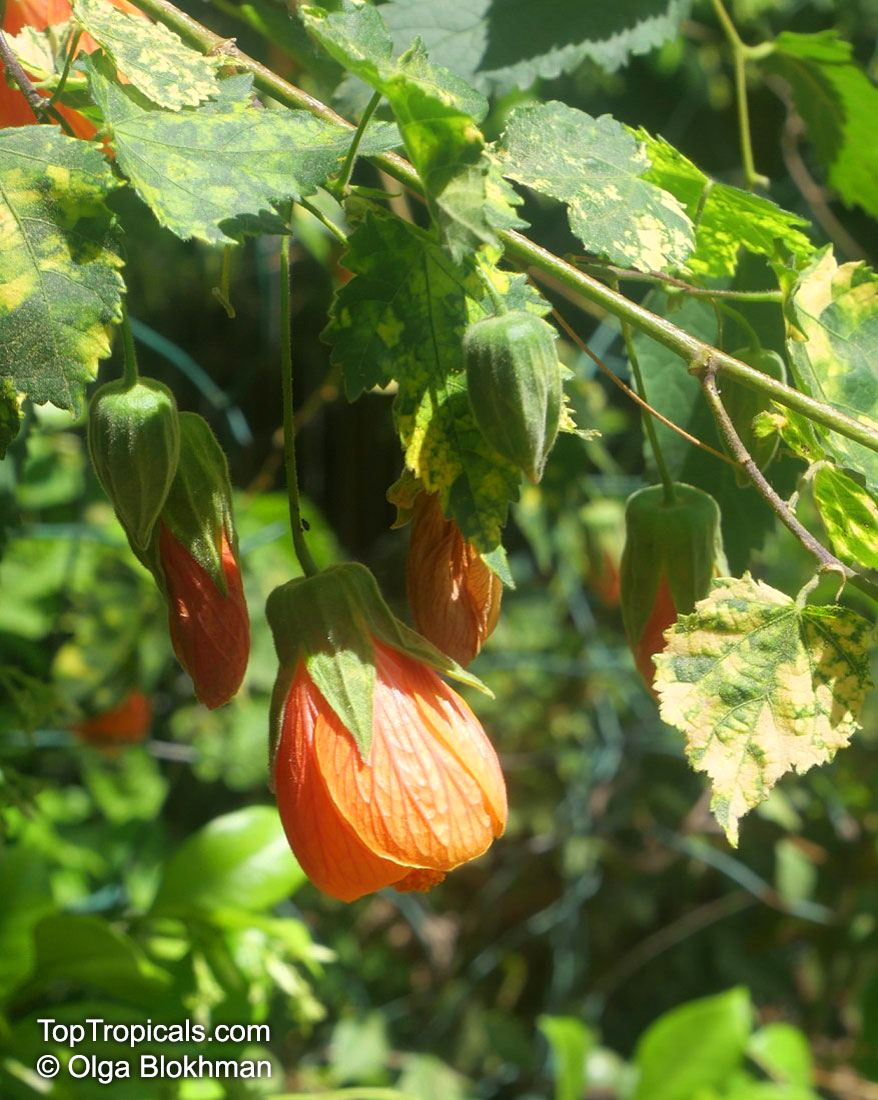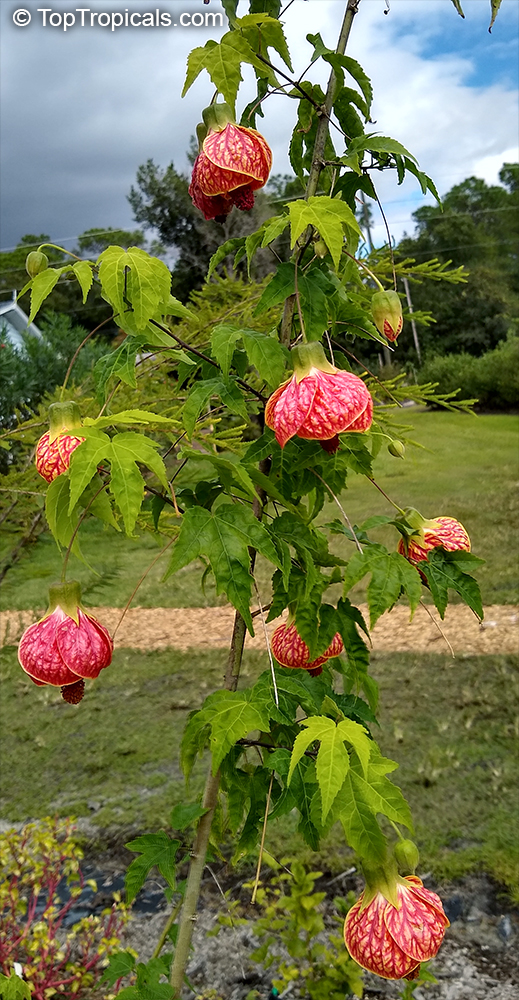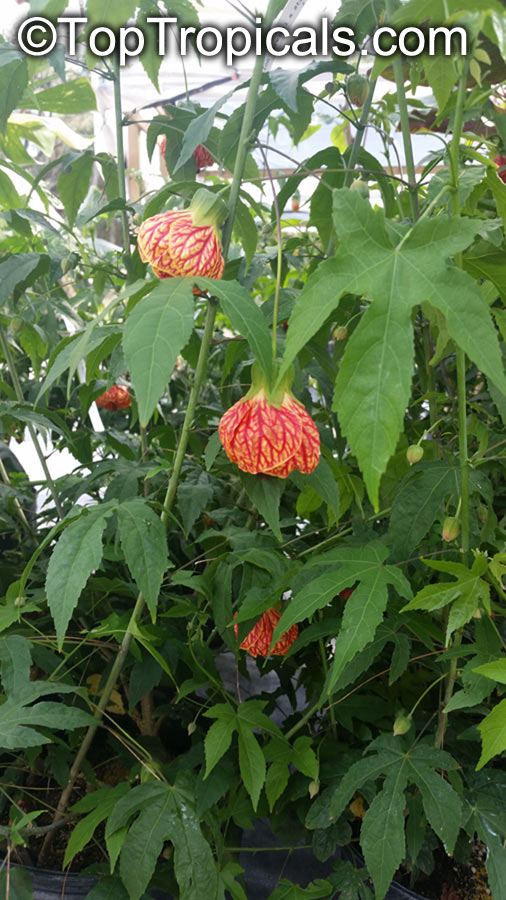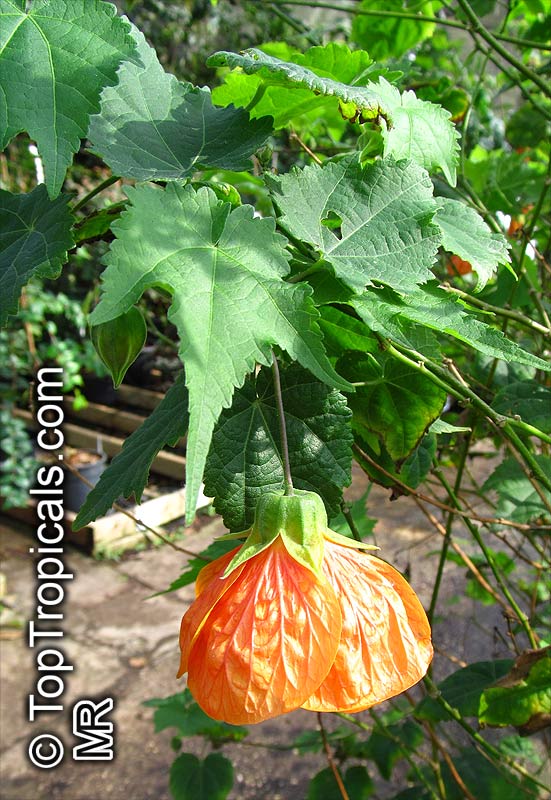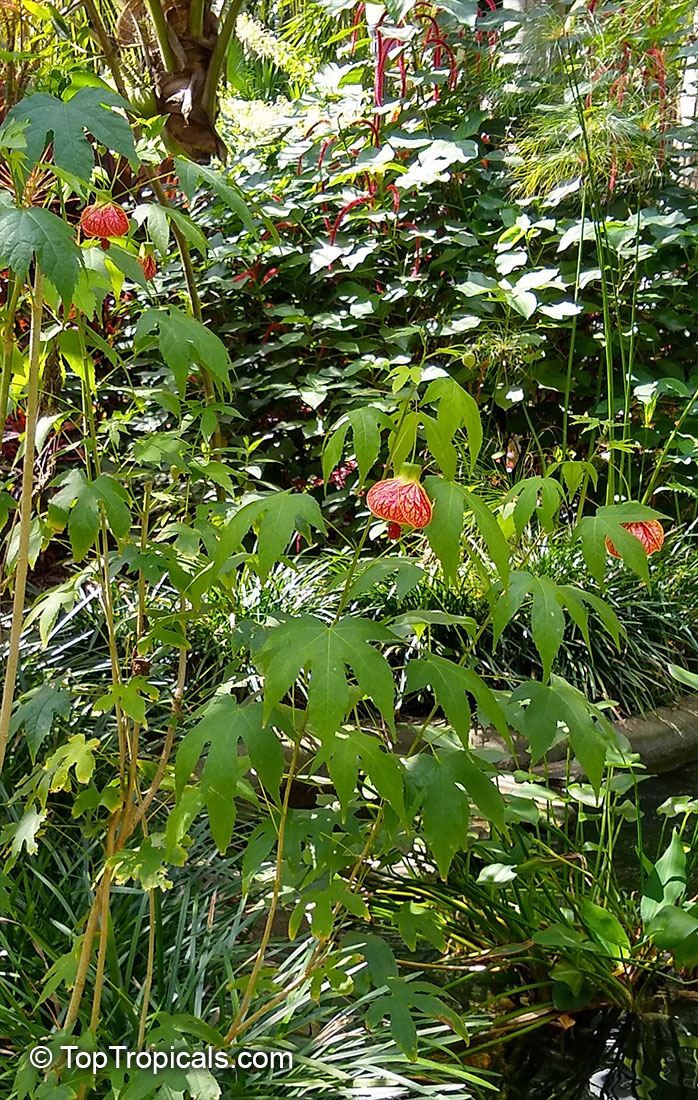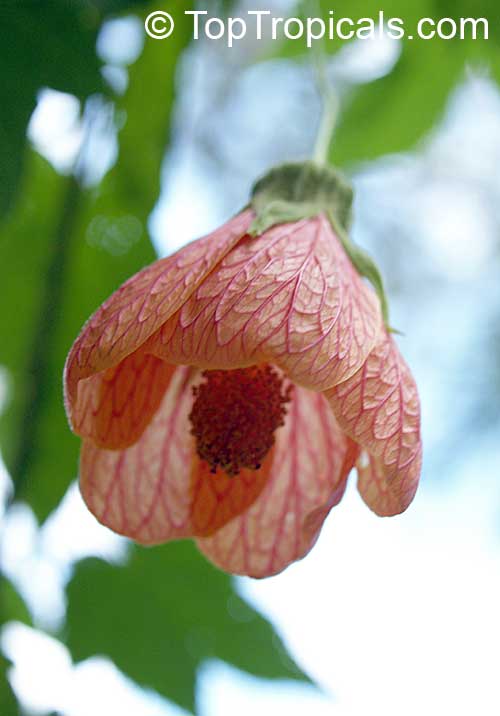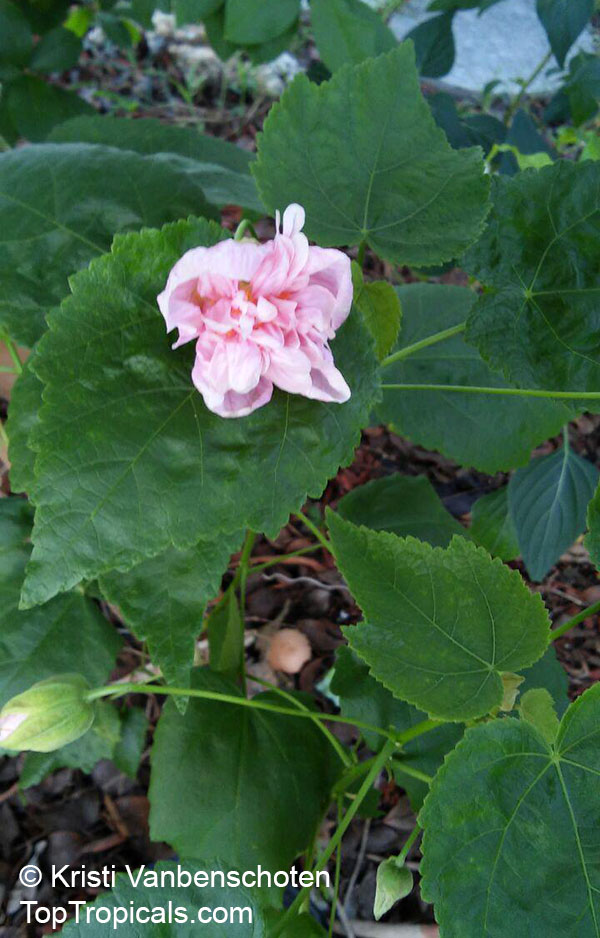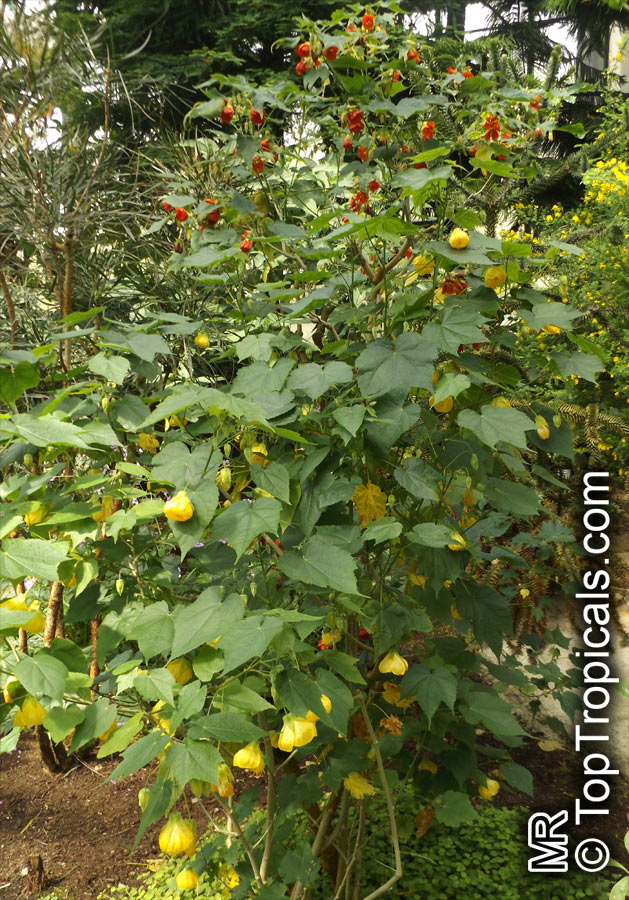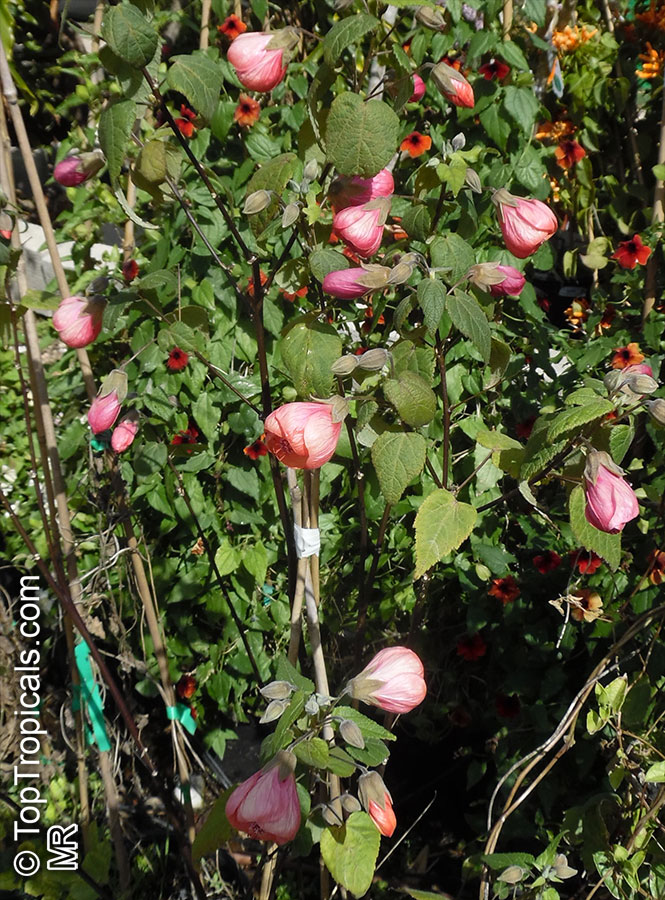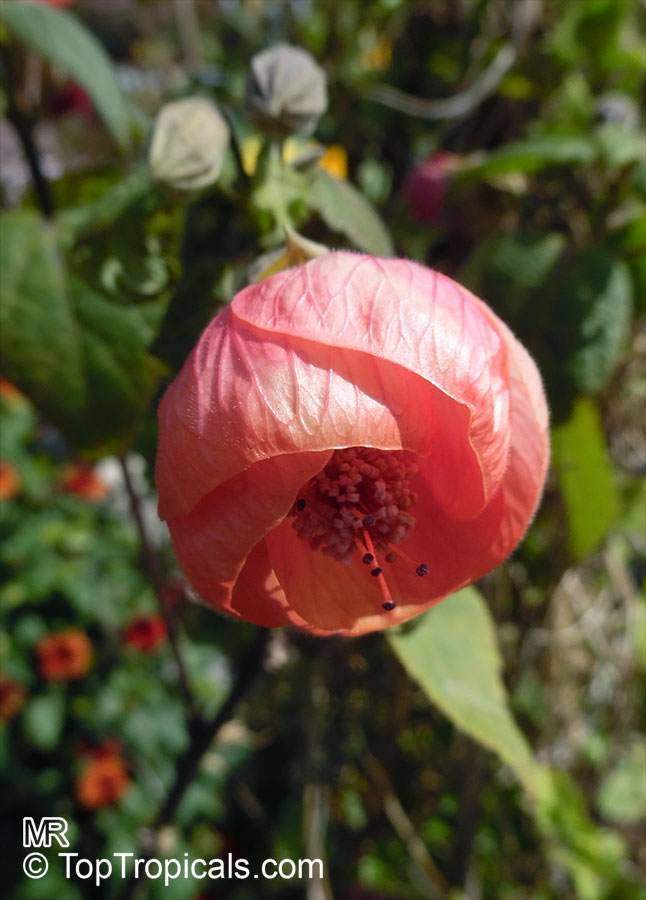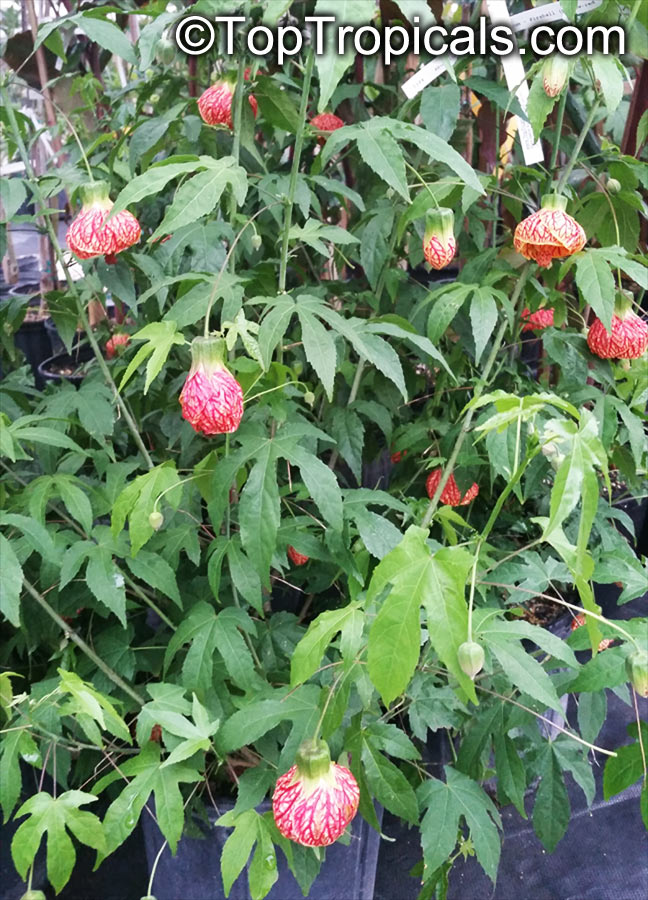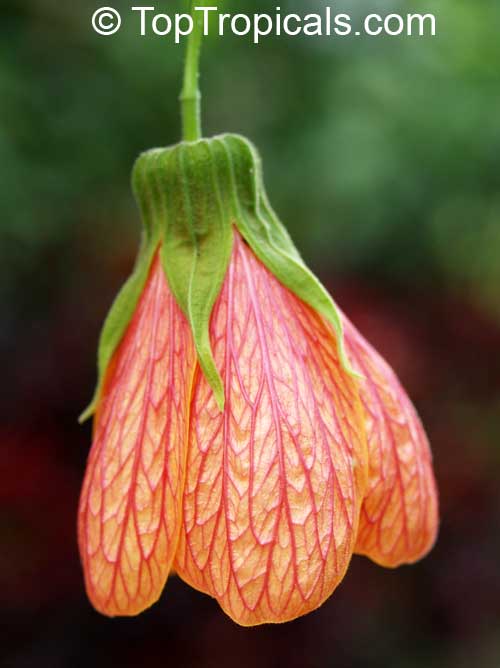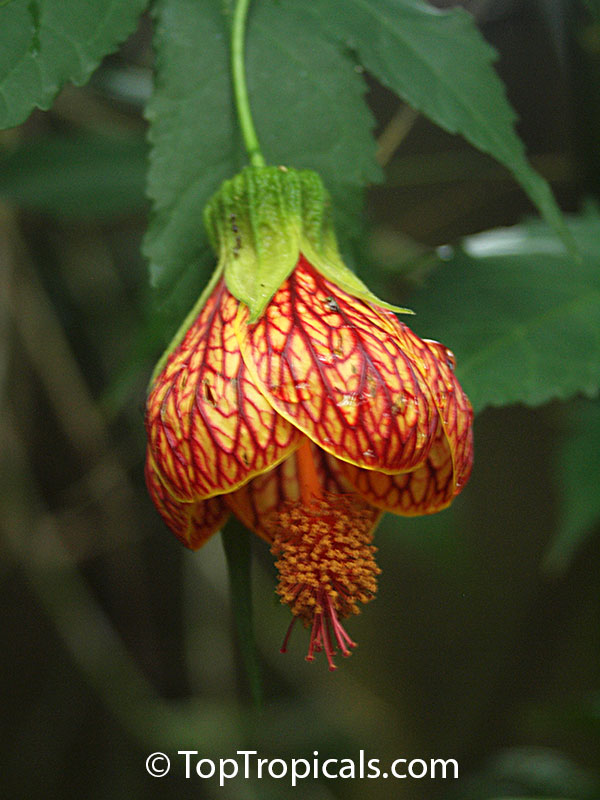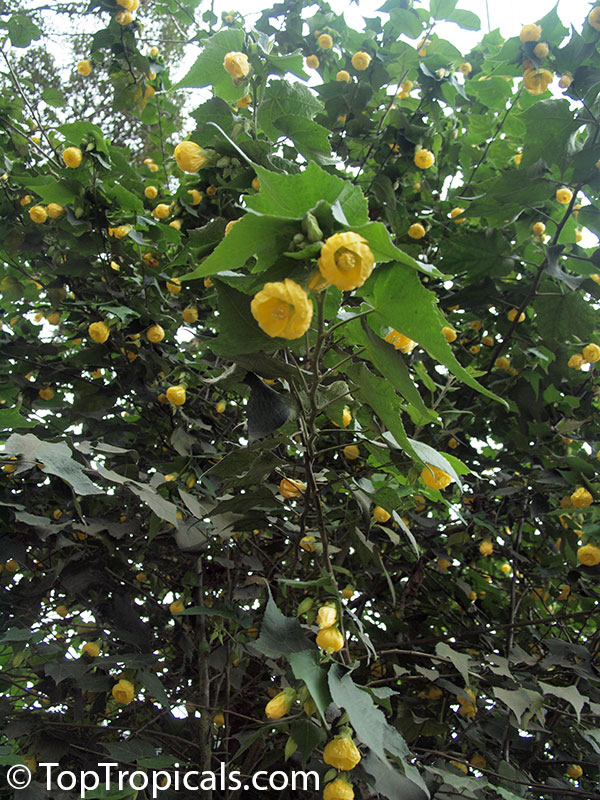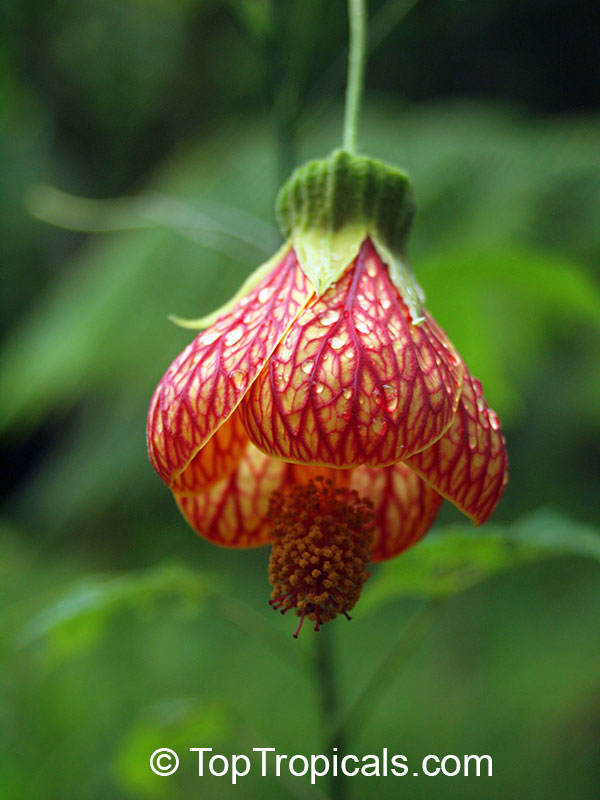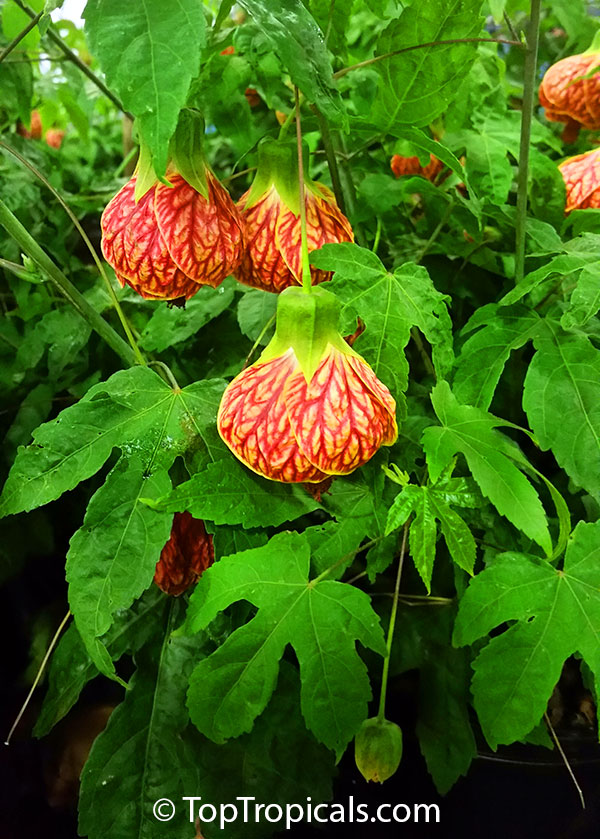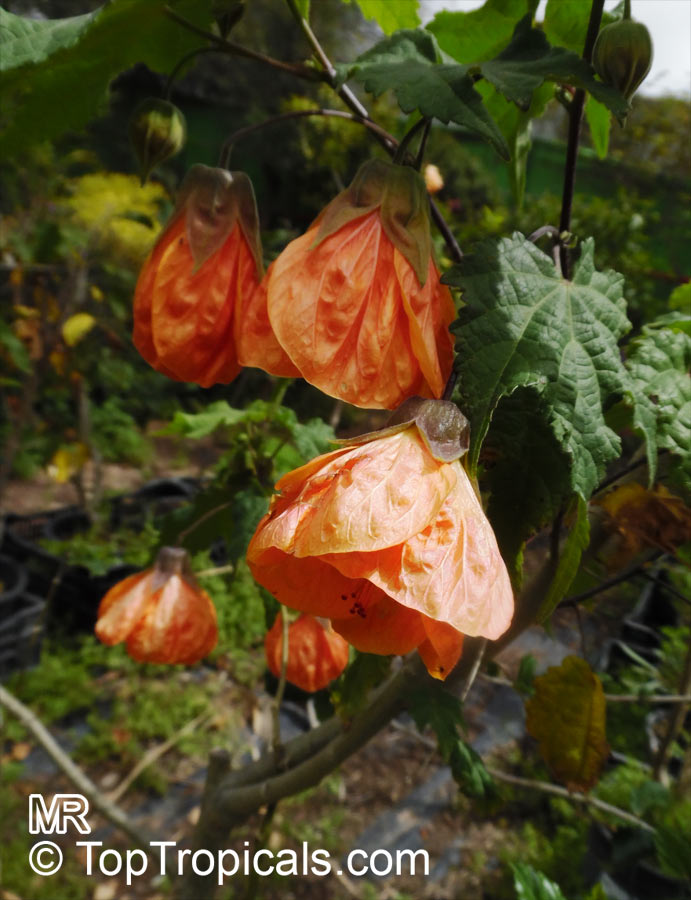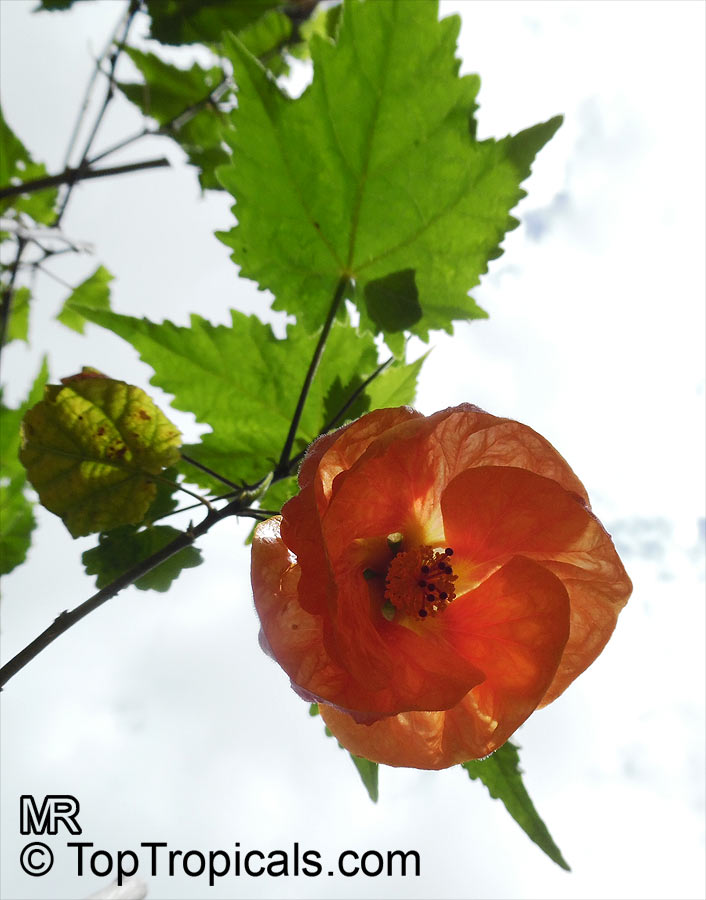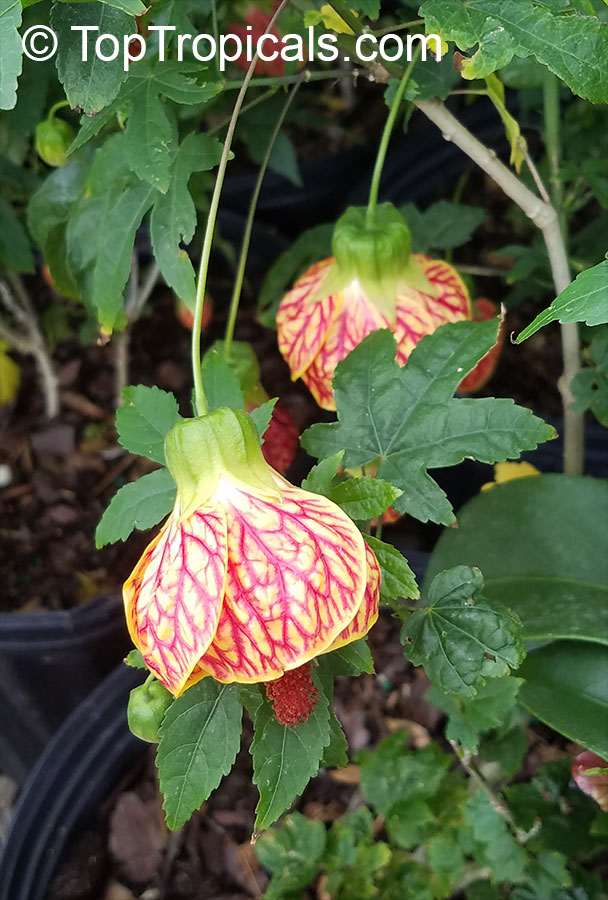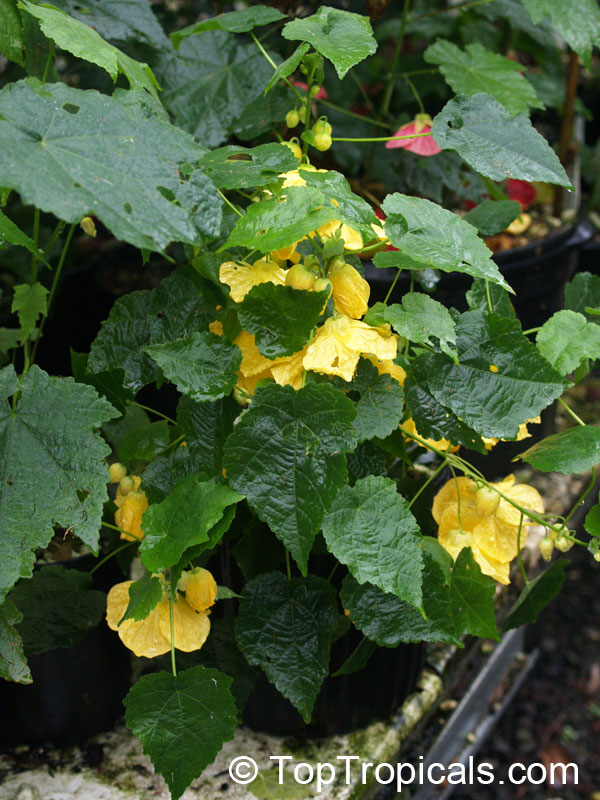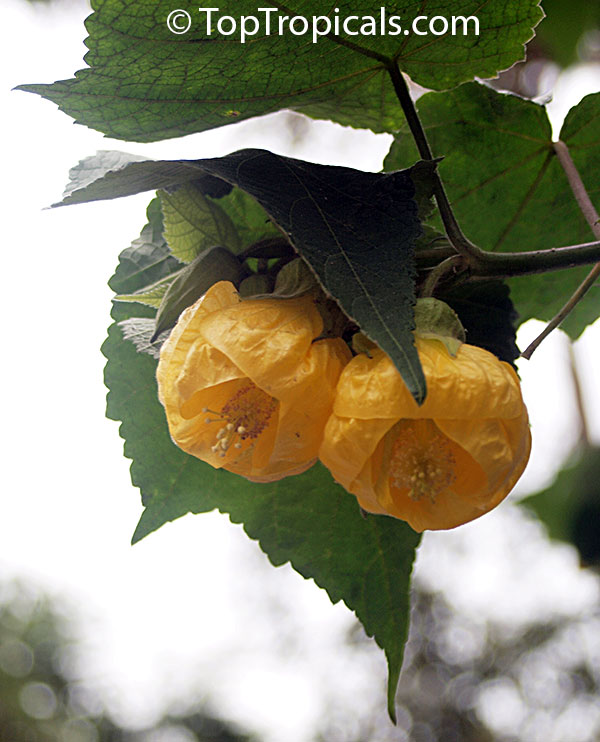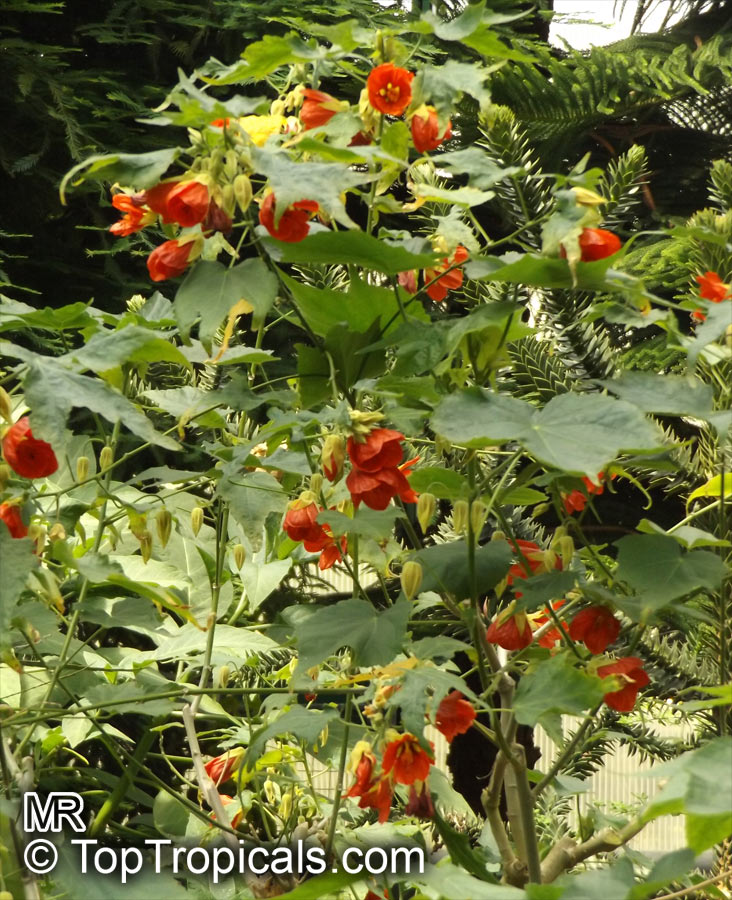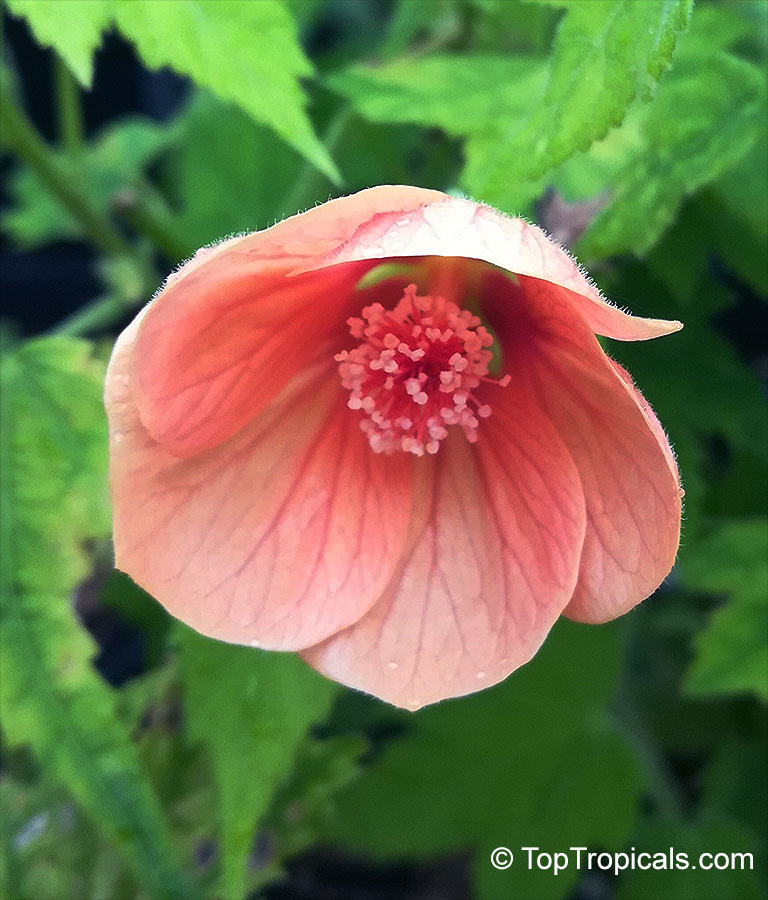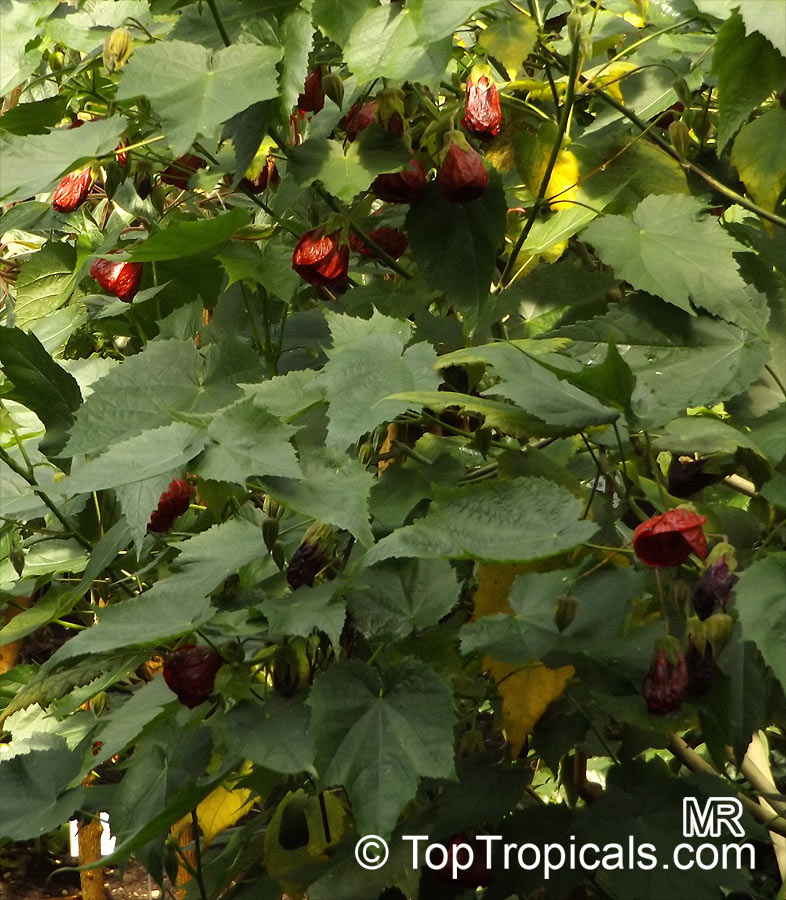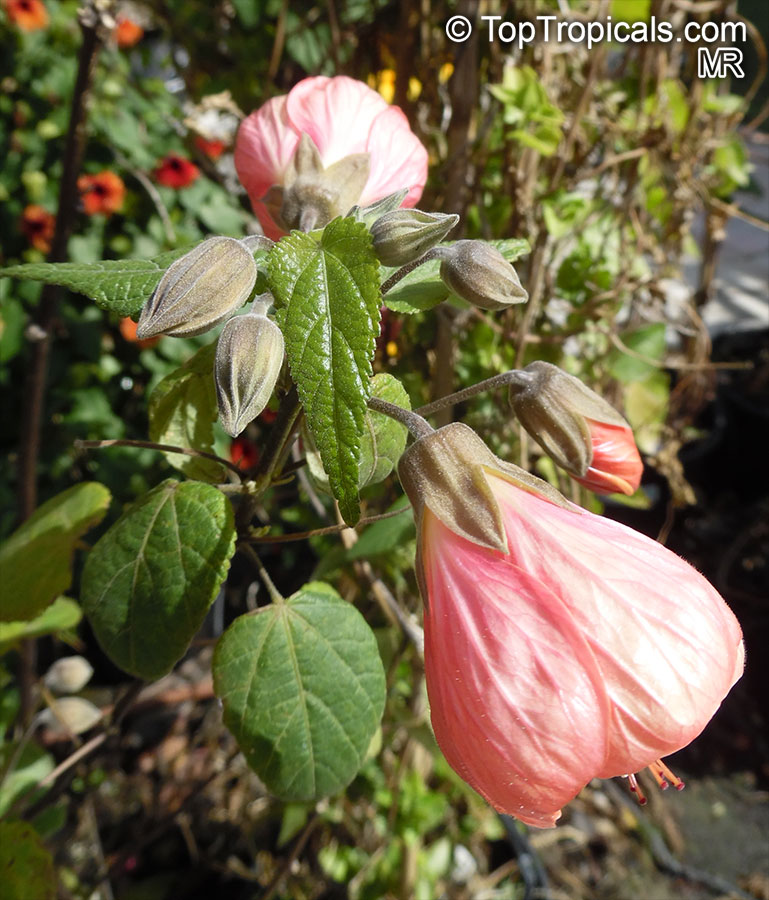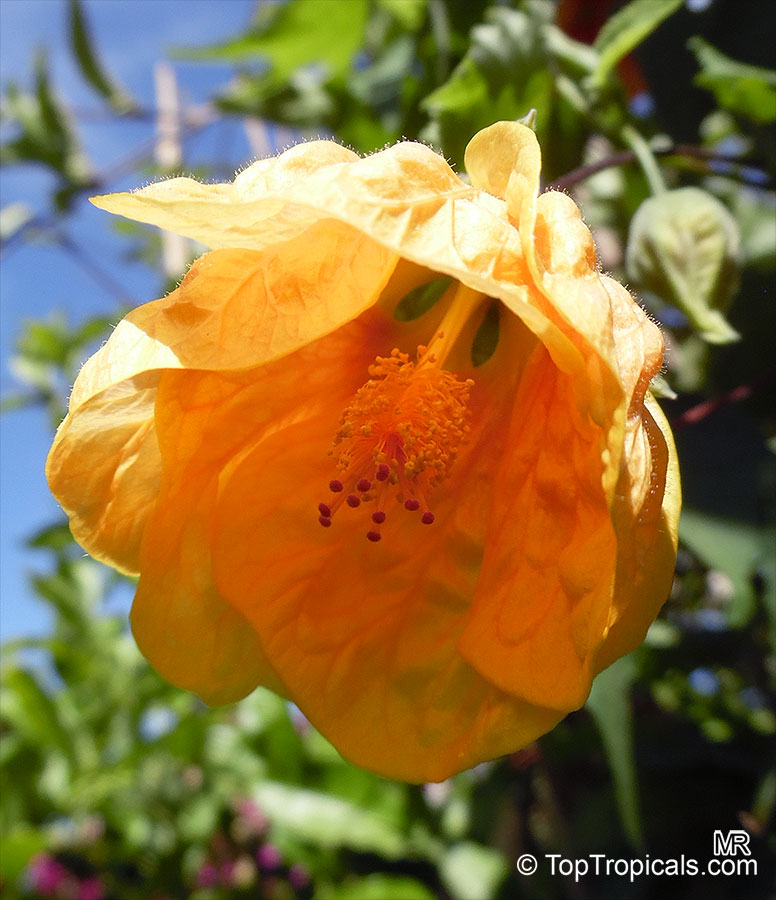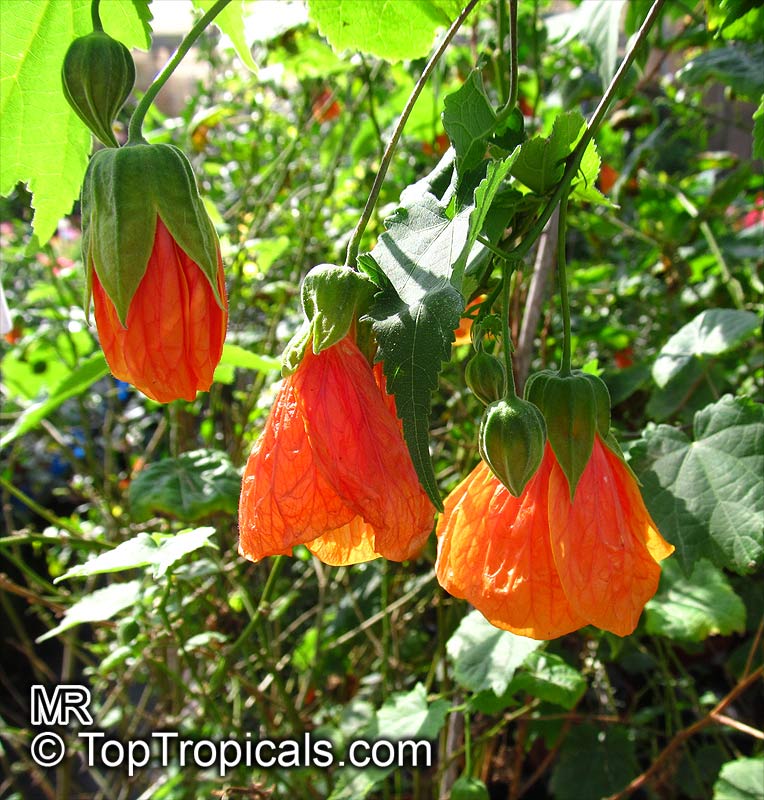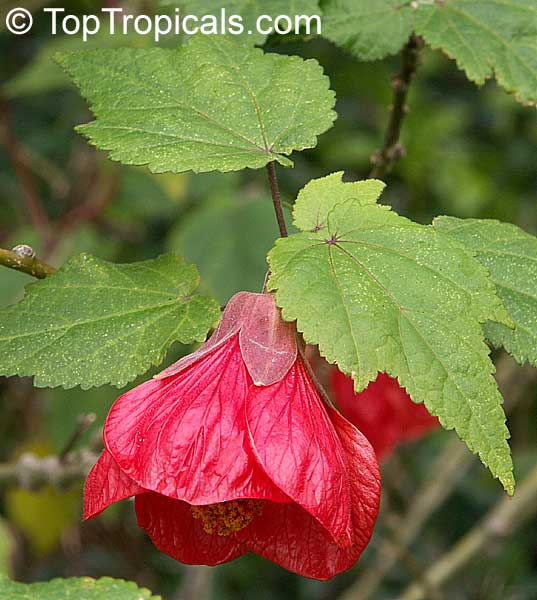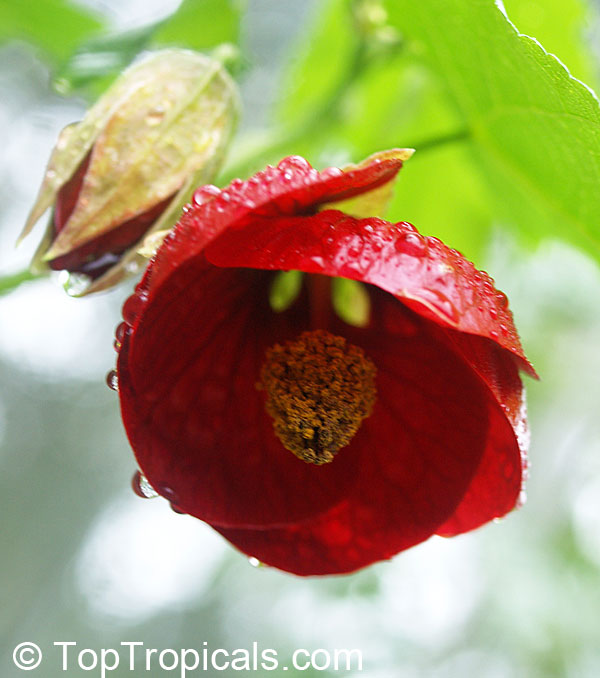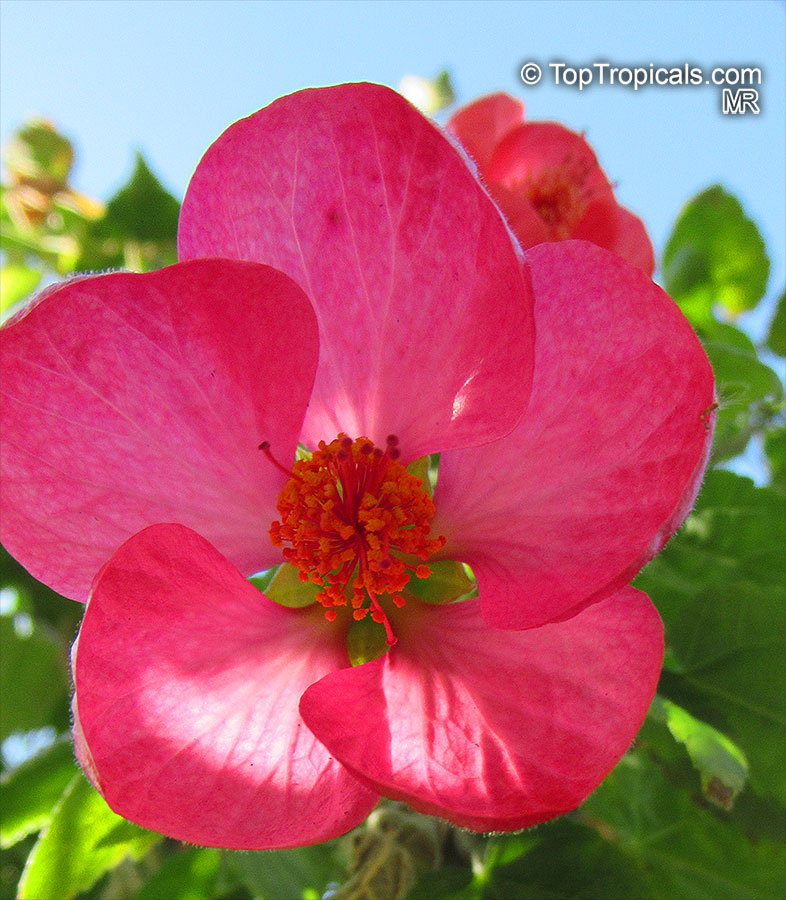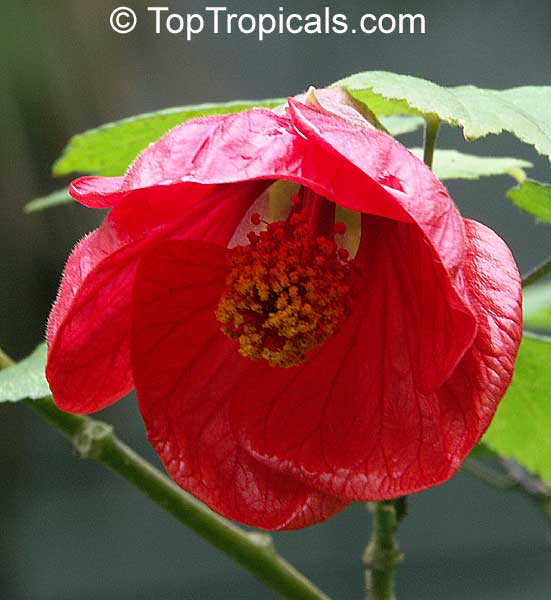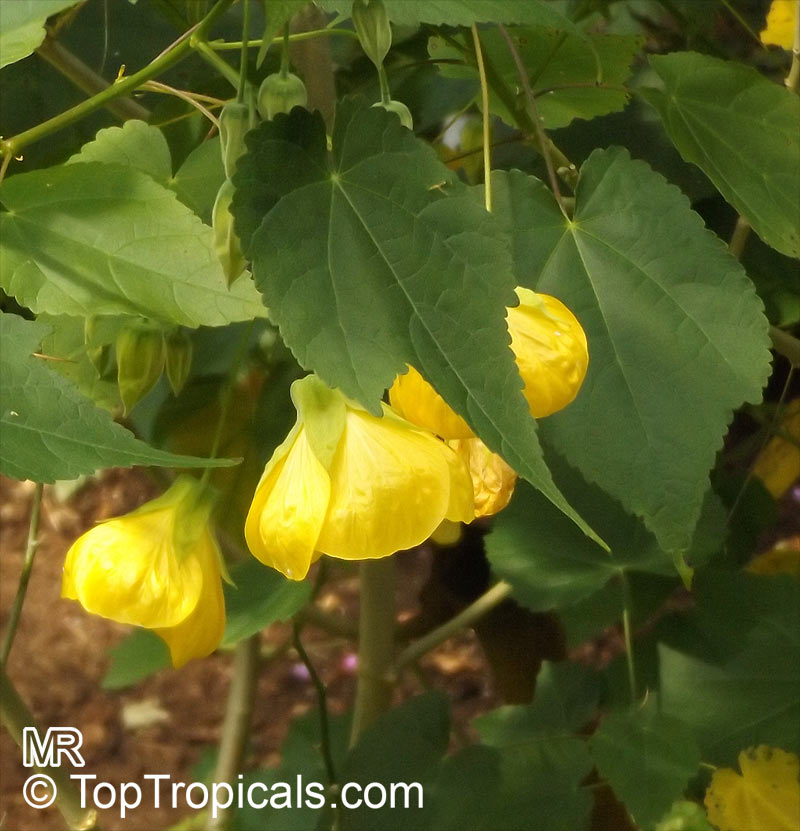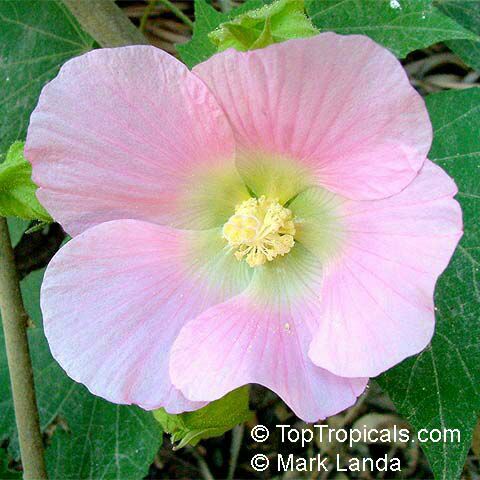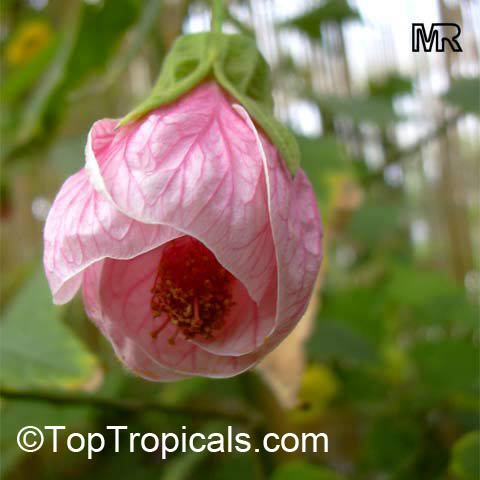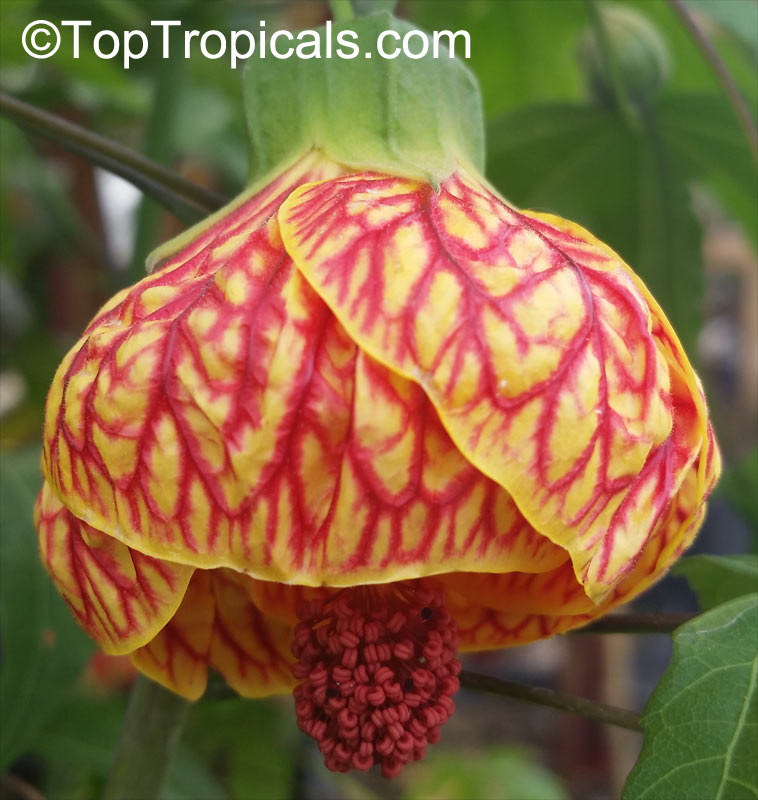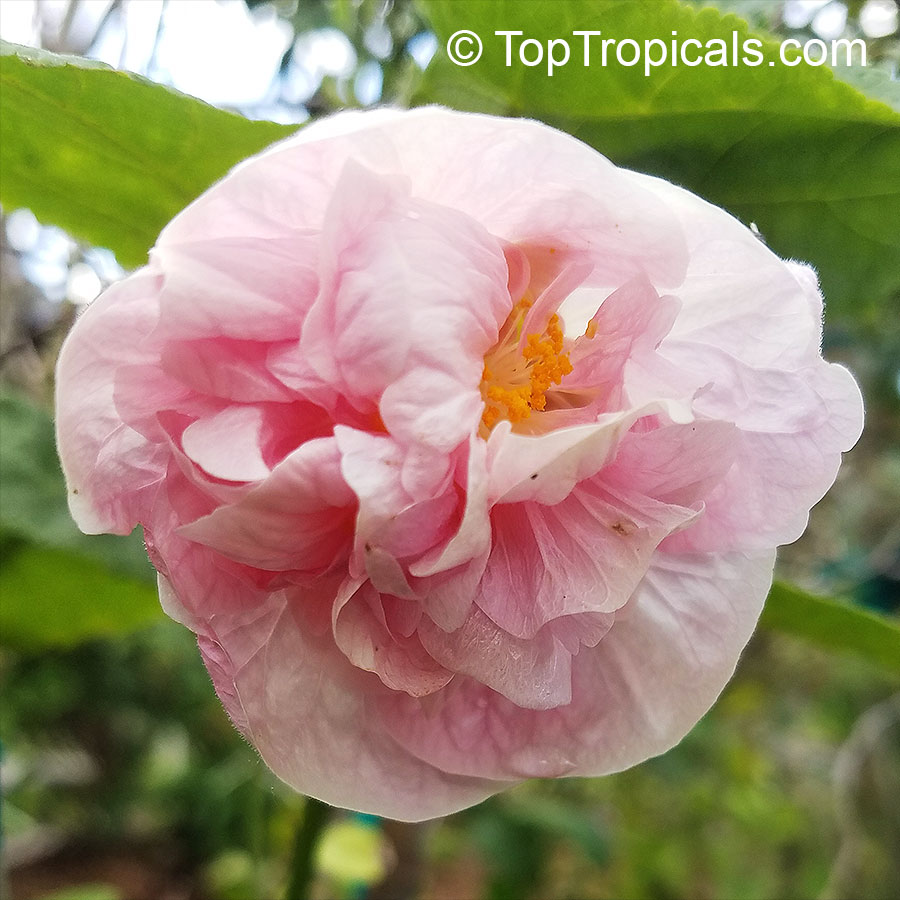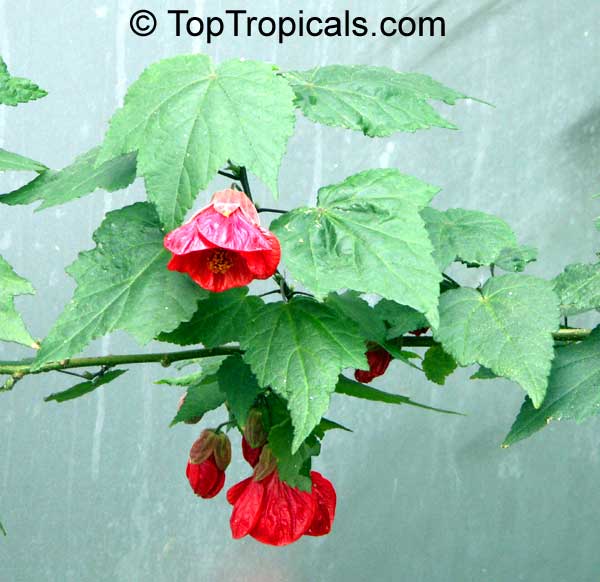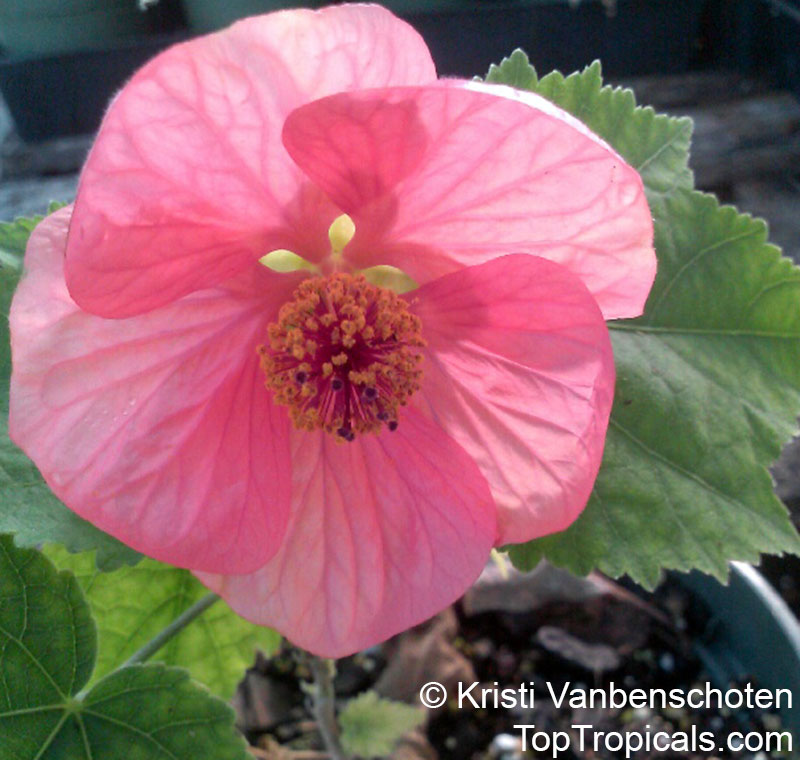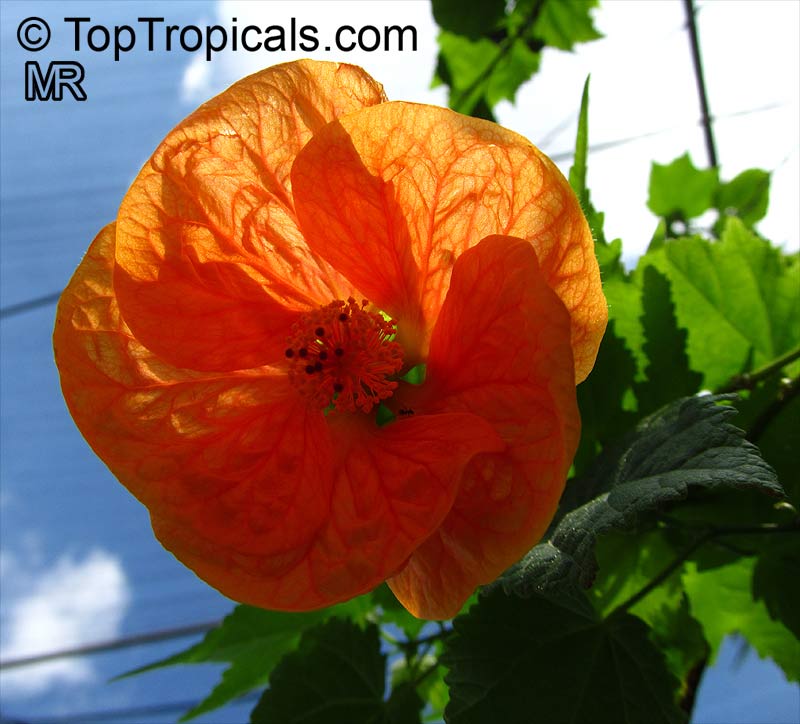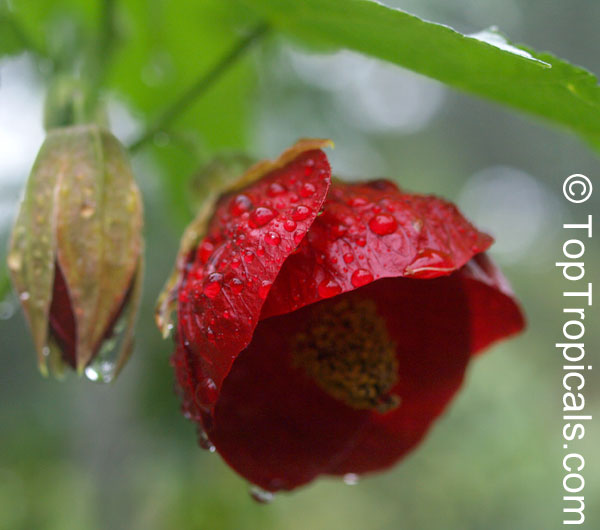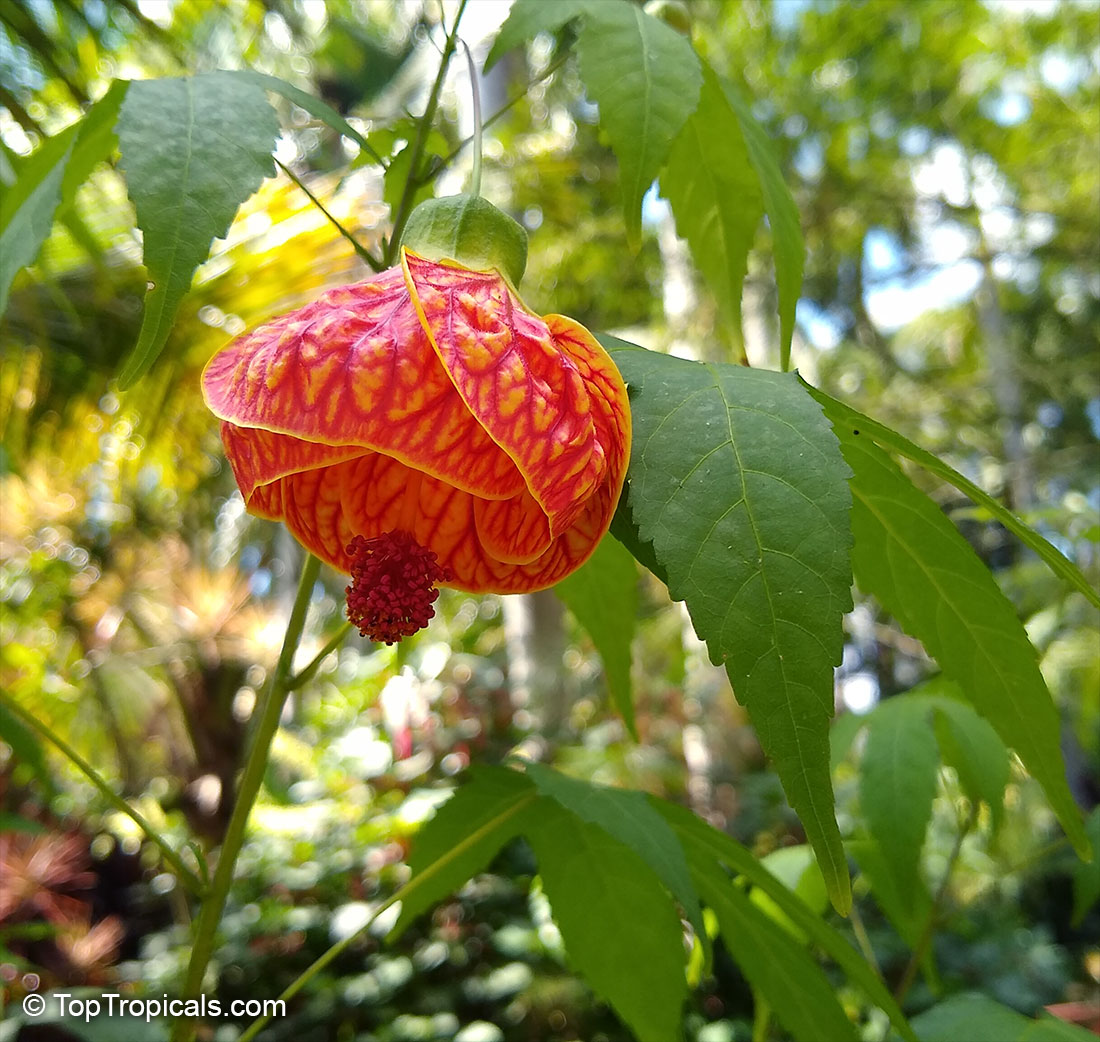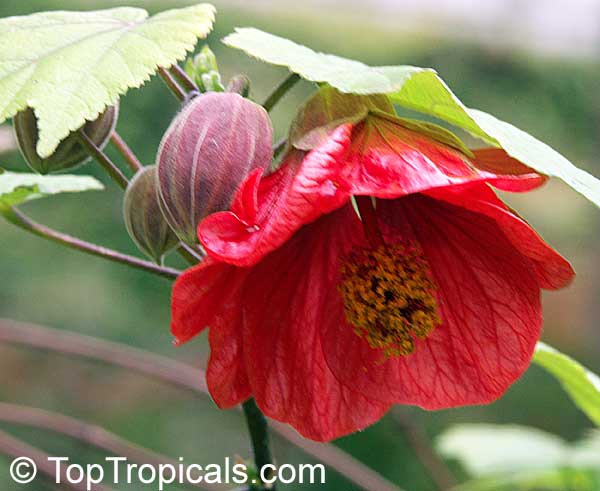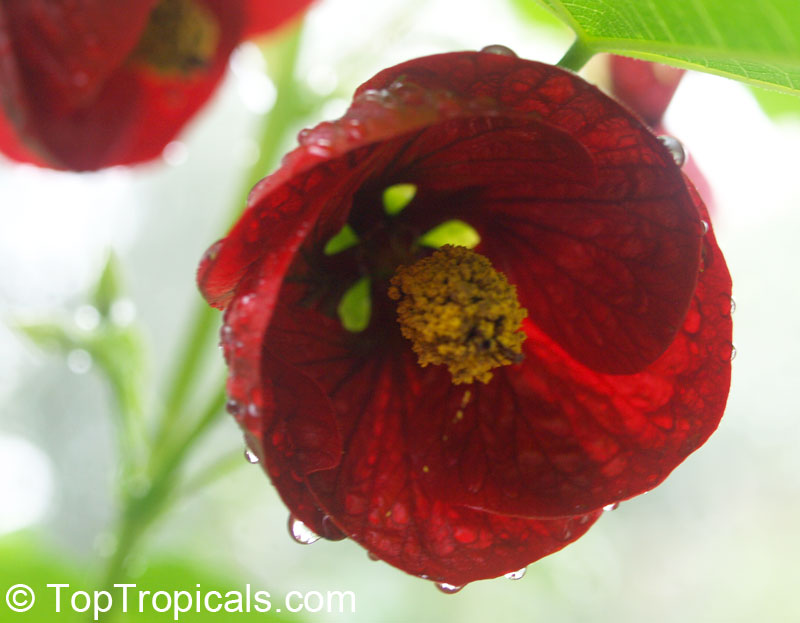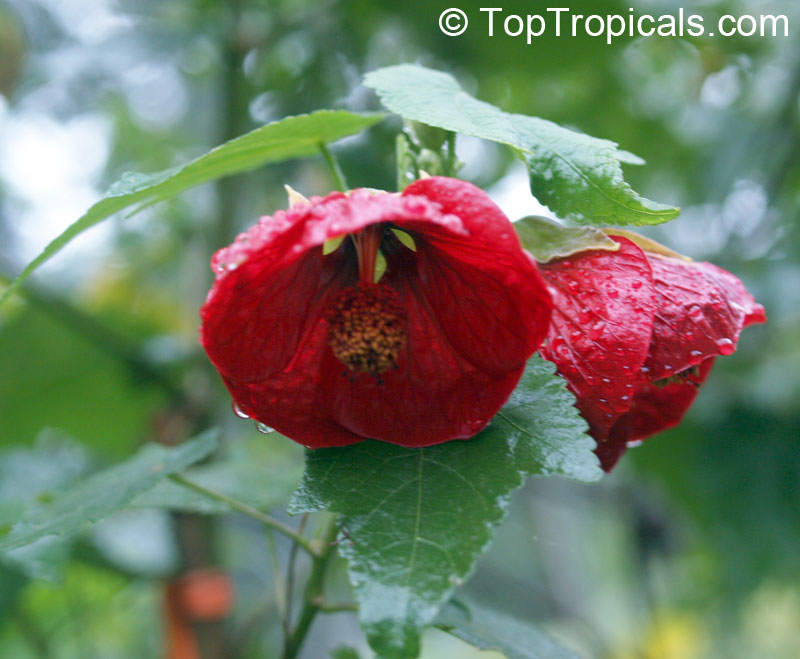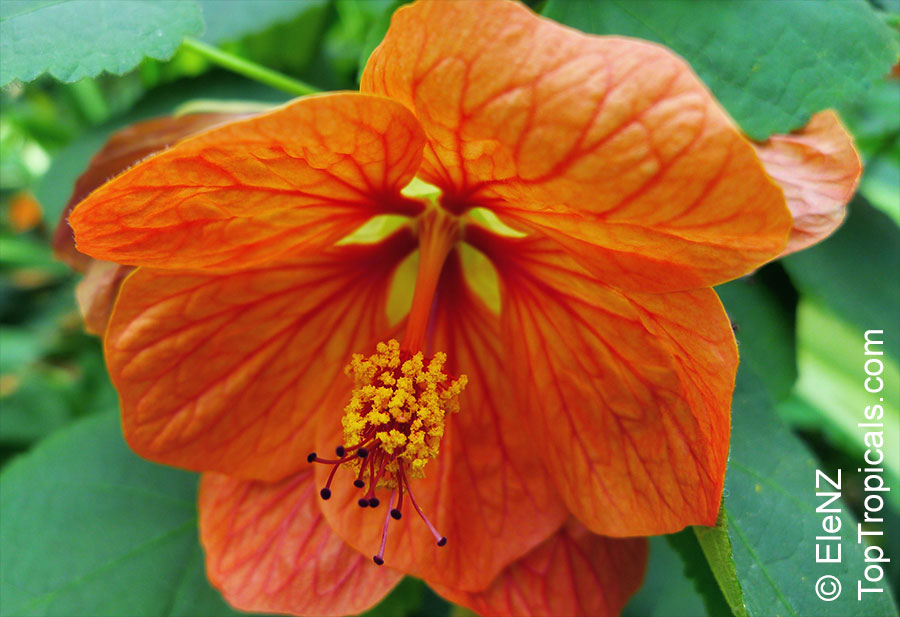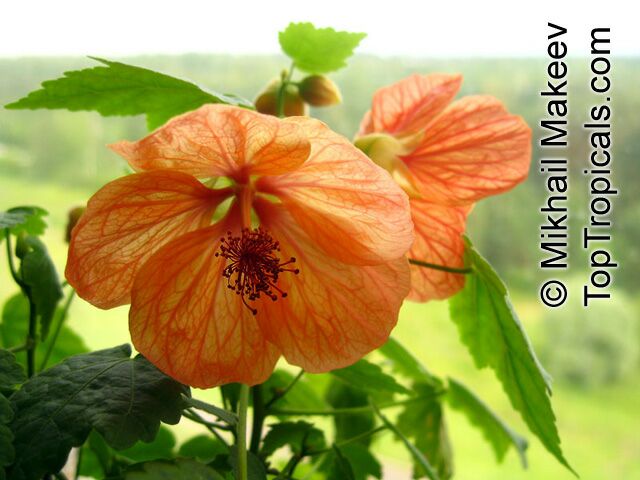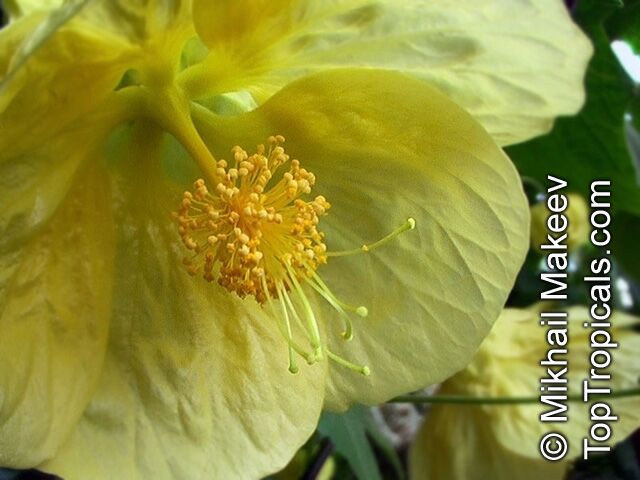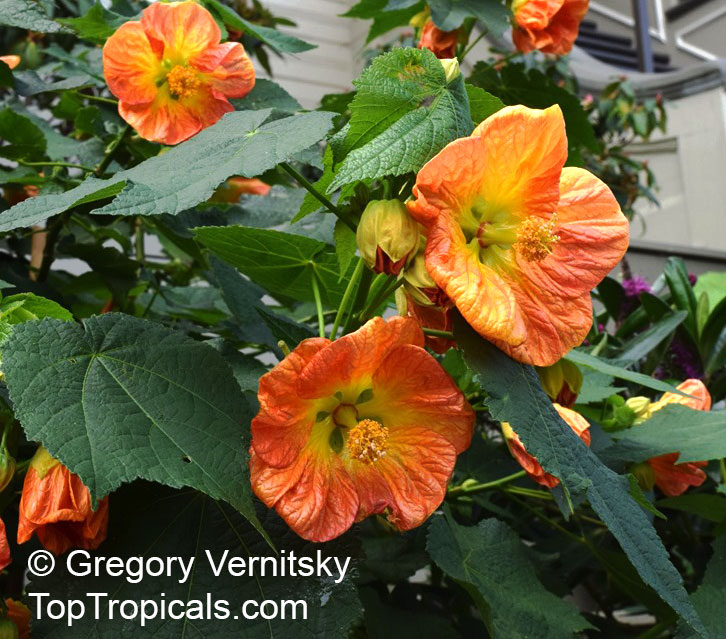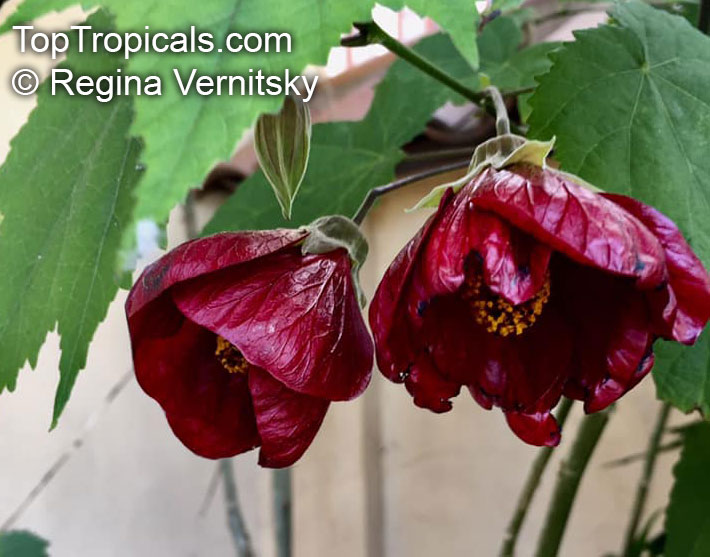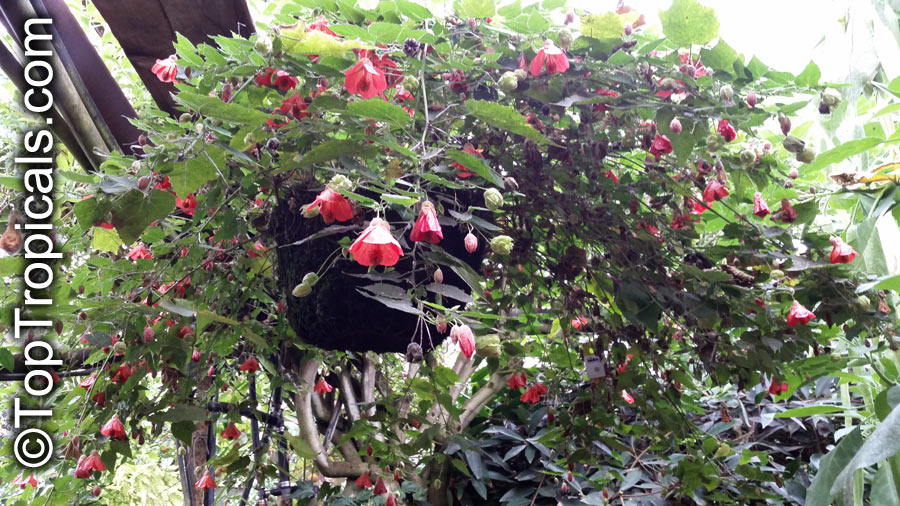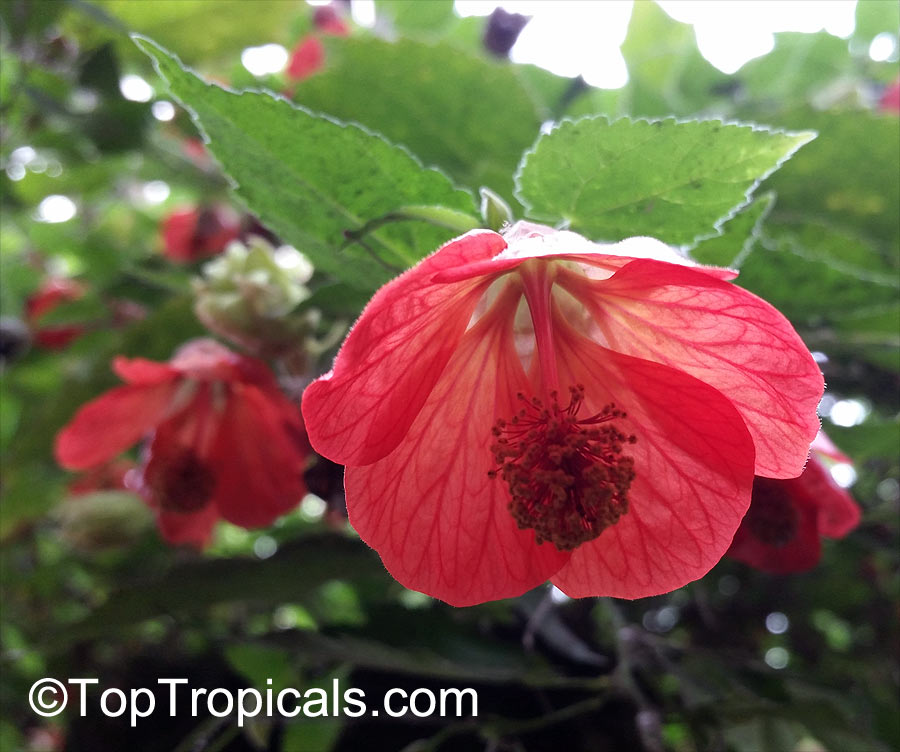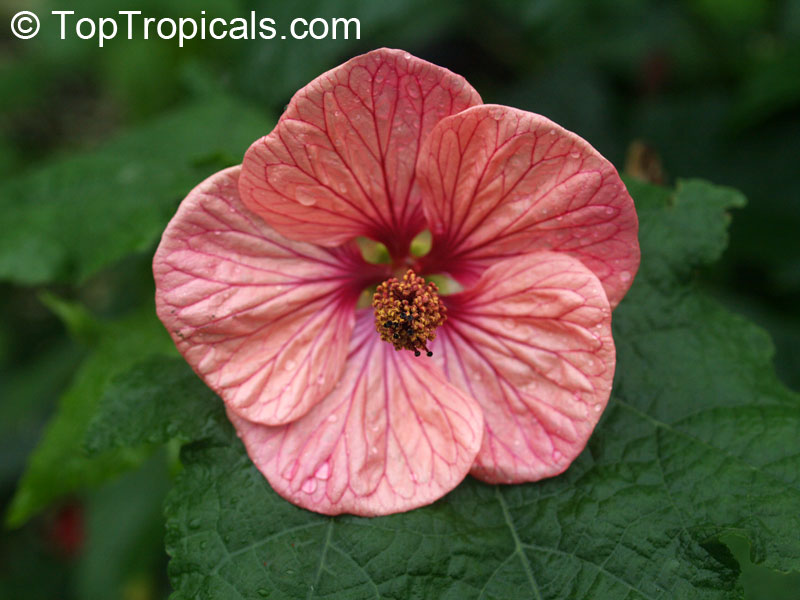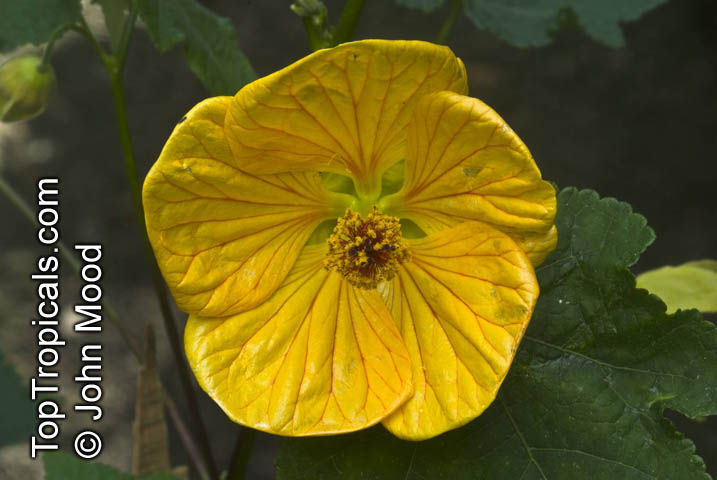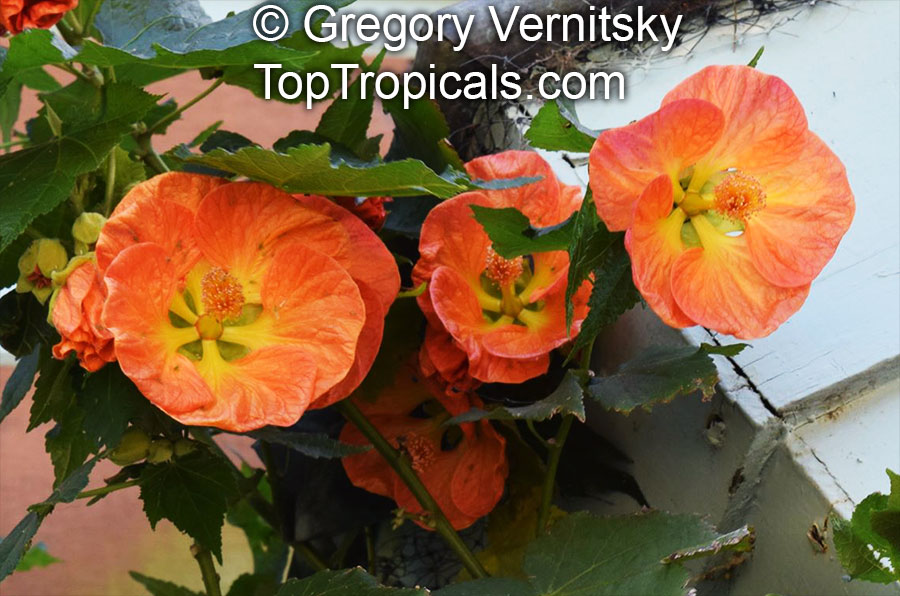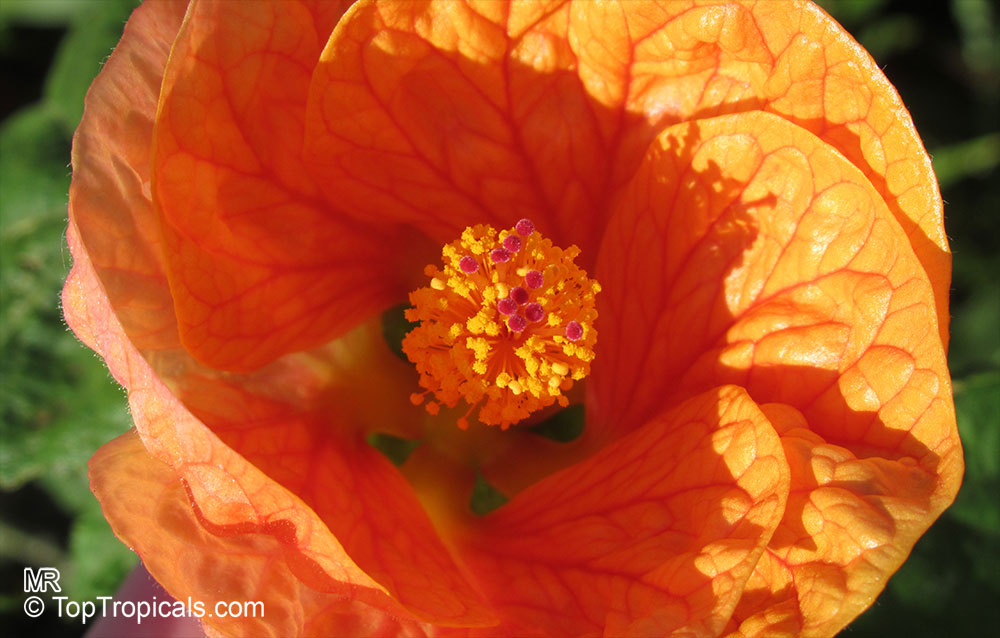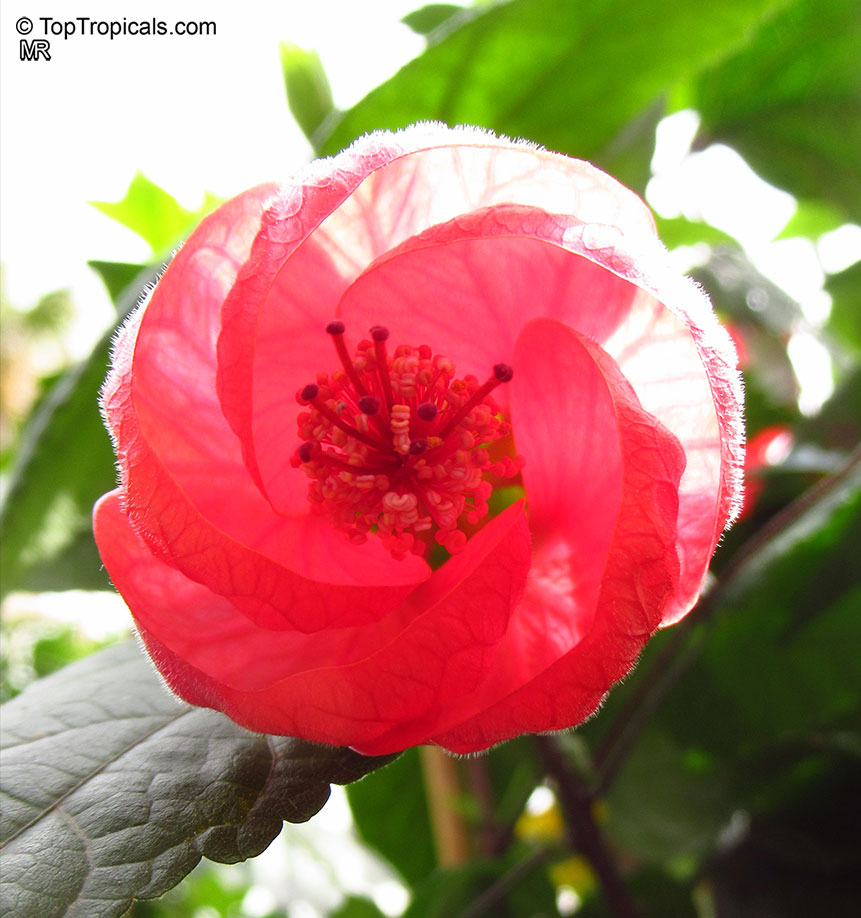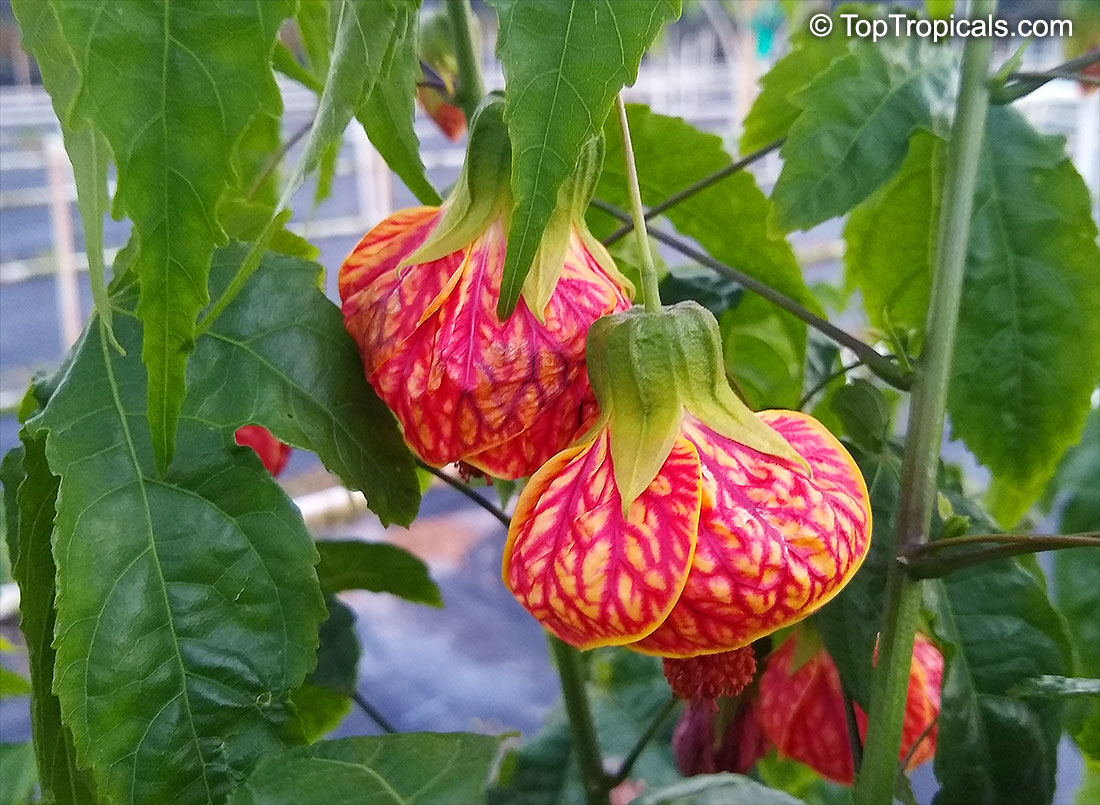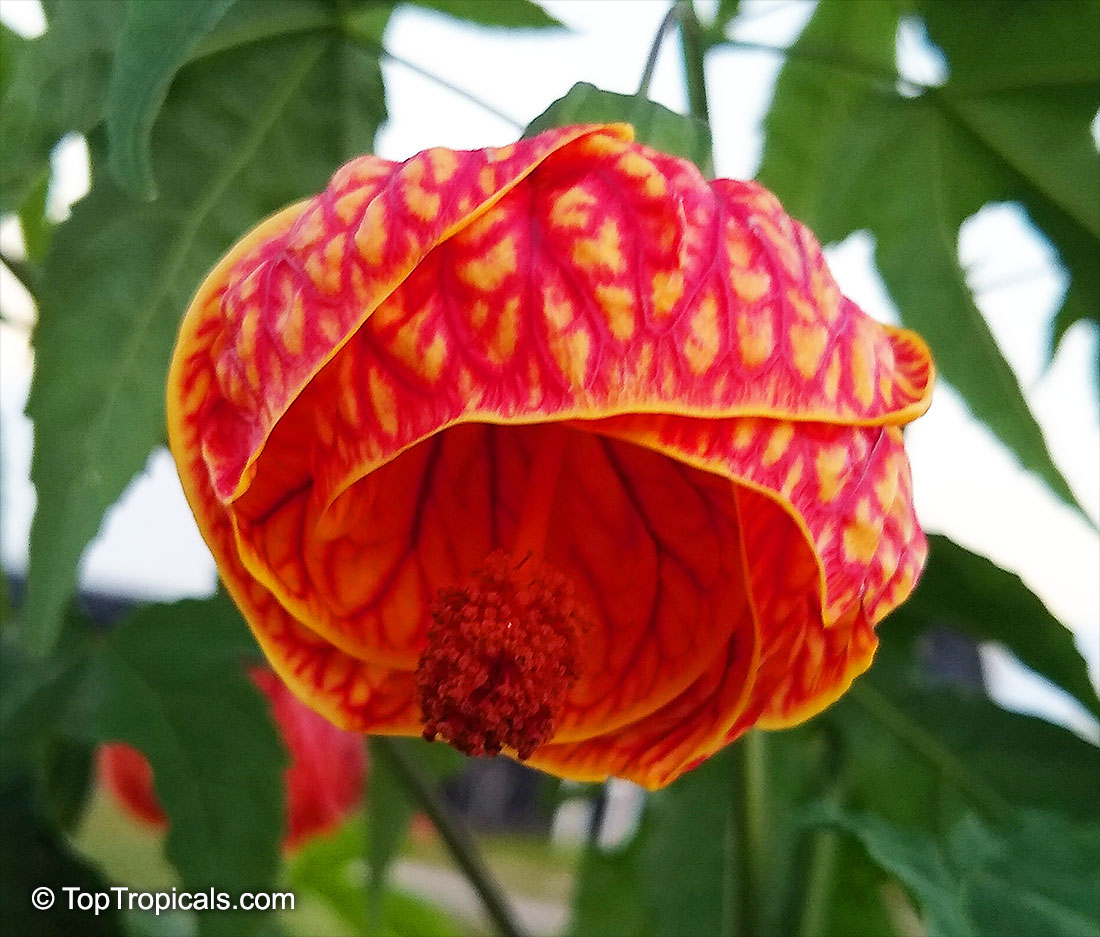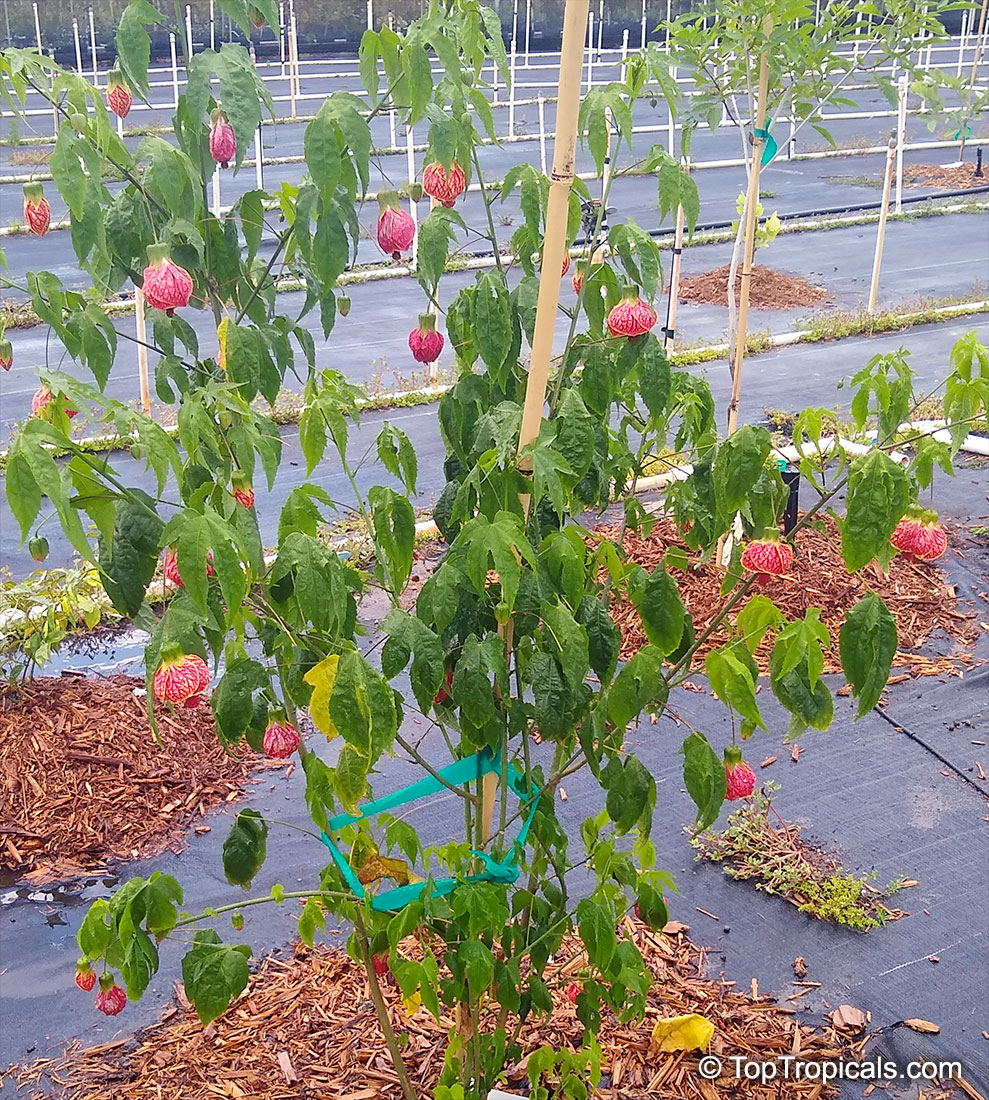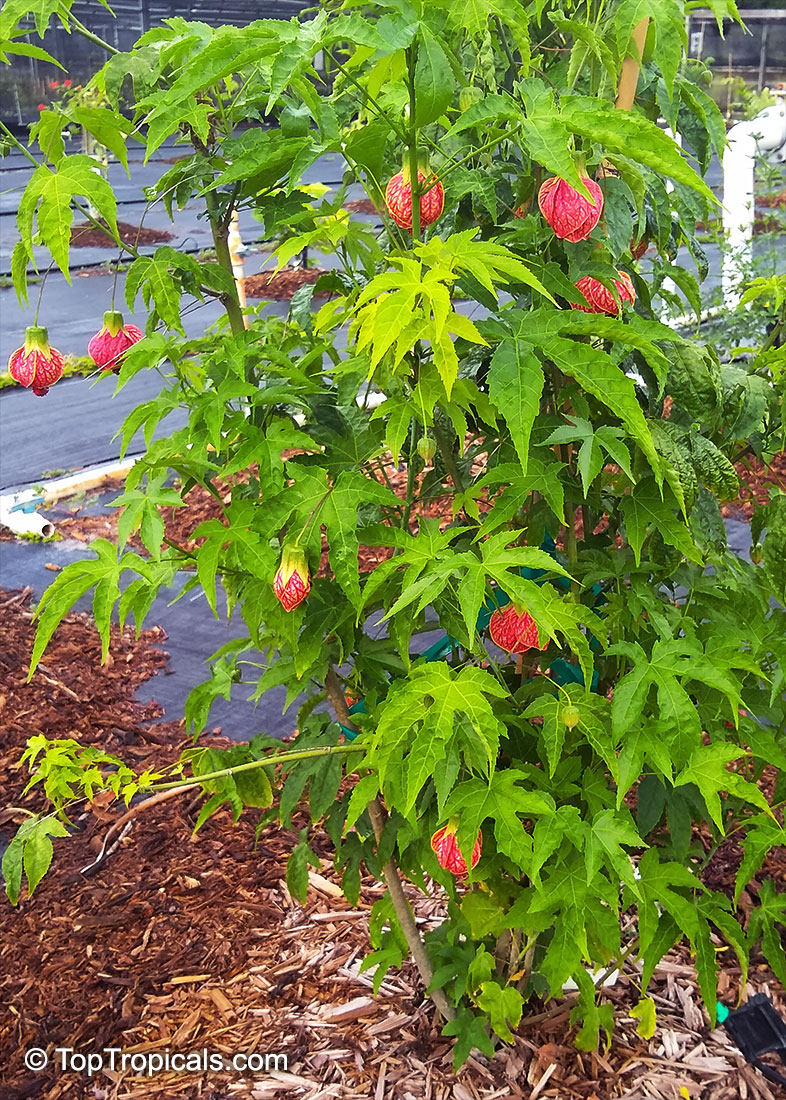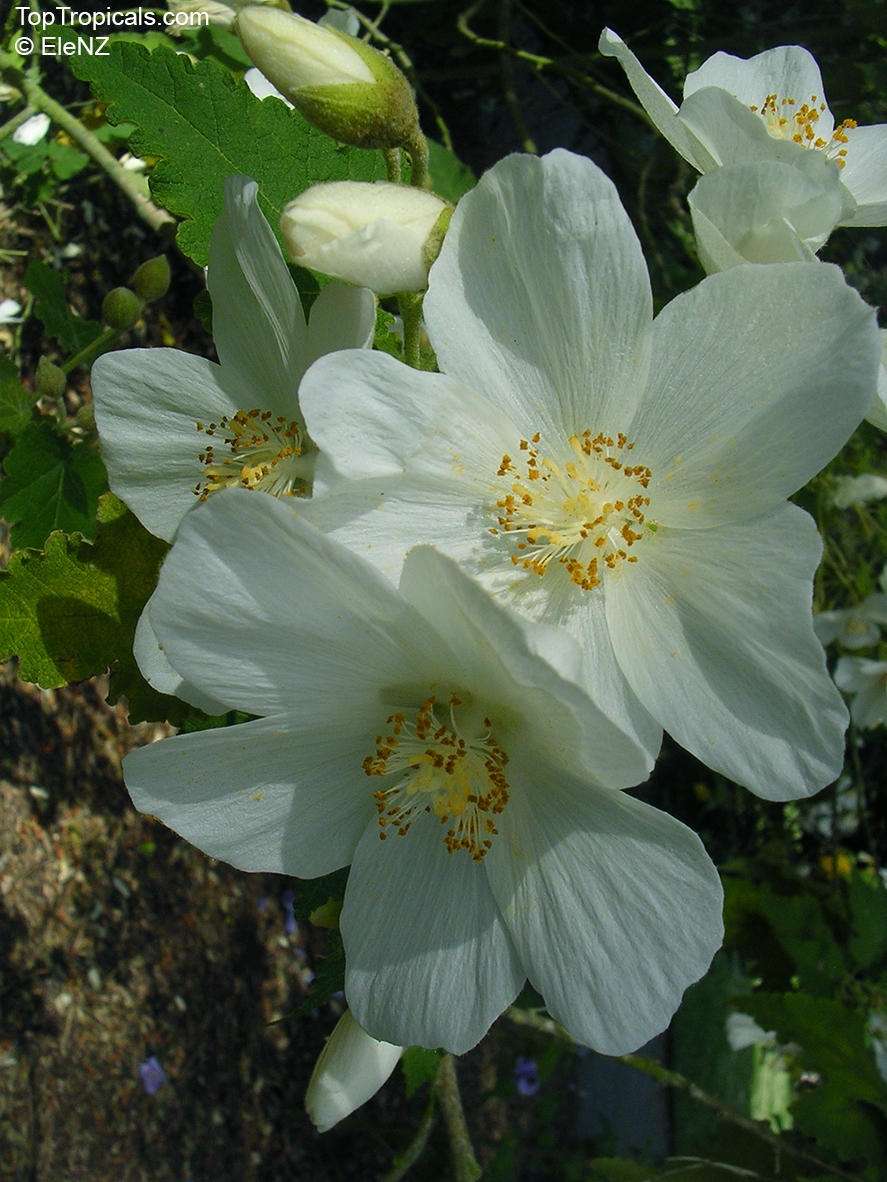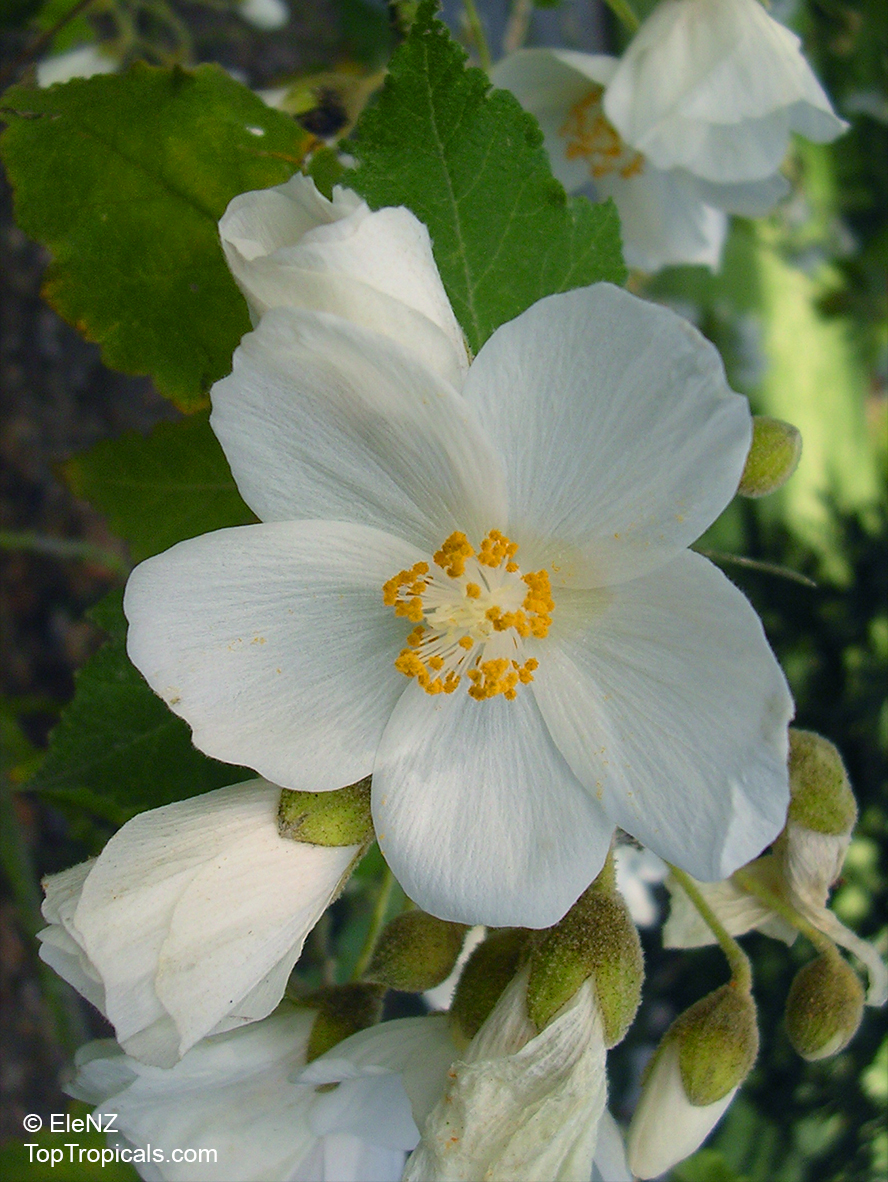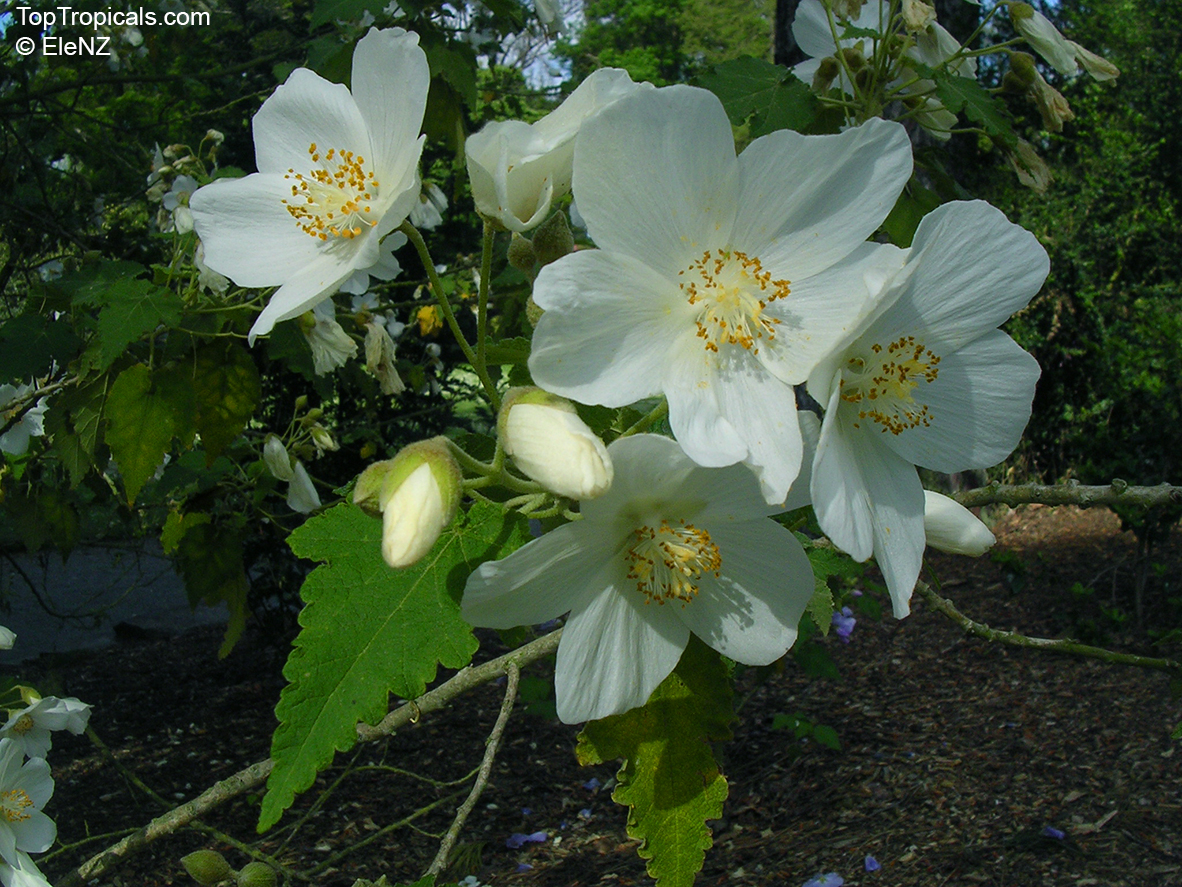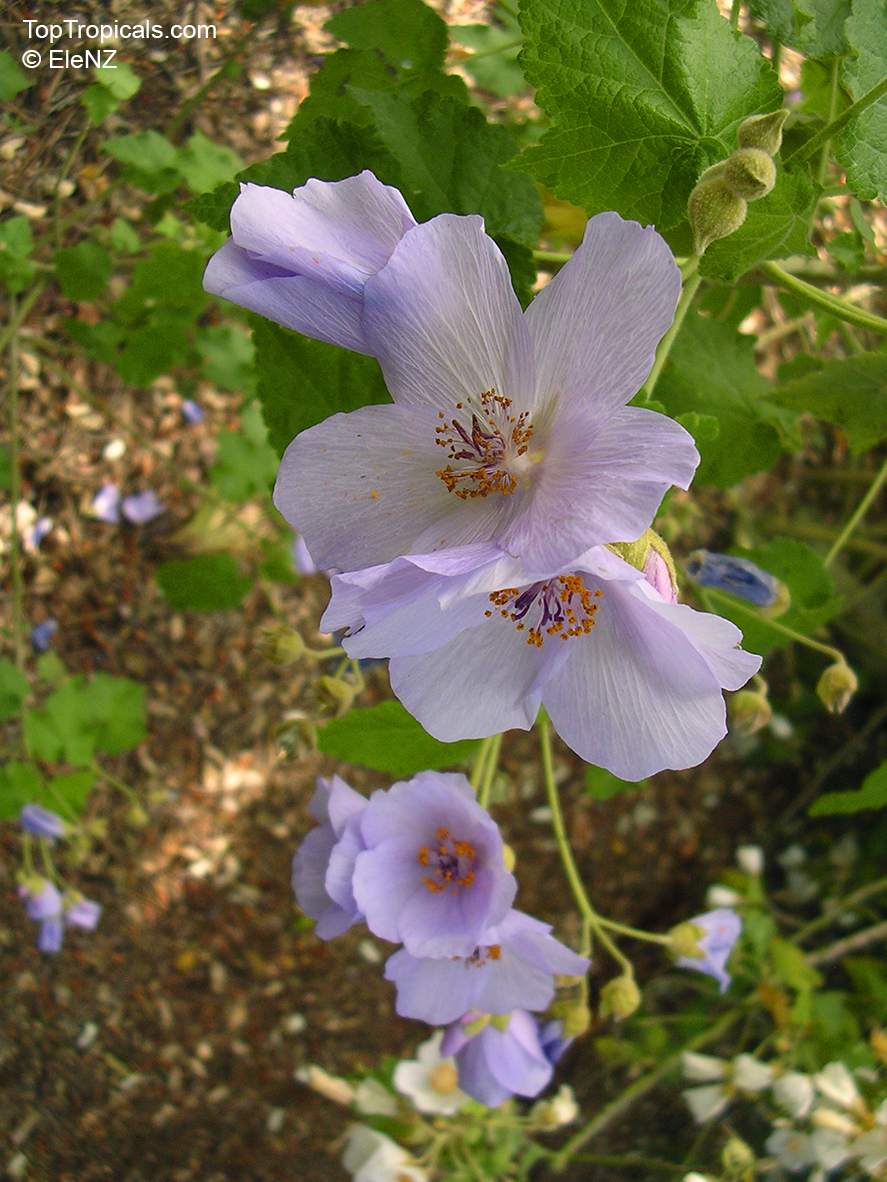Malvaceae - Botanical Family
Top Tropicals Plant Encyclopedia
| Number of plants found: 188 | Next | 
|
Go to page: | 1 | 2 | 3 | 4 | 5 | Last |
Botanical names: Abelmoschus esculentus, Hibiscus esculentus
Common names: Okra, Bamia, Gombo
Family: Malvaceae
Origin: Africa








Abelmoschus esculentus, commonly known as okra, is a flowering plant that is native to Africa. It is a large, fast-growing shrub, growing 5-10 ft tall and producing beautiful white, off-white, and yellow-orange flowers. This plant runs on a shorter lifecycle than most other shrubs, taking only 120-165 days to mature.
Okra does best when grown in warm climates, where it can receive strong direct sunlight, and regular watering. It has adapted over time to thrive in USDA hardiness zones 9-11. As it is a climacteric crop, it benefits greatly from warm, humid days and cool nights.
Regular water needs will depend on the local climate, but okra requires moderate regular watering, even during seasonal to periodical droughts. Soil with a high drainage level and well-aerated conditions will help the plant thrive and reach its full potential.
The plant produces striking large edible seeds within green, finger-like pods. Young, tender okra can be used in stir-fry or soups either blanched or pickled, and raw okra is often used in cold salads. When cooked, it is similar to asparagus. In terms of taste, some describe it to be similar to a combination of mushrooms and eggplant.
Okra is packed with nutrients, including vitamin C, calcium, and potassium. It also contains a healthy amount of dietary fibers, which can help maintain healthy digestion. Health benefits of okra also includes its ability to strengthen the immune system, lower stress, and improve skin and hair health.
In terms of yield, the plant can produce up to few hundred pods per plant, depending on the variety and local climate conditions. Therefore, okra is a great choice whether you are looking to have some fresh fruits in your household.
Botanical name: Abelmoschus manihot
Common names: South Sea Salad Tree, Bele tree, Sunset Muskmallow, Sunset Hibiscus, Hibiscus Manihot
Family: Malvaceae
Origin: Southeast Asia
Hardiness: 20°F









Its palmate leaves are highly dissected with five to nine deep lobes. The largest, widest leaves form at the base of the plant, where there may be some small side branches. The blooms (4-5" in diameter) are pale yellow with a dark maroon to purple center eye, and emerge from the terminal end of a central flowering stalk.It is easily propagated from cuttings, easy to cultivate, relatively disease-resistant and even is considered to be of medicinal value. It is widely planted either along borders of gardens or as an intercrop throughout many traditional gardens in the tropics. A nice flowering addition to the vegetable garden.
Botanical names: Abelmoschus moschatus, Hibiscus abelmoschus
Common name: Musk Mallow
Family: Malvaceae
Origin: South East Asia










Valued as an ornamental plant, due to its colorful and attractive flowers. The leaves are alternate, rough, hairy, heart-shaped or 3-5 lobed with serrated margins. Flowers are Hibiscus-like.
Cultivated for aromatic oil from seeds. Young leaves, shoots, and unripe seedpods are cooked as a vegetable.
Botanical name: Abroma augusta
Common name: Devil Cotton
Family: Malvaceae
Subfamily: Sterculioideae
Origin: Tropical Asia








The leaves have an oblong shap.The seeds are contained in a cotton-like envelope. Dark, maroon flowers are formed in terminal panicles. The leaves and stems are covered with soft, bristly hairs that are extremely irritating to the touch.
Botanical names: Abutilon grandifolium, Sida grandifolia
Common names: Hairy Indian Mallow, Hairy Abutilon
Family: Malvaceae
Origin: South America





Botanical names: Abutilon indicum, Sida indica, Abutilon hirtum
Common name: Indian mallow
Family: Malvaceae
Origin: Southeast Asia





Mostly used as an indoor houseplant, the flowering maple is a good alternative for those in climates that aren't suitable for maples to grow naturally. The trunk is somewhat woody, with two to three inch leaves which are quite similar to maple leaves. So far, rarely used as bonsai, but they are readily available and have 2 inch bell-shaped flowers which bloom year-round to recommend them. Shape is usually maintained through pruning, however wiring should work as long as care was taken to protect the branches. These plants do fine in ordinary potting soil.
Abutilon indicum var. hirtum (Abutilon hirtum) is harvested from the wild for local use as a source of fibre, medicines and food.
Botanical names: Abutilon megapotamicum, Abutilon vexillarium, Callianthe megapotamica
Common names: Flowering Maple, Trailing Abutilon, Brazilian Bell-flower
Family: Malvaceae
Origin: Brazil, Uruguay








Brazilian Bell-flower is a fun and easy-to-grow hummingbird magnet for the perennial border. In the garden or in a hanging container, it spreads to several feet wide in a single season. In the wild, Abutilon megapotamicum reaches 8' tall, but in cultivation arely exceeds 5' tall, and less when grown as a potted plant. During warm months, the plants are laden with cool 2" hanging lantern-like flowers composed of red calyces above the yellow petals, ending with its bright red privates dangling beneath... all carefully arranged between the thumb-sized green leaves.
Botanical name: Abutilon pictum
Common names: Golden Rain Flowering Maple, Thompsons Flowering Maple, Bell Flower
Family: Malvaceae
Origin: South America








Abutilon pictum, also known as the Golden Rain Flowering Maple, is a fast-growing tropical flowering shrub that is prized for its speckled, maple-shaped leaves and showy, coral-orange flowers. This striking shrub is a great accent or border plant for areas that don't experience frost, as it can easily be espaliered against a wall. Abutilon pictum Thompsonii, a variety with golden leaf variegation and peach colored flowers with red veins, is an especially showy container specimen and a beautiful addition to any bright patio or indoor location.
Abutilon pictum is native to South America and is grown in USDA Plant Hardiness Zones 8-10. It requires a warm climate and full sun exposure to thrive, as well as regular watering. This plant produces red, crimson and vinous flowers that attract butterflies and hummingbirds. Varieties with yellow and orange flowers are less common. Mature plants are cold hardy, at least for a short time, to temperatures in the high 20's Fahrenheit. In areas where frost is a problem, it is important to provide some protection for the blooms and for the plant during the coldest periods.
When grown in a pot, Abutilon pictum prefers soil that is well-draining, rich in organic matter and slightly acidic. It requires more frequent watering in the hot months, but it is important not to allow the soil to become soggy. When cared for correctly, this vibrant shrub will provide a spectacular show of beauty. In colder growing regions, be sure to use a container, and choose a large pot with plenty of drainage holes. Provide enough sunshine, water regularly, and fertilize with general-purpose compost in the spring. Not only is Abutilon pictum beautiful, but it also provides a wonderful habitat for larger butterflies, bees, and hummingbirds. This can be further enhanced by placing the plants in a sunny, ambient environment, and providing them with a reliable water source and some mealworms, which they seem to love!
Botanical name: Abutilon sp.
Common names: Flowering Maple, Weeping Maple,Chinese Lantern
Family: Malvaceae
Origin: South America










Abutilon species, commonly known as flowering maples or Chinese lanterns, are evergreen or semi-evergreen shrubs grown for their attractive maple-like foliage and pendant, bell-shaped blooms. Many garden forms are complex hybrids, combining traits from several South American species. These hybrids are valued for their long flowering season, compact to medium growth habit, and wide color range including white, yellow, orange, pink, and red. Some cultivars feature variegated leaves, adding extra ornamental appeal.
Hybrid abutilons thrive in full sun to partial shade and prefer fertile, well-drained soil with regular watering. They benefit from pruning in early spring to maintain shape and encourage branching, and pinching growing tips promotes a bushier form. Hardy in USDA Zones 8-11, they can tolerate brief drops to near freezing but require frost protection. In colder climates, hybrids are well-suited to container culture, allowing them to be overwintered indoors or in sheltered areas. Regular feeding during the growing season supports continuous blooming, and spent flowers should be removed to prolong display.
Botanical names: Abutilon vitifolium, Corynabutilon vitifolium
Common names: Vine-leaved Abutilon, Flowering Maple, Indian Mallow
Family: Malvaceae
Origin: Chile








It usually grows to be anywhere between 5-10 feet tall, depending on the conditions in which it is grown and the amount of care it receives. If kept well mulched on the ground, it can easily reach its maximum of 10 feet. Full sun and semi-shade are both equally suitable for this species, but with regular water, the best of the blooms can be expected. The vines produce hanging buds of either a cheery pink or a more dainty, off white, depending on variety.
When mature, Abutilon vitifolium is cold hardy down to at least 30 degrees Fahrenheit for a short time, as determined by USDA Zone 8-11. If planted in colder regions, be sure to take extra care that the shrub is well potted and situated in an area protected from the winter weather. Mulch can also be helpful in keeping its roots warm and the shrub topped up with the right amount of water.
This large shrub is ideal for garden pathways or any border area in the garden, admired for its trumpeting petals of varying shades of pink, white and off-white. When in full bloom, it can even be seen through hedges or used as a specimen in moonlight gardens. With its height, hardiness and a little care, it can make a beautiful addition to any outdoor home.
| Next |  |
Use link to repeat this search:
https://toptropicals.com/cgi-bin/garden_catalog/cat.cgi?search_op=and&keyword_op=and&language=e&family=Malvaceae&number=10
&no_change_lang=1&user=tt&sale=1&first=0
